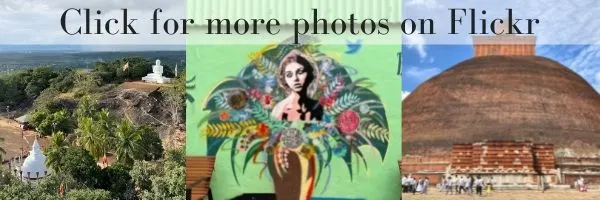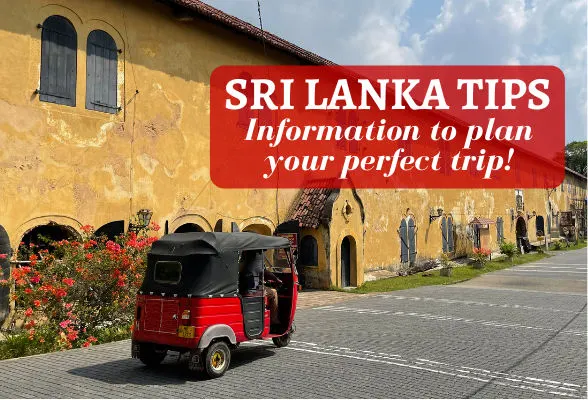The teardrop island of Sri Lanka makes a great winter sun getaway, with palm fringed beaches, ancient temples, lush tea estates, elephants and plentiful wildlife. We spent 3 weeks touring around and had a fantastic time travelling by tuk tuk, train and car to see as much as possible. Here are some of the best things to do in Sri Lanka that we enjoyed, from heritage and art, to wildlife and beaches.
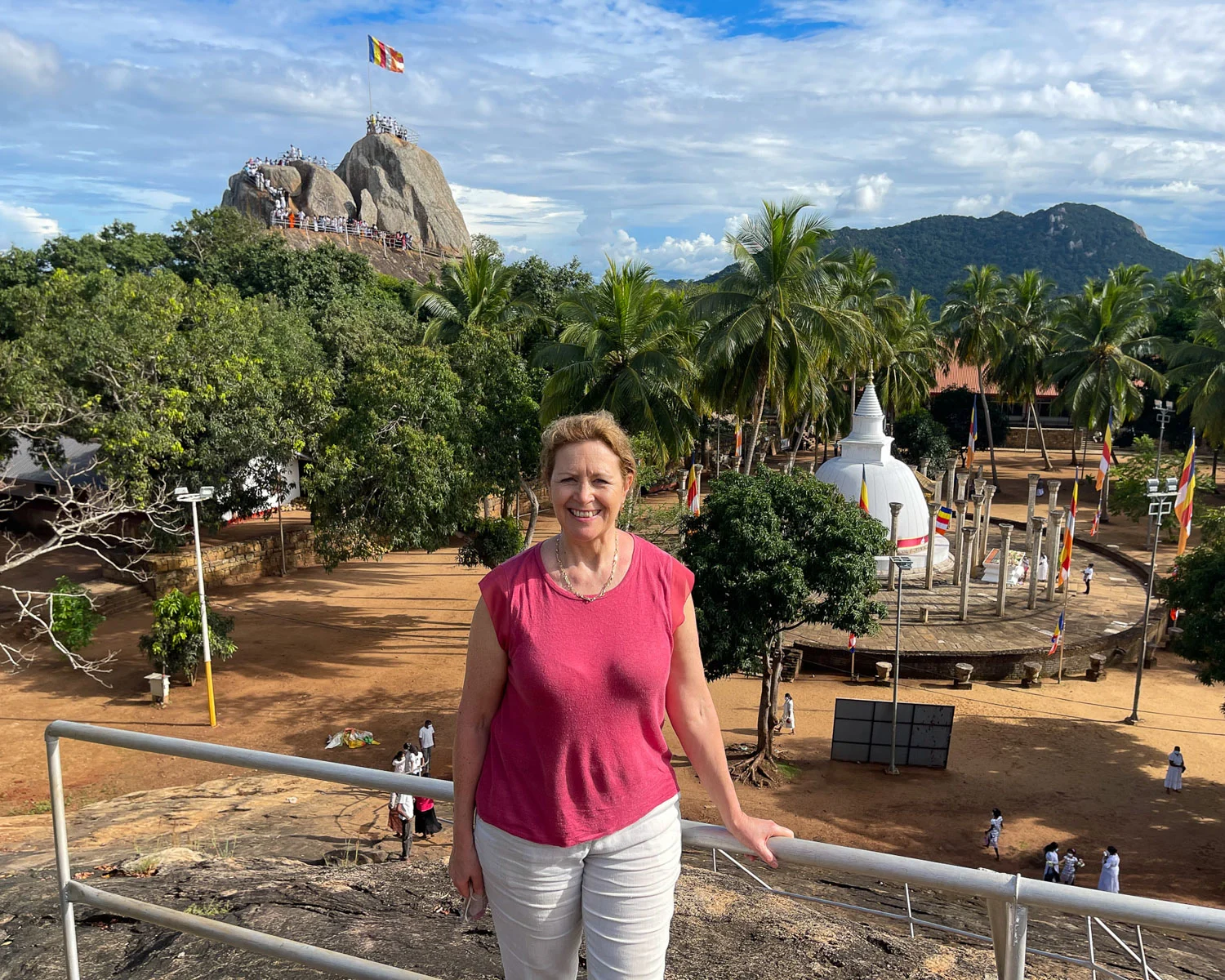
There’s something about Sri Lanka that gets under your skin – the friendly and relaxed people, the sunshine and the affordable prices. This was our second trip and we’d love to go back in the future and see even more! For more useful information, you can also read my article: Sri Lanka travel tips – information to plan your perfect trip.
This article may contain affiliate links that provide commission on purchases you make at no extra cost to you. As an Amazon Associate I earn from qualifying purchases.
1 Colombo
Sri Lanka’s capital is a blend of dynamic city life, shady green residential areas, old colonial charm and sea views bounded by the train tracks. Some travellers bypass Colombo, heading straight from the airport to the beach at Negombo, but we enjoyed our time there. A couple of days should be enough – here’s what we enjoyed.
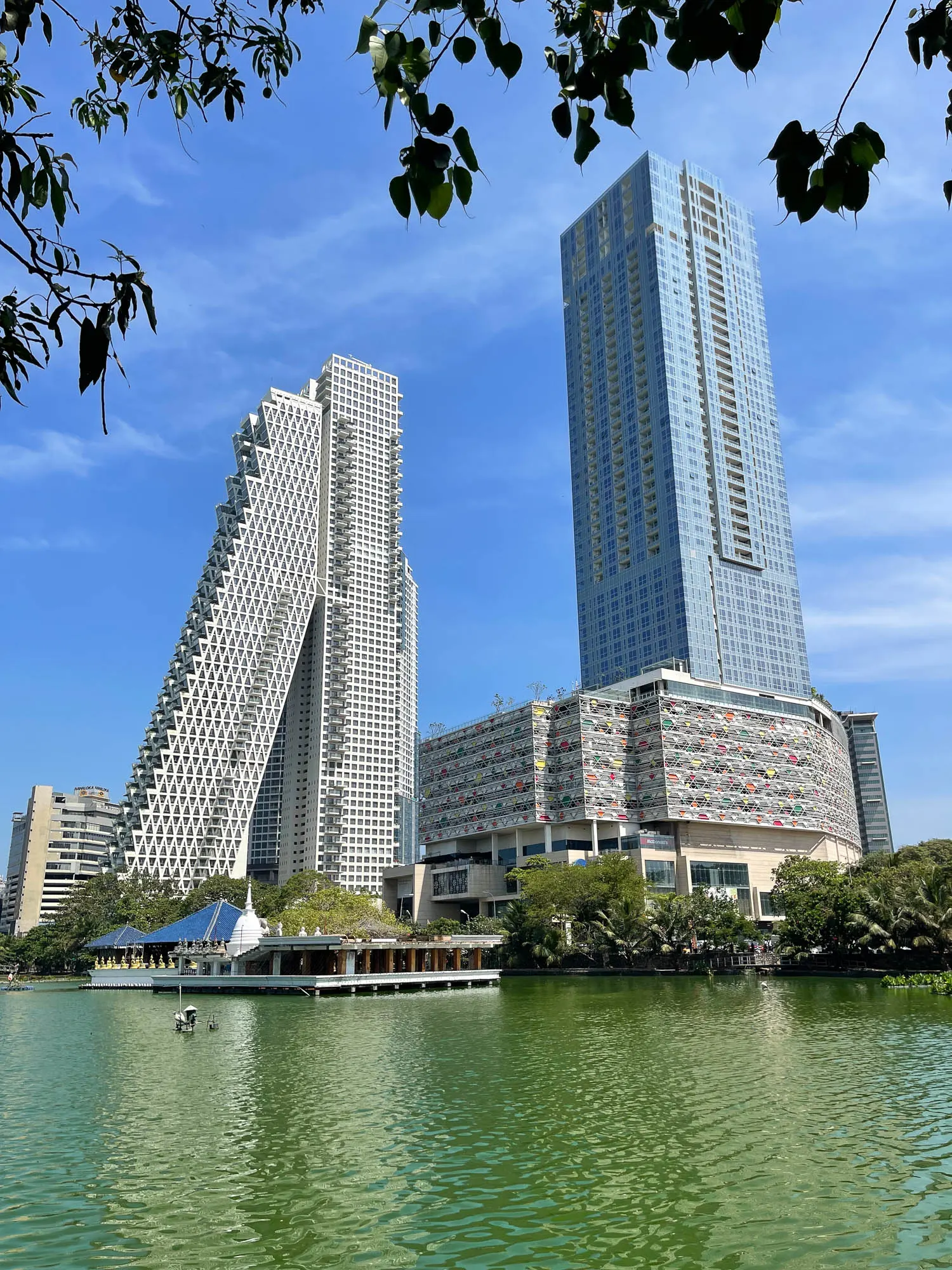
- Stroll around the the algae green waters of South Beira Lake with its Seema Malaka temple designed by Geoffrey Bawa.
- Admire the grand colonial buildings in the Fort area, including the atmospheric St Peter’s church.
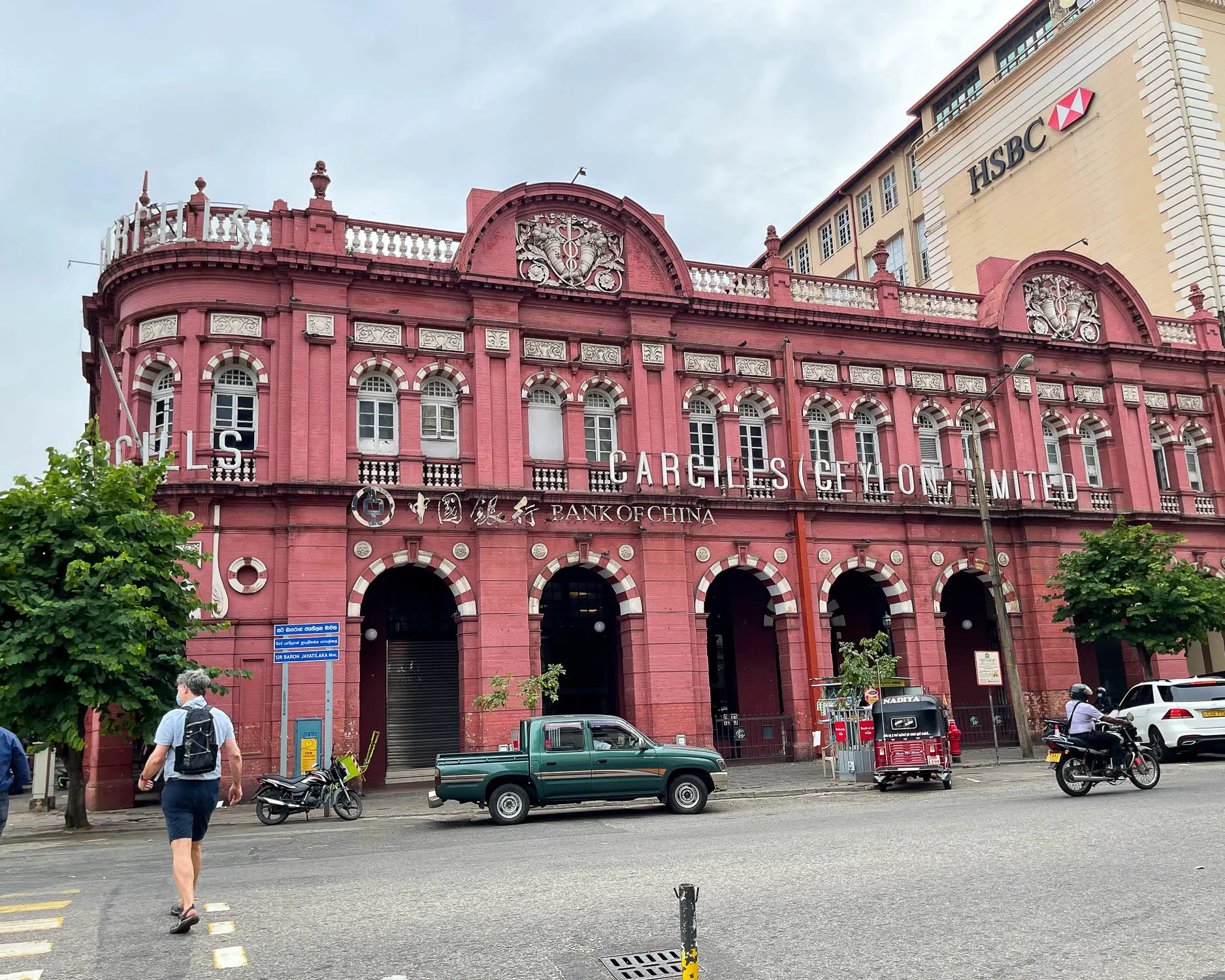
- Dive into the hectic bazaar area of Pettah – best to keep moving, or you’ll be enticed into a shop and talked into buying something!
- Walk through the shady Vihara Mahadevi Park to the Colombo National Museum, set in a gorgeous colonial era building, to get a taste of Sri Lankan art and history.
Check out the best 2-week Sri Lanka itinerary
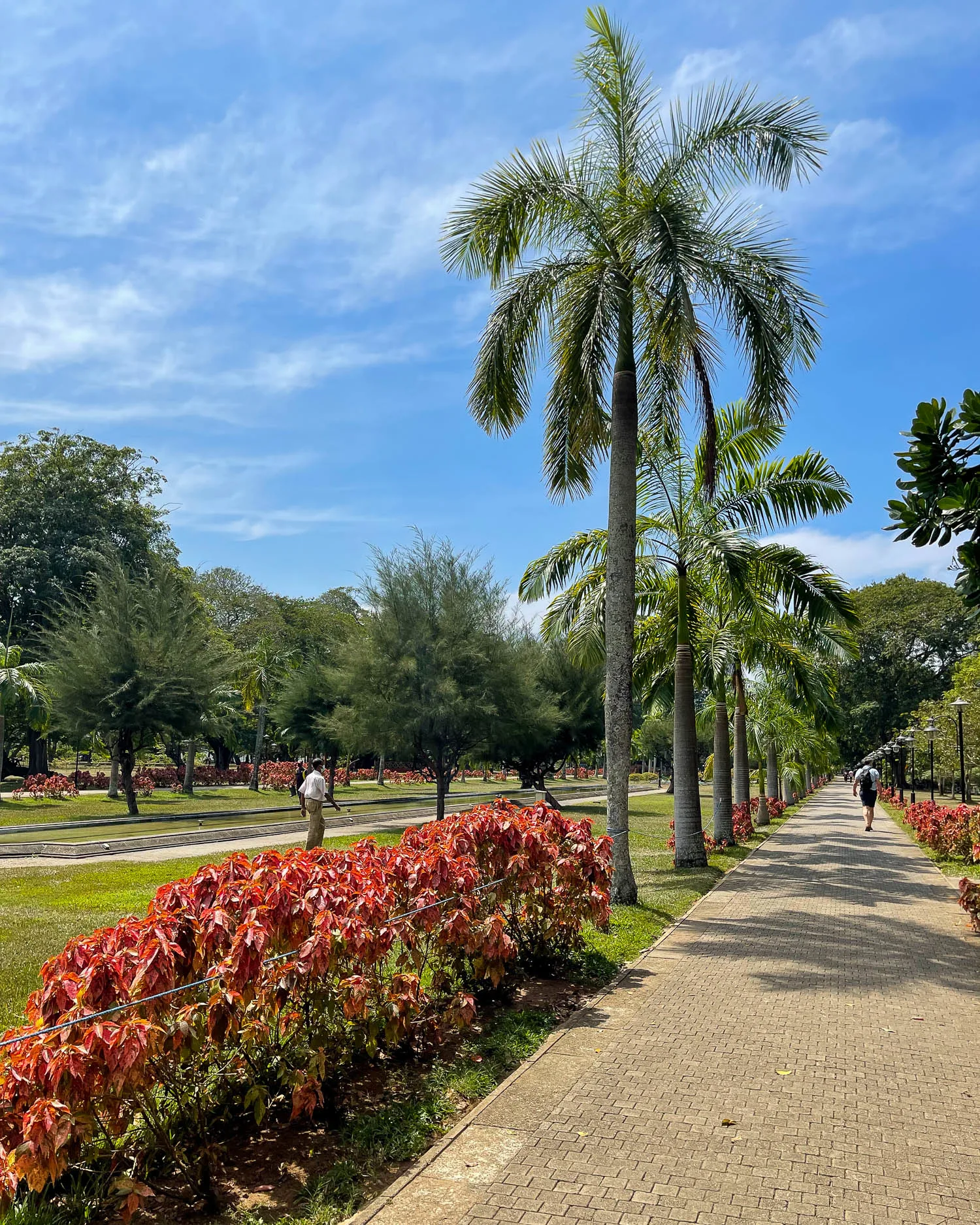
- Visit the former home of Geoffrey Bawa at No 11, 33rd Lane to glimpse into the vision and style of Sri Lanka’s leading architect.
- Take a sunset cocktail at the Galle Face Hotel and an evening wander by the sea at Galle Face Green.
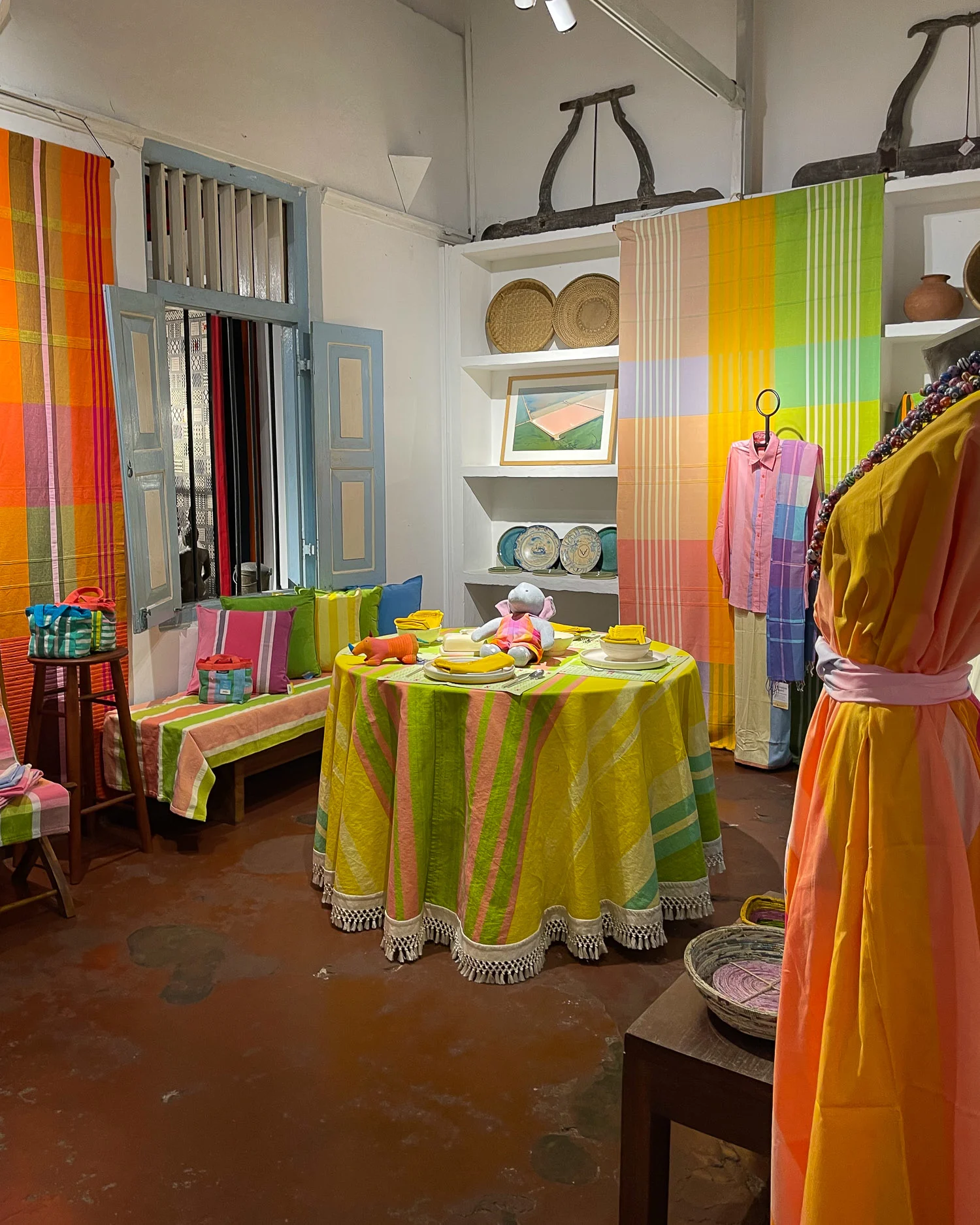
- Shop for authentic souvenirs from Sri Lankan designers at Barefoot (have a drink in their cafe), Paradise Road and Urban Island.
Sri Lanka’s Cultural Triangle
From Colombo we took a few days to tour the Cultural Triangle, an area north of Kandy that is one of the best places to visit in Sri Lanka for temples and historic sites. The northern plains were the centre of power for the ancient Singhalese kings for centuries, and the triangle drawn between Kandy, Anuradhapura and Polonnaruwa contains five UNESCO World Heritage sites, numerous temples and ancient monuments.
2 Sigiriya Rock – the palace in the sky
Probably the best known of the tourist attractions in Sri Lanka, Sigiriya is a rock fortress that rises a sheer 200m from the jungle covered plain. If you visit only one place in the Cultural Triangle, this should be it, offering a mixture of historical interest, an exhilarating climb and stunning views over the surrounding countryside.
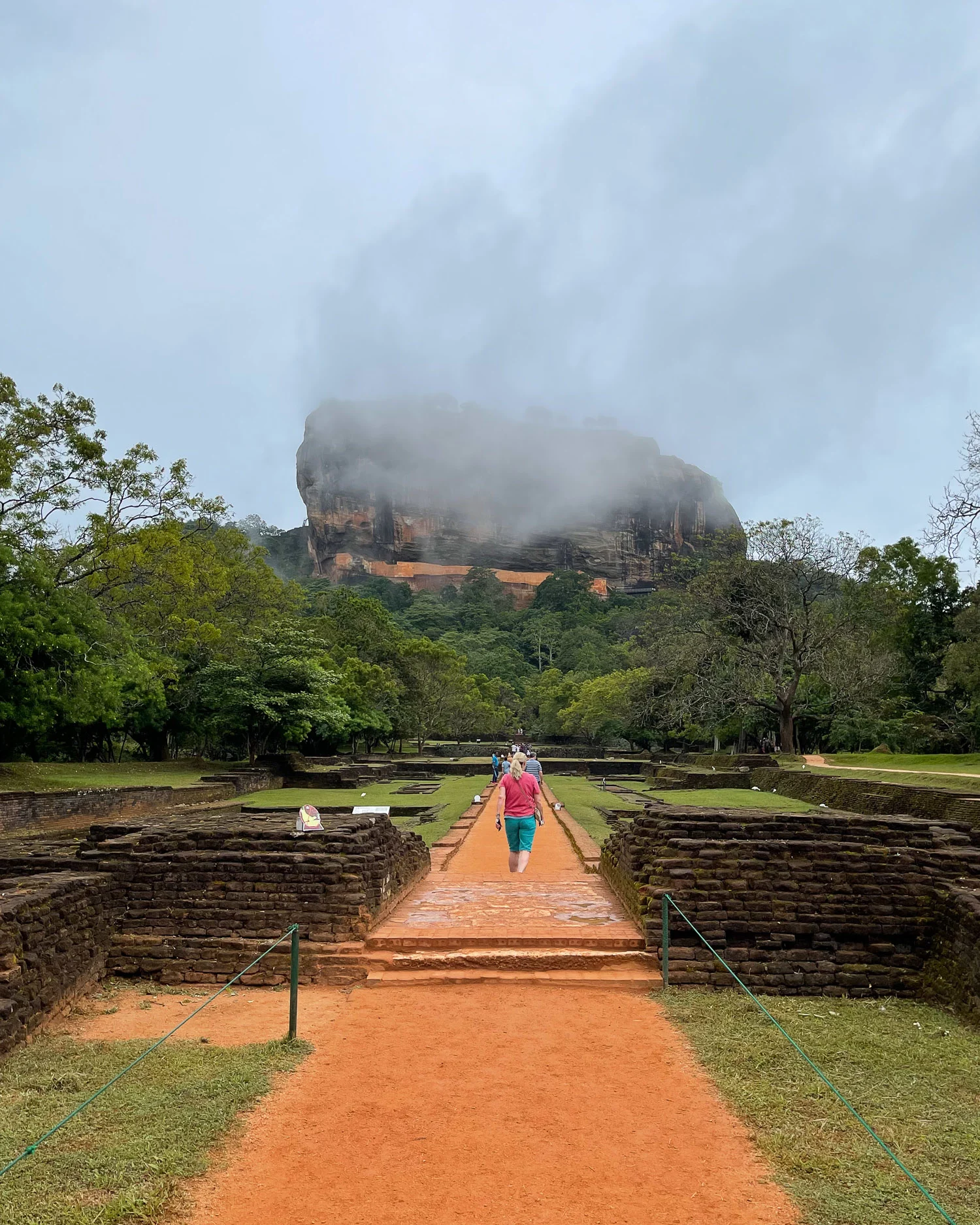
Don’t be put off by the 1200 steps that take you up to the top of Lion Rock. There are a number of stopping points for rests on the way up, and some of the staircases offer a two way system for up and down.
Unfortunately the weather was quite changeable when we visited and the top of the rock was shrouded in mist, but we still had a fun experience even though the views from the top were not as good.
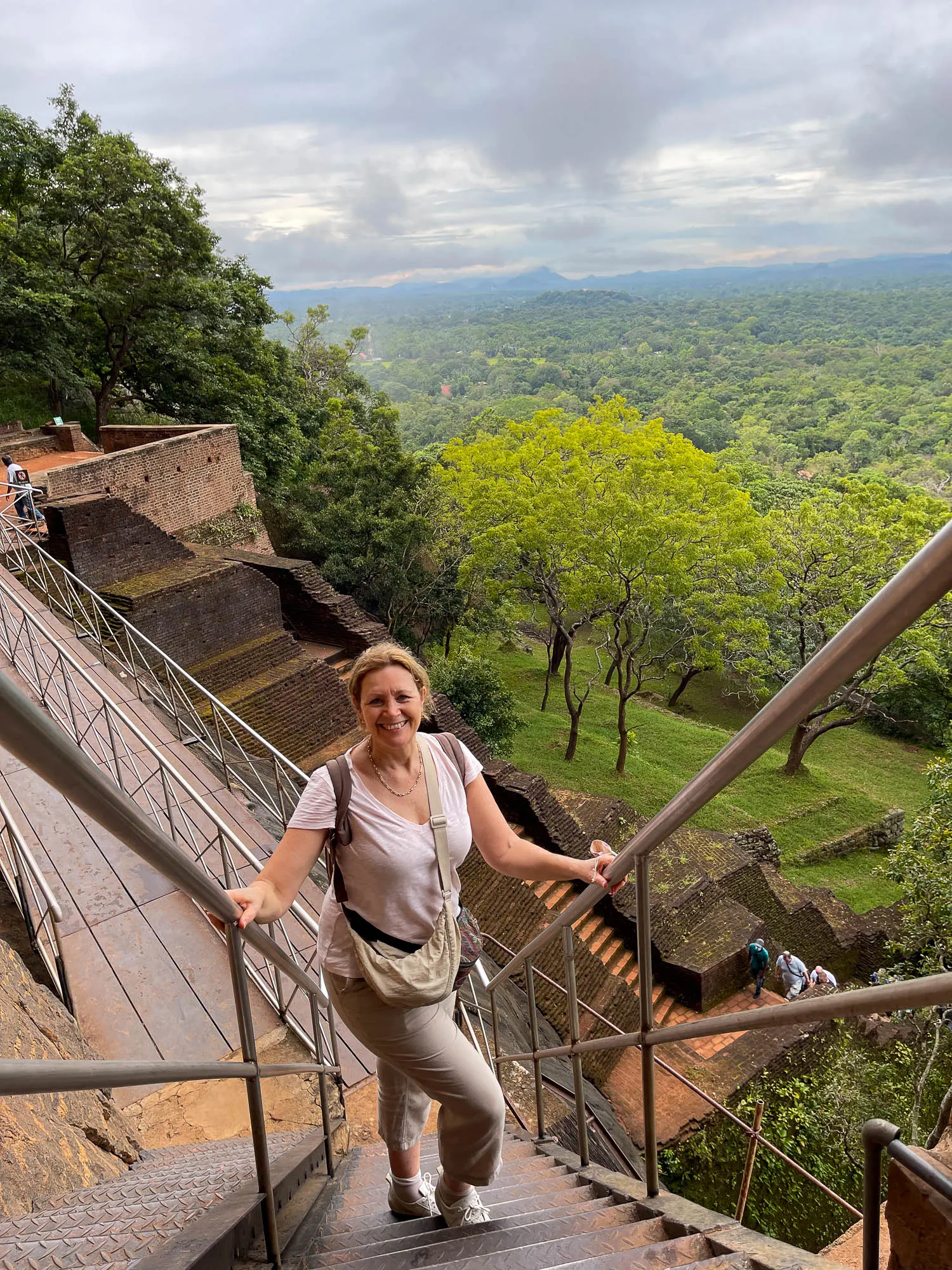
- The best time to visit is early in the morning, before the heat of the day, or around 3pm when the crowds and heat are starting to subside. Avoid visiting on rainy days as the steps and stairways could be slippery.
- Be sure to carry a water bottle and some snacks on your climb, as there is nothing to buy once you leave the ticket office, which is also the last opportunity for a bathroom stop. Allocate 2-3 hours for your visit to Sigiriya.
- Halfway up are the lion paws straddling the stairway, which is a nice place for a photo. The paws are all that remain of a giant lion statue that guarded the final stairway to the palace.
- Take some time to explore the ruined palace complex at the top of the rock, with a water tank and views over the ancient water gardens.
- On the way down you can climb a spiral staircase to see the frescoes of voluptuous water spirits, sheltered by a rocky overhang. The western rock face was thought to be covered with similar frescoes but only these 21 paintings remain. Sadly no photos of the frescoes are allowed.
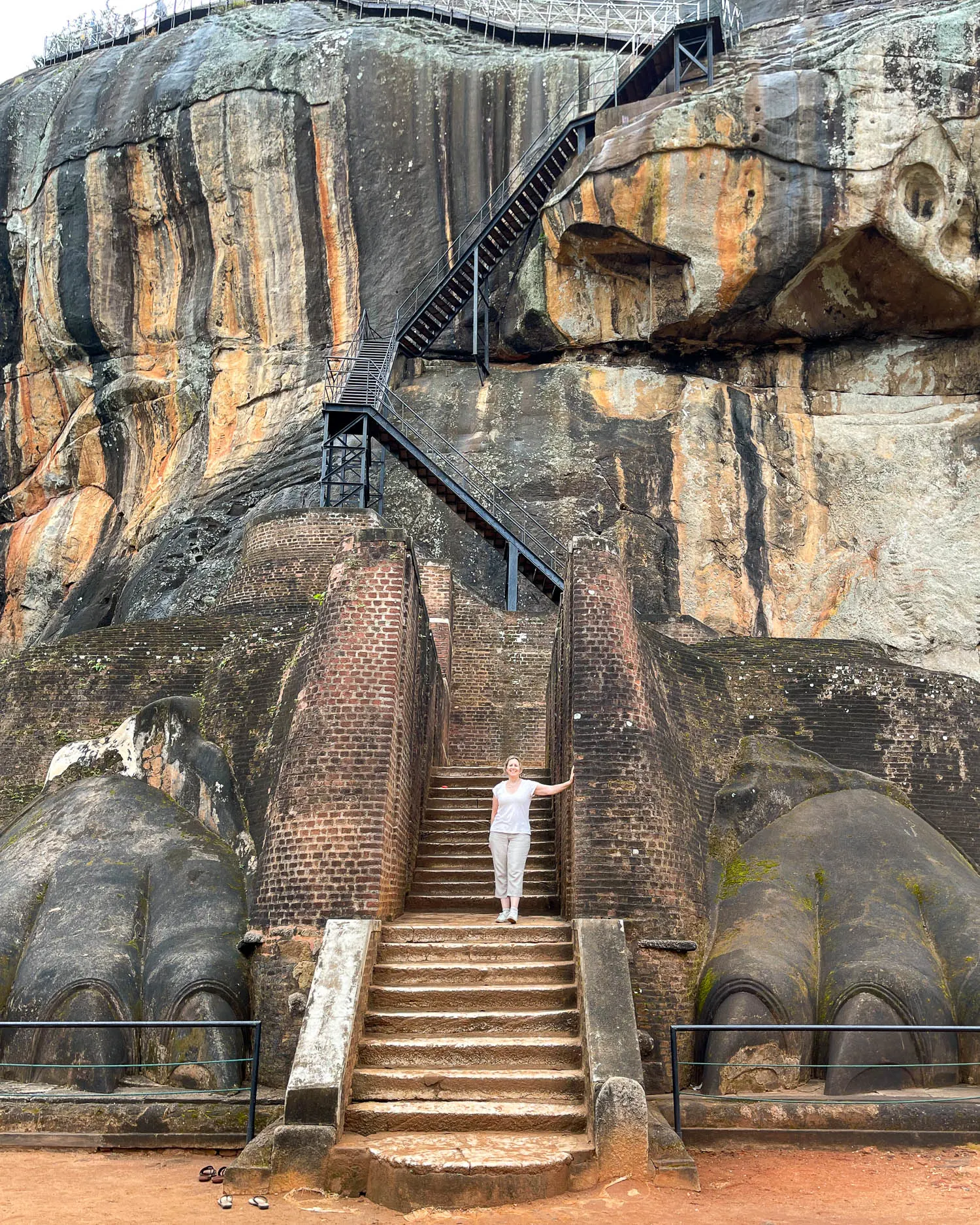
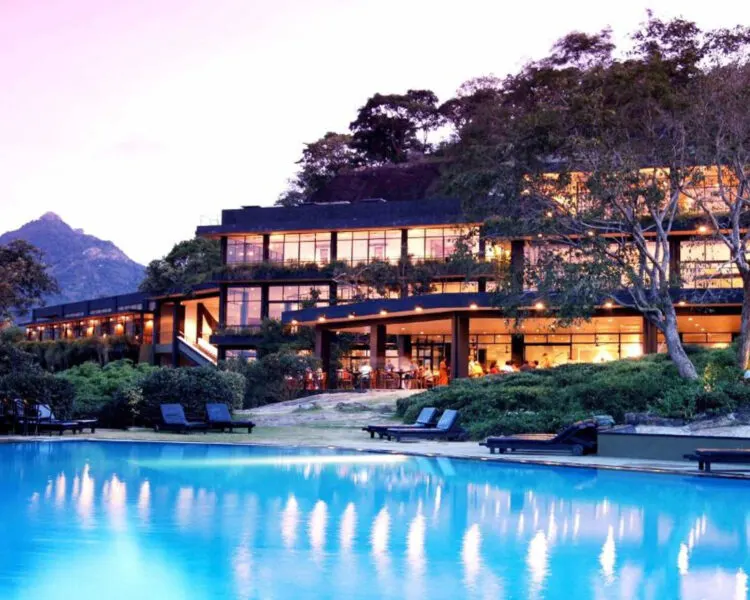
Stay at Heritance Kandalama near Dambulla – a design hotel by Geoffrey Bawa close to Sigiriya where we stayed
3 Pidurangala Rock – for views of Sigiriya
For the best views of Sigiriya, you can climb the nearby Pidurangala Rock, an increasingly popular spot for photographers and instagrammers. The climb takes you for a fee (1000 Rupees when we were there) past the small temple and meditation centre, although there are apparently other free routes to access the rock.
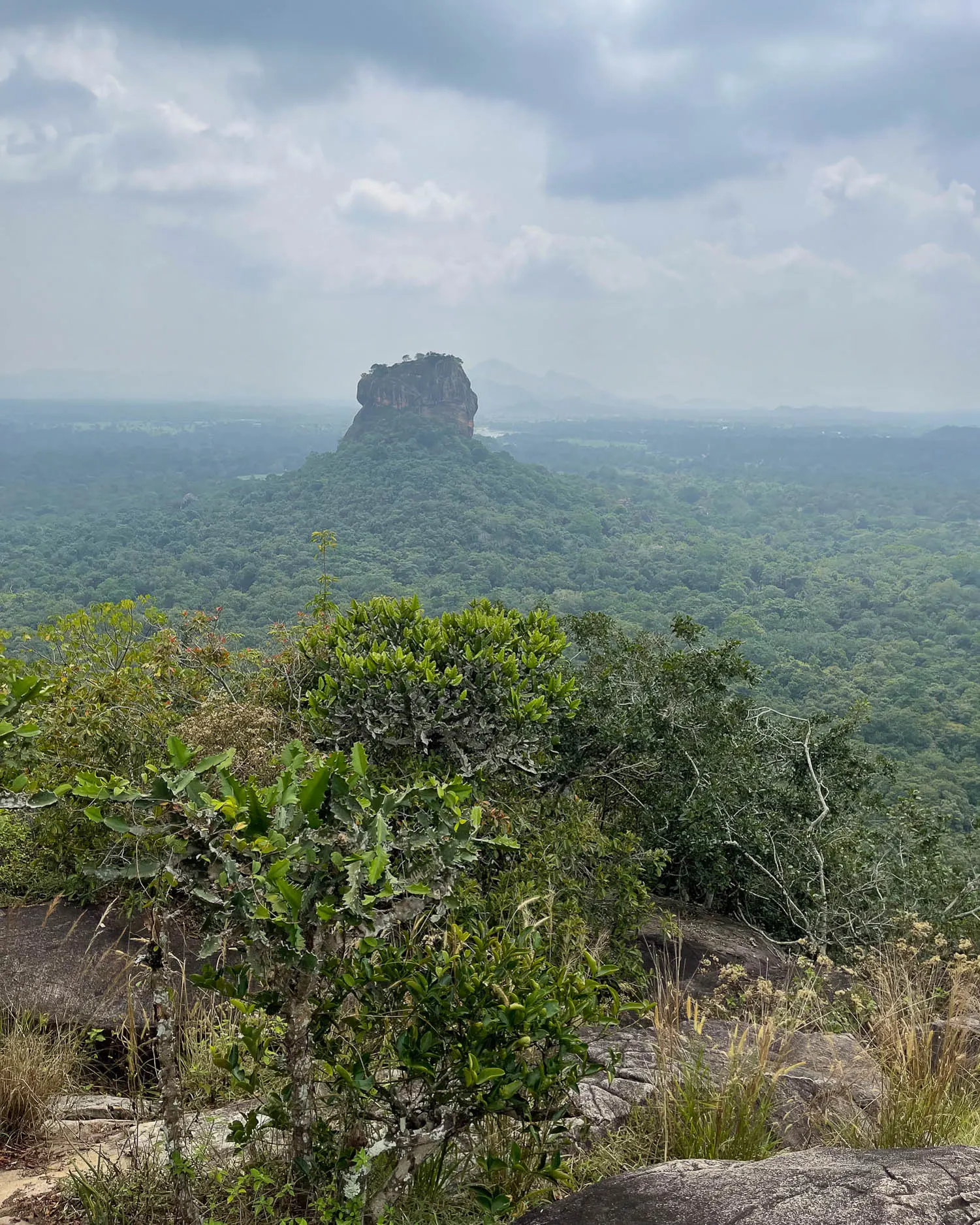
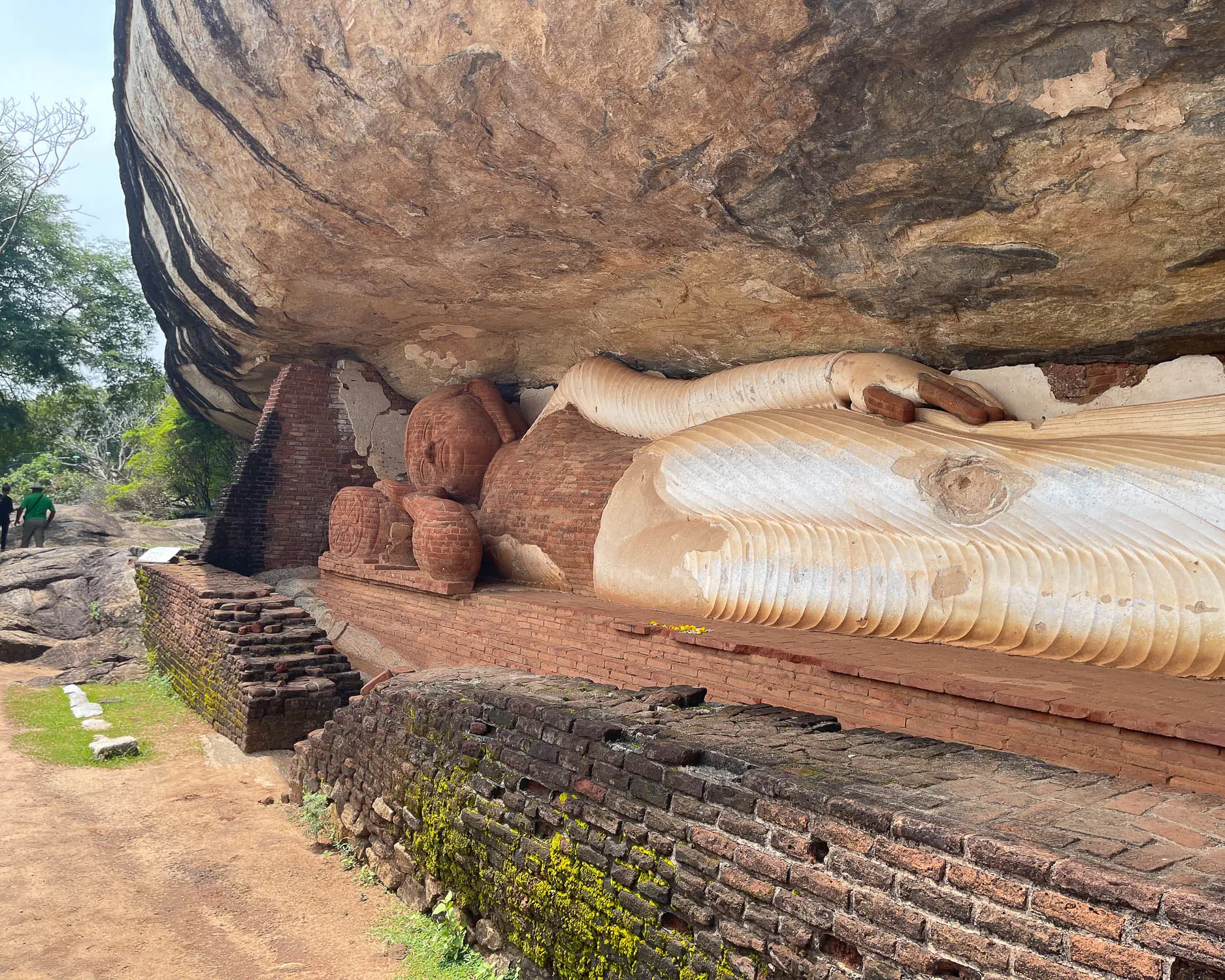
Easy stone and brick steps then take you up past the reclining Buddha statue under a rock overhang. From here the climb is a bit more tricky as you need to scramble over some large boulders and squeeze behind a rock, finally emerging on a rocky plateau with fantastic views. From the initial viewpoint where most people take their photos you can climb a little higher on the bare rock where there’s plenty of space.
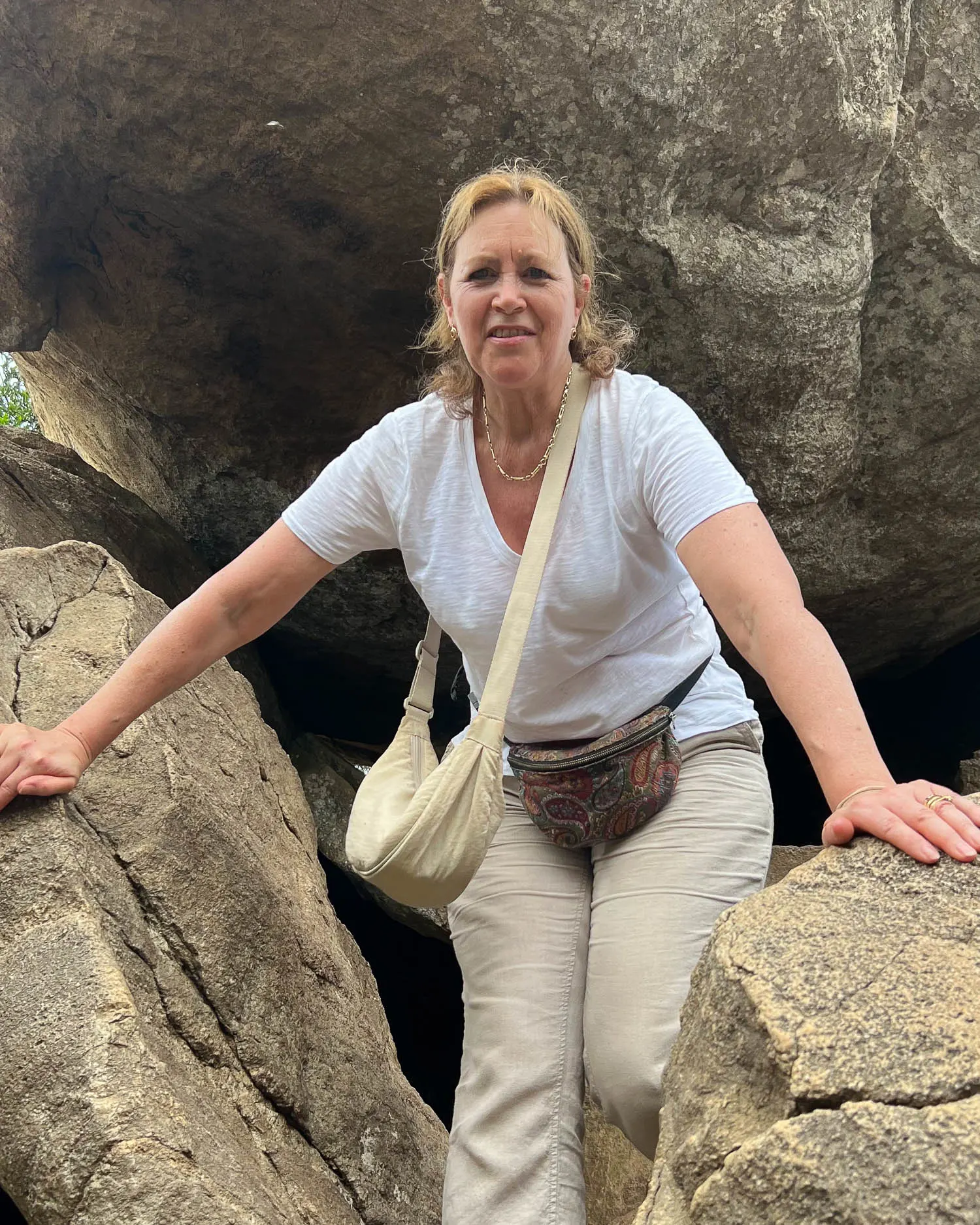
Many travellers climb the rock to see the sunrise glowing behind Sigiriya. Not being a fan of early starts and difficult climbs in the dark, we opted to go in the morning and still got wonderful views. This is not a climb that is suitable for young children and you need to wear trainers or hiking sandals.
You may also enjoy Sri Lanka travel tips – information to plan your perfect trip
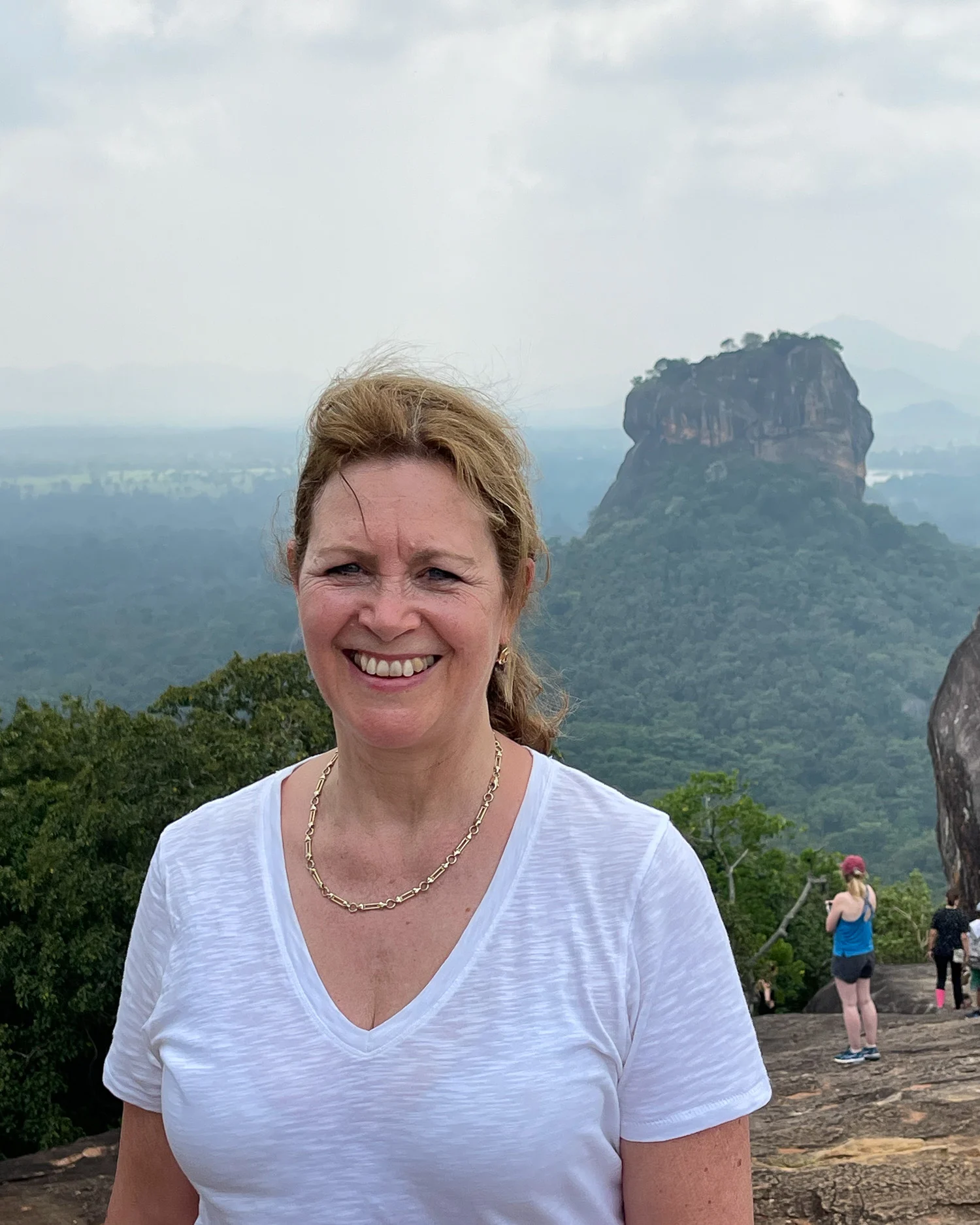

Need help to design your dream holiday? We’ve partnered with UK travel advisor Luxeco Holidays to create your personalised itinerary
4 Dambulla Cave temples – carved from the solid rock
The Dambulla cave temples date back to the 1st century and were carved by hand out of a rocky overhang. The five caves are filled with statues of Buddha, other religious subjects and colourful frescoes covering every surface of the temple interiors.
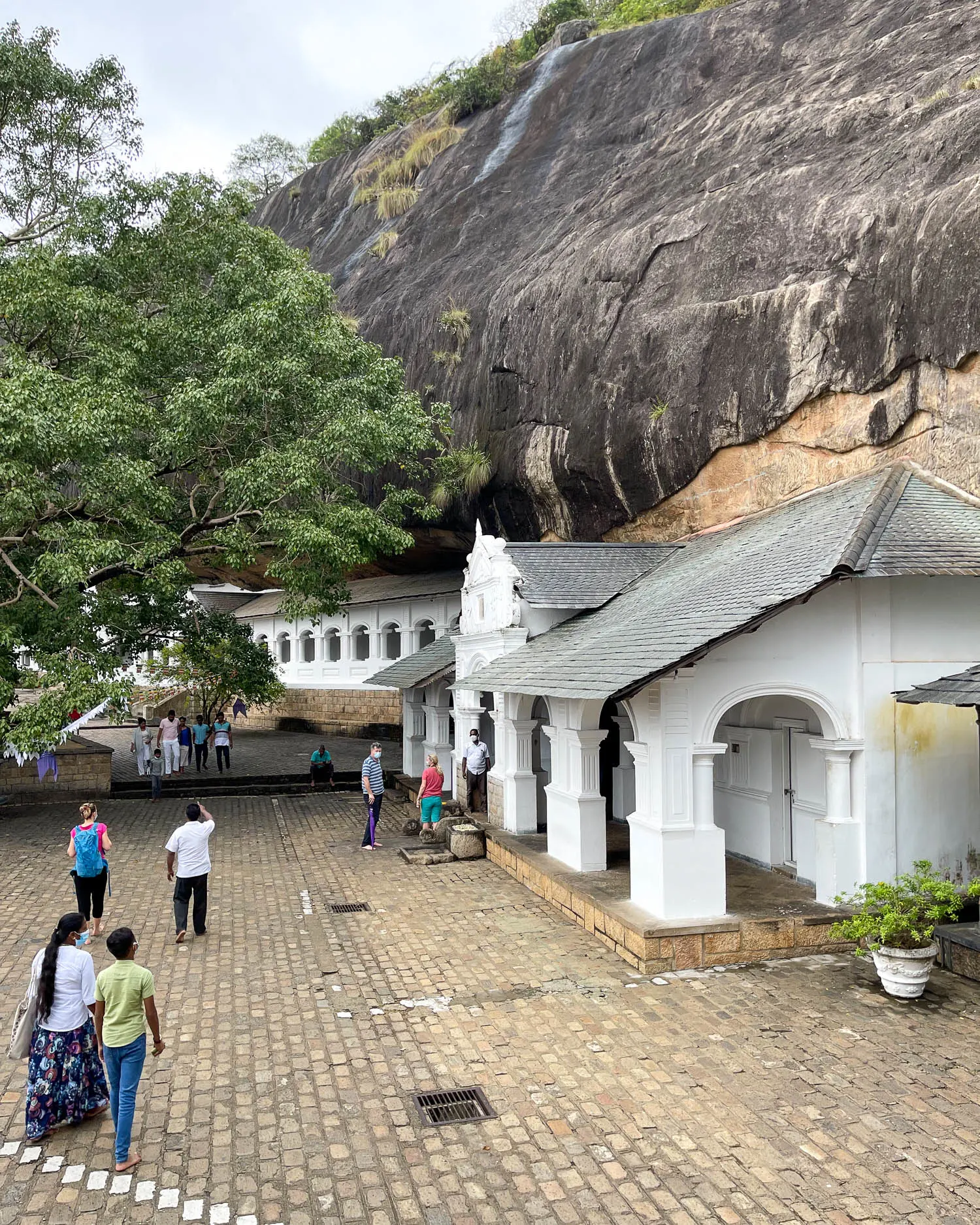
The figures in the first 4 caves include the 14 metre reclining Buddha carved out of the solid rock, with murals depicting scenes from the life of Lord Buddha. The fifth cave is the newest and smallest, with more recent statues constructed from brick and plaster.
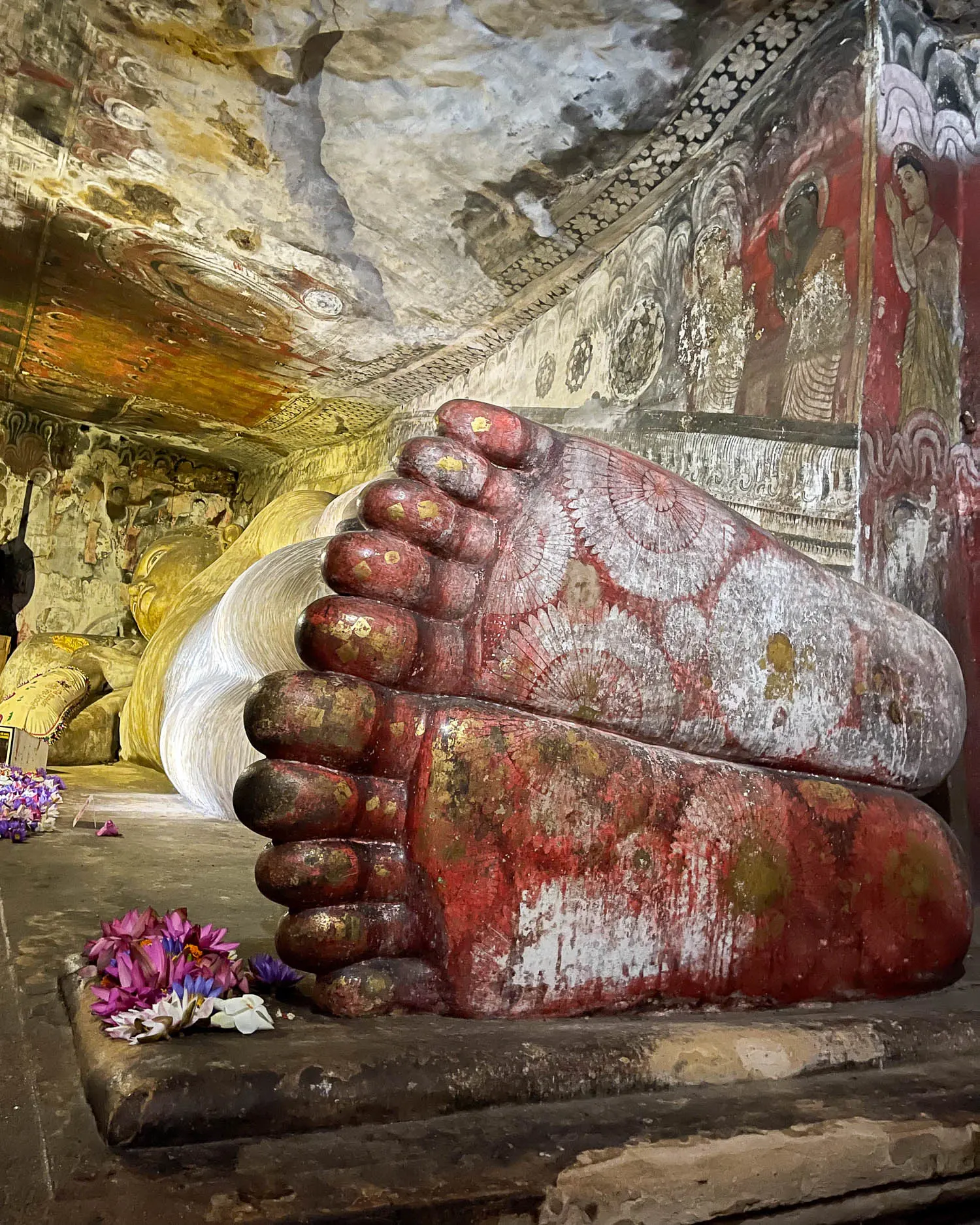
There are two places to buy tickets for the cave temples, firstly the Golden Temple Buddhist Museum with its Golden Buddha close to the main road, and a second car park on the other side of the site. Be sure to buy tickets before you start climbing the steps to the cave temples themselves. Once at the top you will need to leave your shoes and walk into the temple compound barefoot.
Within the temple compound there are freelance guides who you can pay a fee to give you a guided tour of the temples, although we were happy to just wander around and take photos. Allow around 1-1.5 hours for your visit.
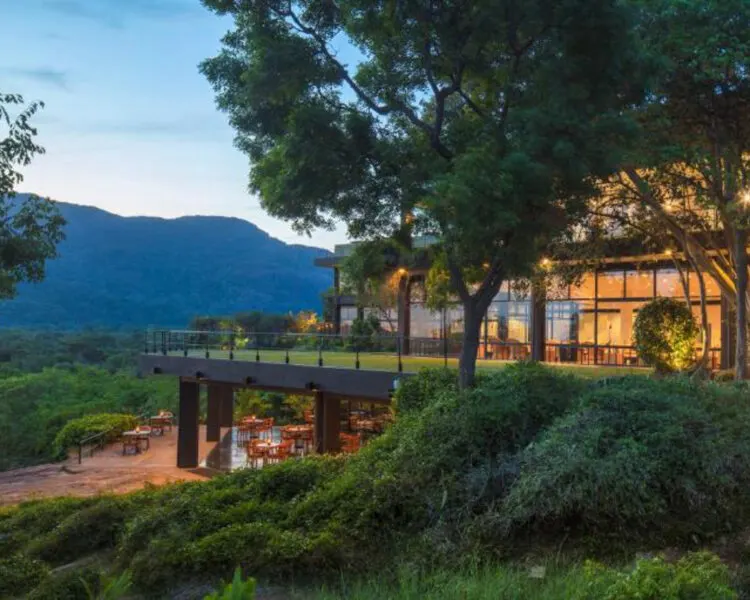
Stay at Heritance Kandalama near Dambulla – a unique lakeside hotel designed by Geoffrey Bawa where we stayed
5 Mihintale – the sacred hill
Of all the temples we visited, the one I enjoyed most was Mihintale, mainly I think because of the stunning views. It’s a good one to combine with Anuradhapura, as the two sites are 30 mins drive apart. The sacred hill is where the Mahinda, son of the Indian King is said to have converted the Sri Lankan king Devanampiya Tissa to Buddhism in the 3rd century BC.

The whole site is set on a hill and the first stage is to walk up the steps from the ticket office and car park to the upper terrace, where you leave your shoes behind to go barefoot. On the terrace is a small stupa and various buildings, with further steps leading to different high points.
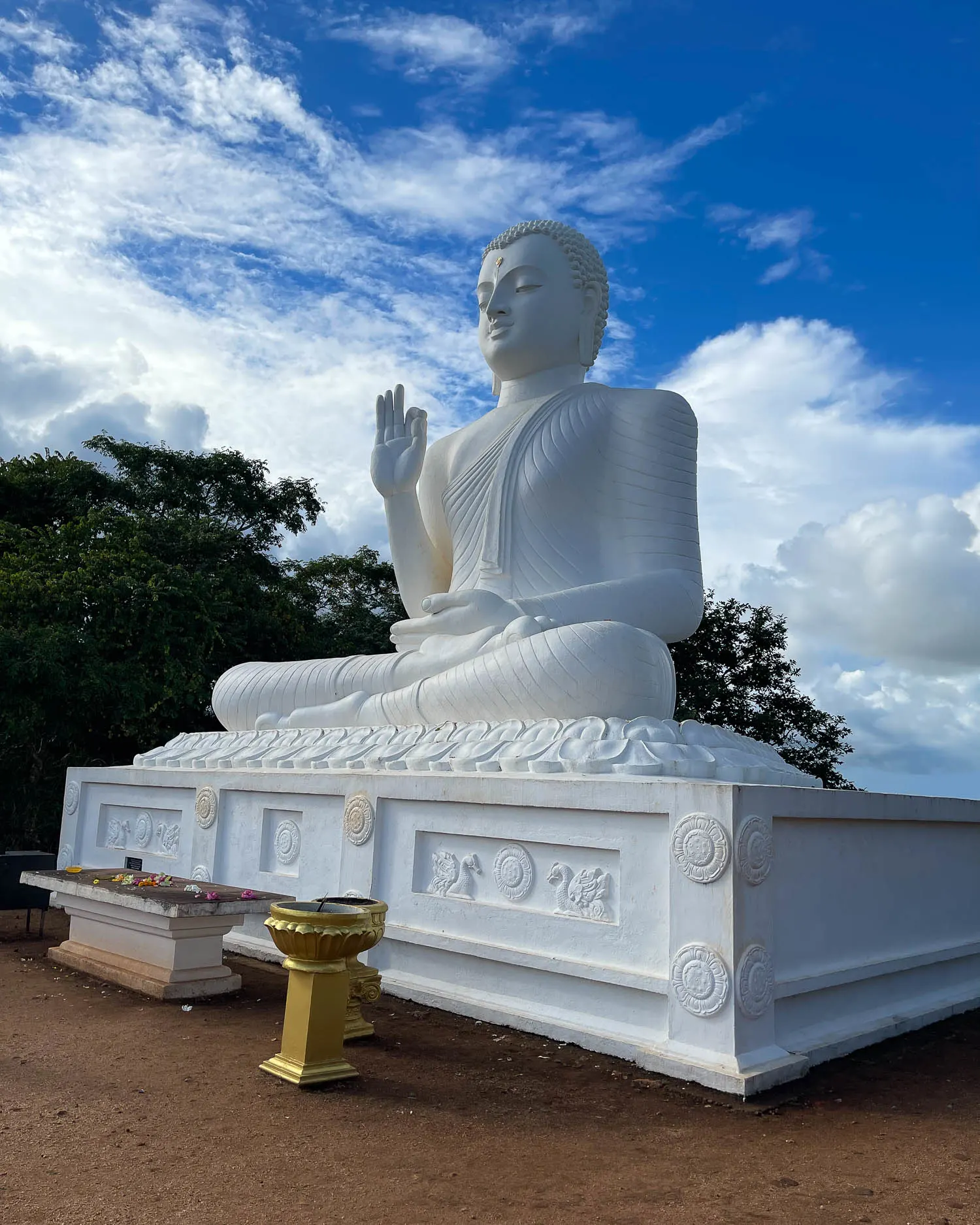
The first that we tackled was the climb to the white Buddha statue, giving views over the rest of the site. After climbing back down to the terrace, it was up again to the 14m high, white domed Mahaseya Dagoba which gave wonderful views over the countryside. Down to the terrace again and we tackled the most challenging, the steps on the side of the rock face leading to the Aradhana Gala (meditation rock), a viewing platform which gave stunning views over the sacred hill and surrounding countryside.
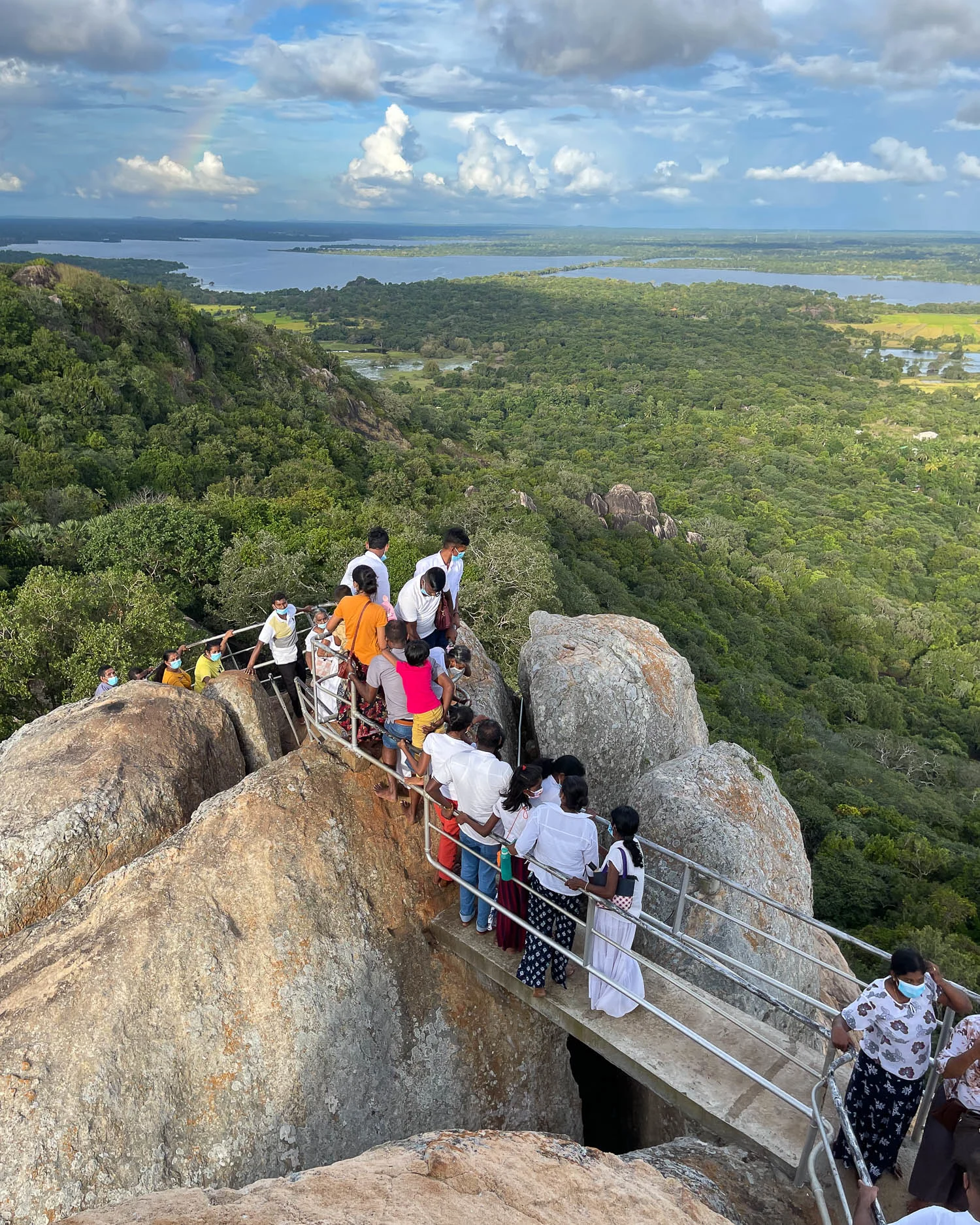
Despite the difficult climb and narrow path which required people to squeeze pass each other at some points, this didn’t seem to put off local families with grannies and young children all being helped up! The biggest challenge I had was my tender feet which complained against walking barefoot on sand and gravel, and I wished I had brought some socks to make it easier. Allow around 1.5 – 2 hours for your visit.
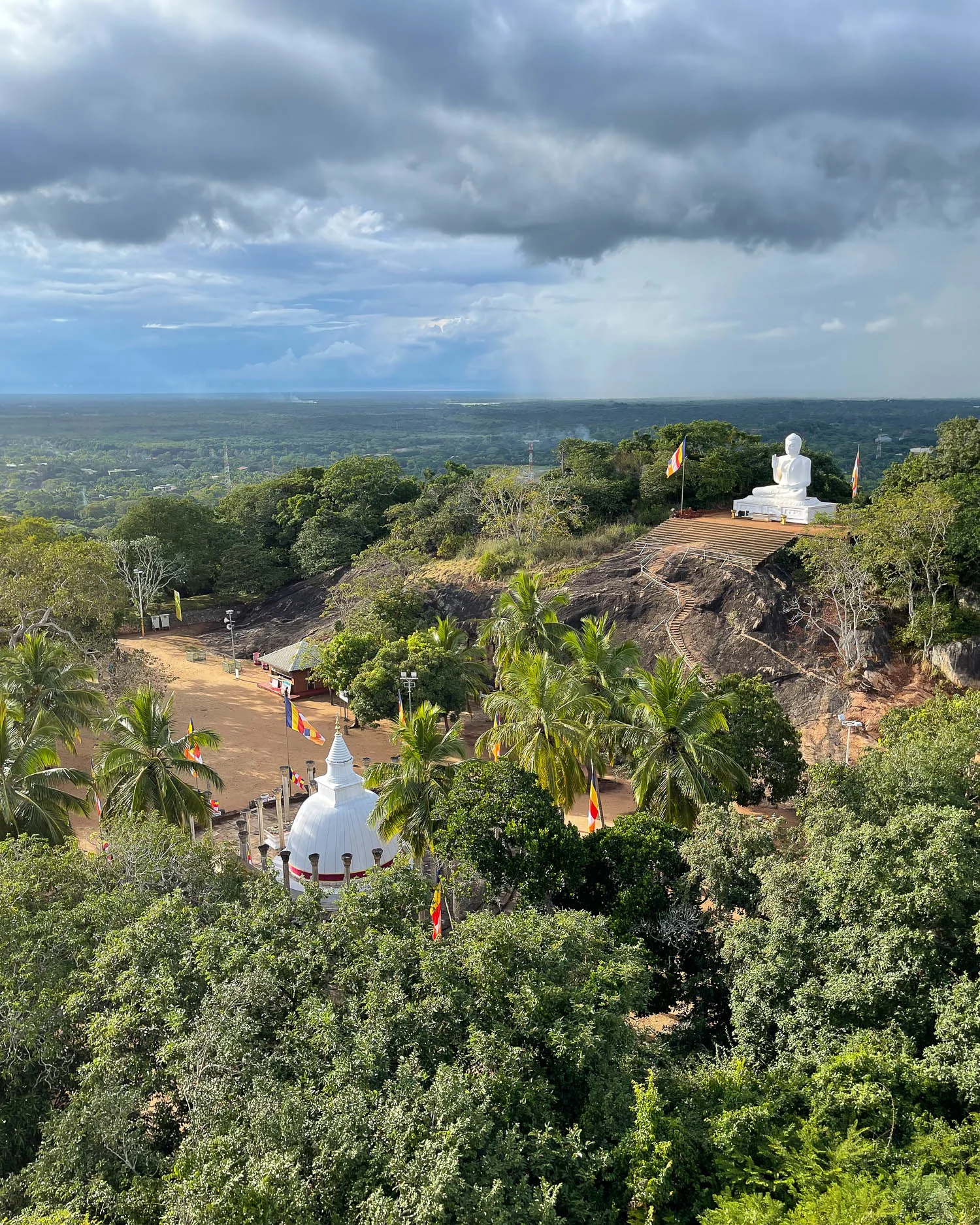
6 Anuradhapura – stupas and dagobas galore!
The ancient city of Anuradhapura was founded in the 5th century BC and was the capital of Sri Lanka until it declined in the 10th century. Like Pollonnaruwa, the main sites of this ancient city are quite spread out, so you can ask your driver to drive you around, or hire a tuk tuk or bicycle to move between the main parts of the site.
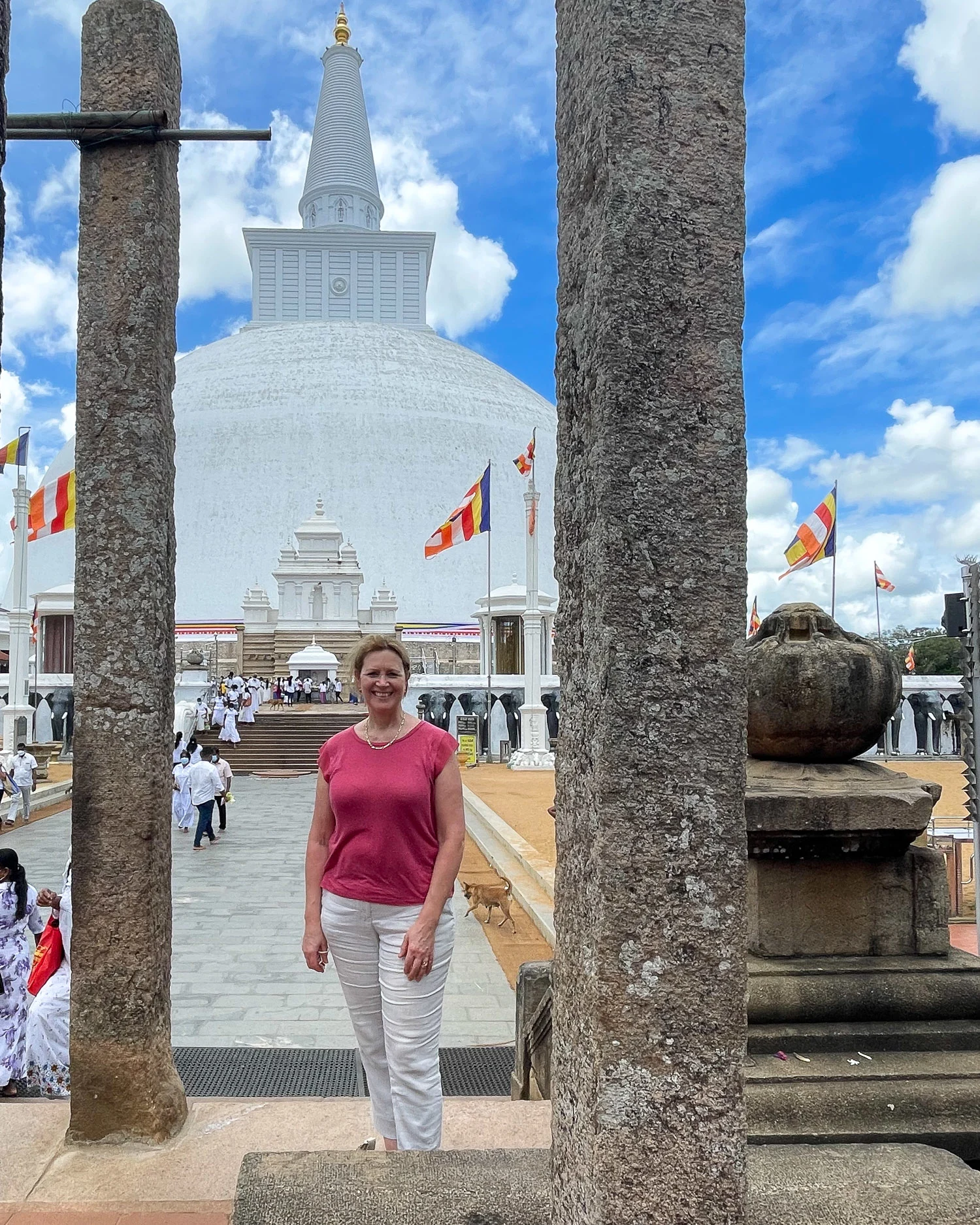
Anuradhapura is mainly known for its three enormous dagobas, dome like monuments that rise up to 70 metres high, housing a holy relic of one of Buddha’s followers. The busiest dagoba for visitors was the white plastered Ruwanelisaya Dagoba which has shrines around the base. Devotees dressed in white walk round it anticlockwise, leaving offerings of lotus and jasmine flowers.
The other enormous brick dagobas are the Jetavanaramaya Dagoba, which is close by and is thought to be the largest brick structure in the world, made from 90 million bricks. The Abjyagiri dagoba at the northern end of the site was under renovation. It was interesting to see how quickly weeds and plants grow up on the surface of the brick dagobas, which are constantly being cleaned off in a never-ending task of restoration.
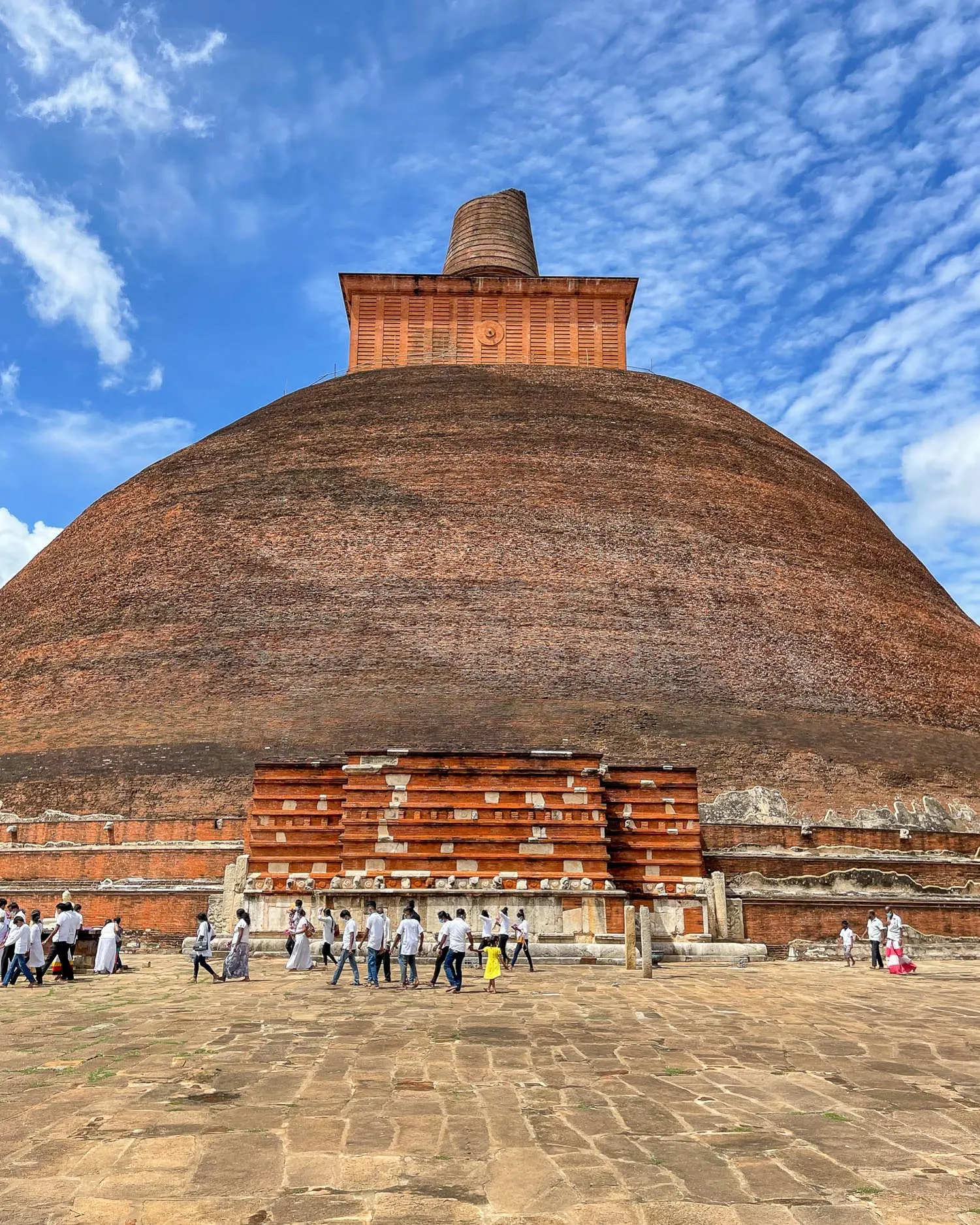
Anuradhapura is also known for a large, beautiful and well preserved moonstone, a semi-circular carved stone that is used at the entrance to temples as a place to brush the dust off your feet before entering. While Anuradhpura is one of the highlights of the Cultural Triangle, if you are limited in time or are feeling you trip is becoming ‘death by temple’ this is one site you could leave out in favour of Mihintale or Polonnaruwa. Allow 2-3 hours for your visit.
7 Polonnaruwa – the ancient capital of Sri Lanka
The ancient city of Polonnaruwa was the capital of the Sinhalese kingdom established by King Vijayabahu I in the 13th century. It was later abandoned and became overgrown by jungle, but was excavated and declared a UNESCO World Heritage in 1982. The main sites are somewhat spread out so you have a few options once you have purchased a ticket.
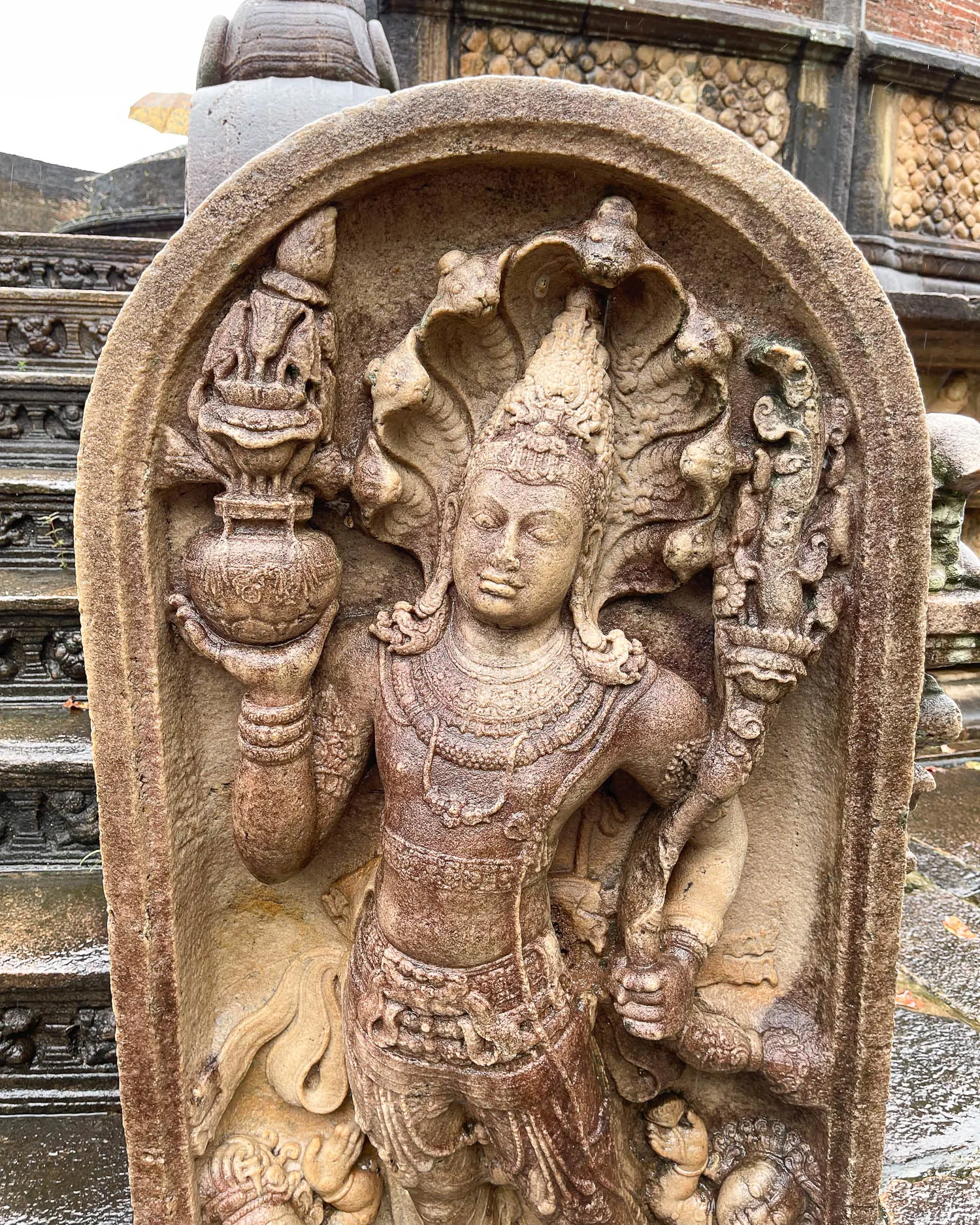
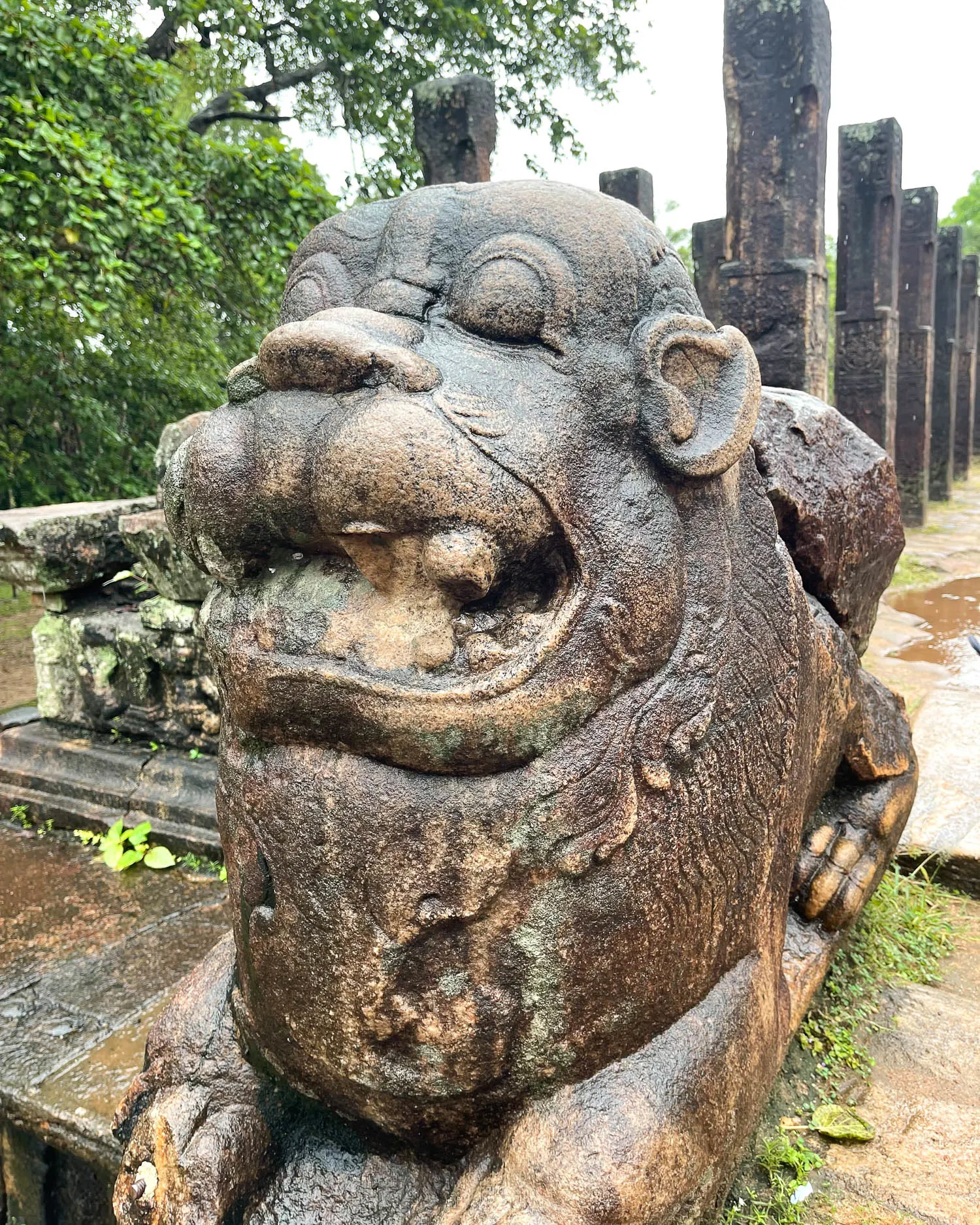
If you have hired a driver, they can take you by car between the different parts of the site or you can also hire a bicycle near the entrance and cycle yourself around. There’s quite a lot to see and I’d recommend taking a tour with one of the registered guides who will approach you at the entrance and can follow you by moped around the site to explain everything. Allow 2-3 hours for your visit. Main things to see are;
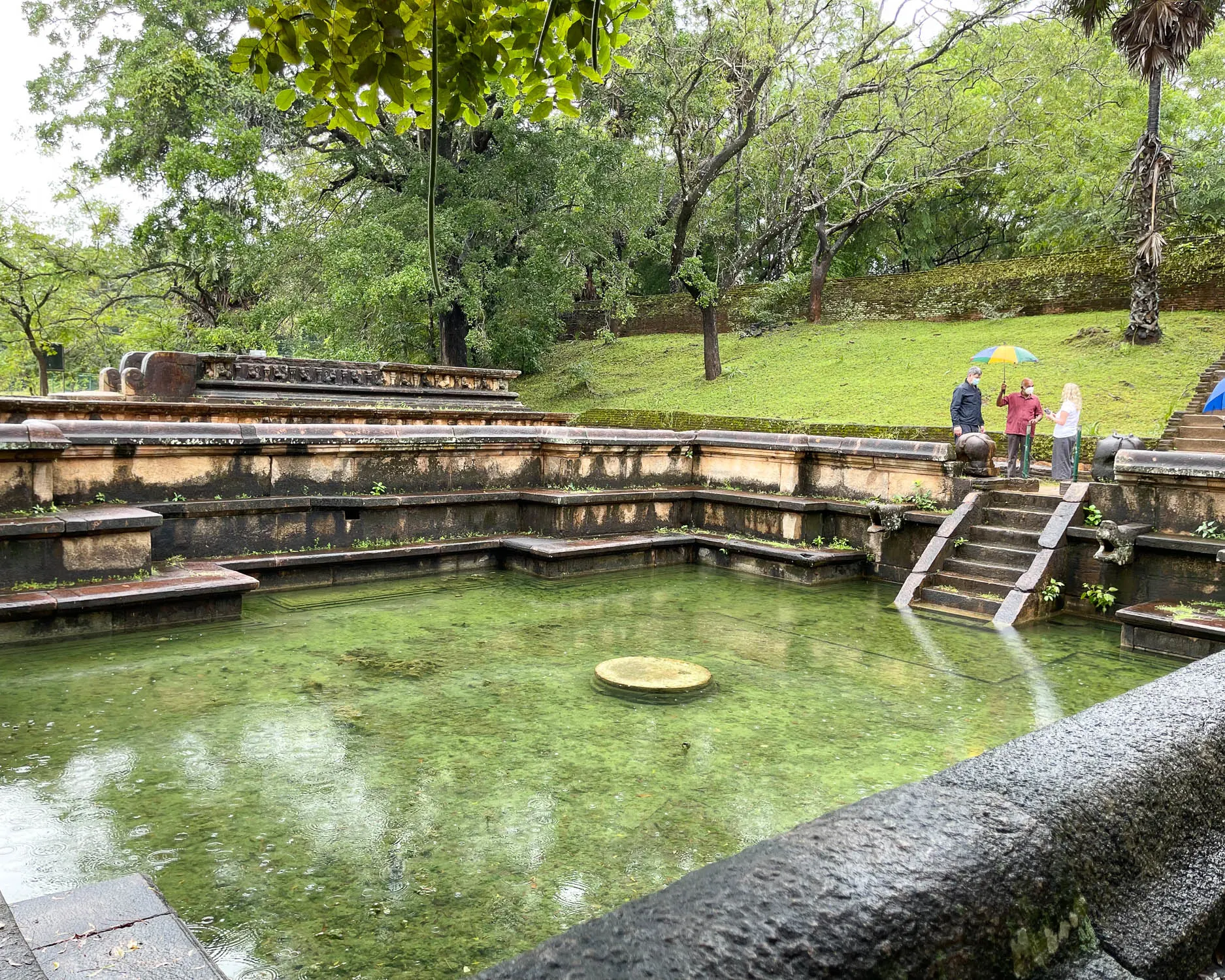
- The museum, where you buy your ticket, which gives a good overview of the site and houses some of its treasures.
- The Royal Palace group of buildings, including the ruins of the king’s palace, council chamber and the nearby bathing pool for the royal family.
- The Gal Vihara or Rock Monastery is the furthest from the ticket office and includes four enormous Buddha statues carved directly into the rock. The largest is a 14 m long statue statue, depicting reclining Buddha at the moment of death and entering nirvana.
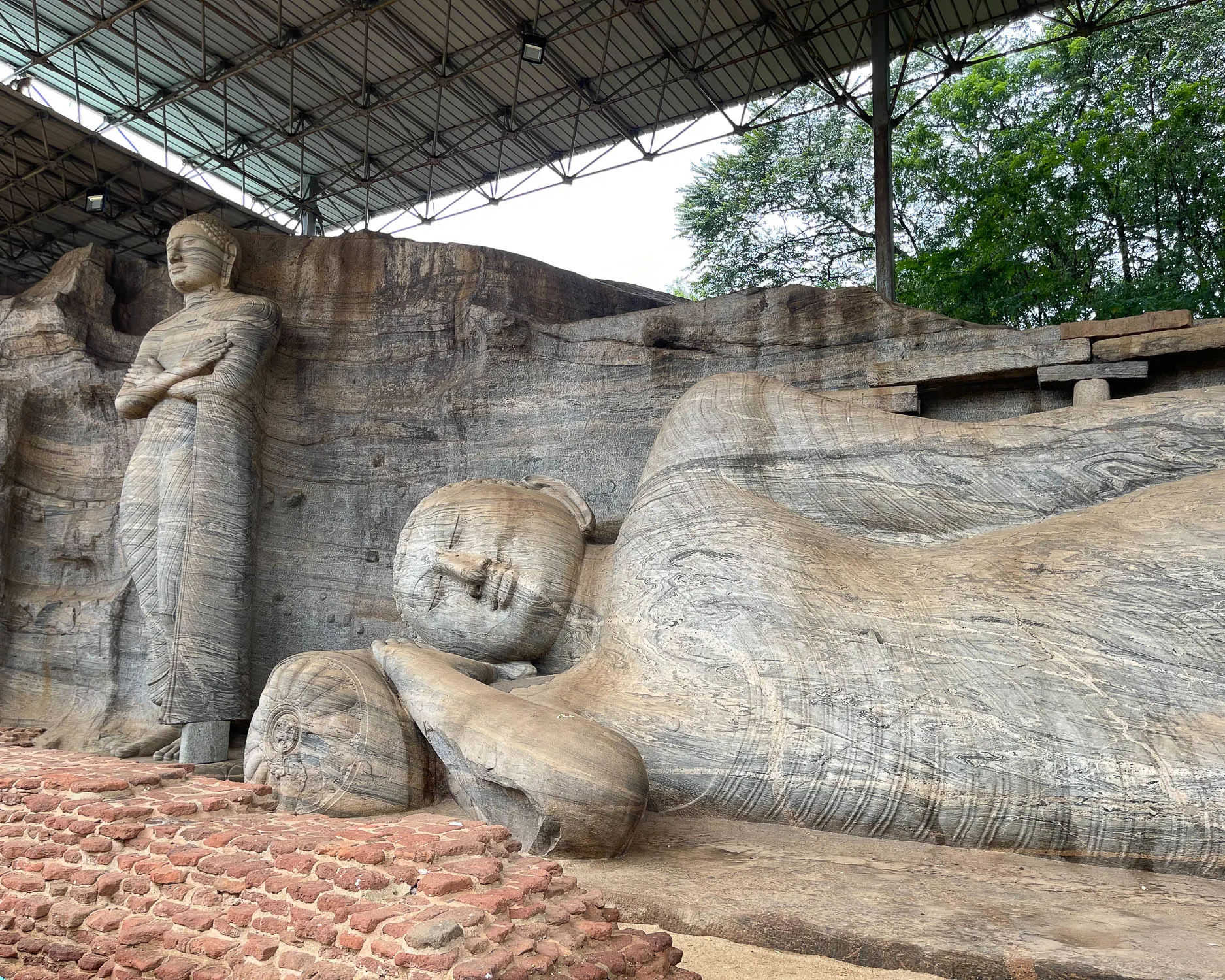
8 Kandy – the Temple of the tooth, lake and botanic garden
Kandy is the second city of Sri Lanka, located in the centre of the country. With good road and rail links, Kandy makes an ideal first stop from Colombo (only 2 hours by train) It’s a jumping off point for a tour of the Cultural Triangle sites to the north or the Hill Country and tea estates to the south. Many travellers just pass through but the town warrants a day or two to explore if you have time. Here’s what we enjoyed;
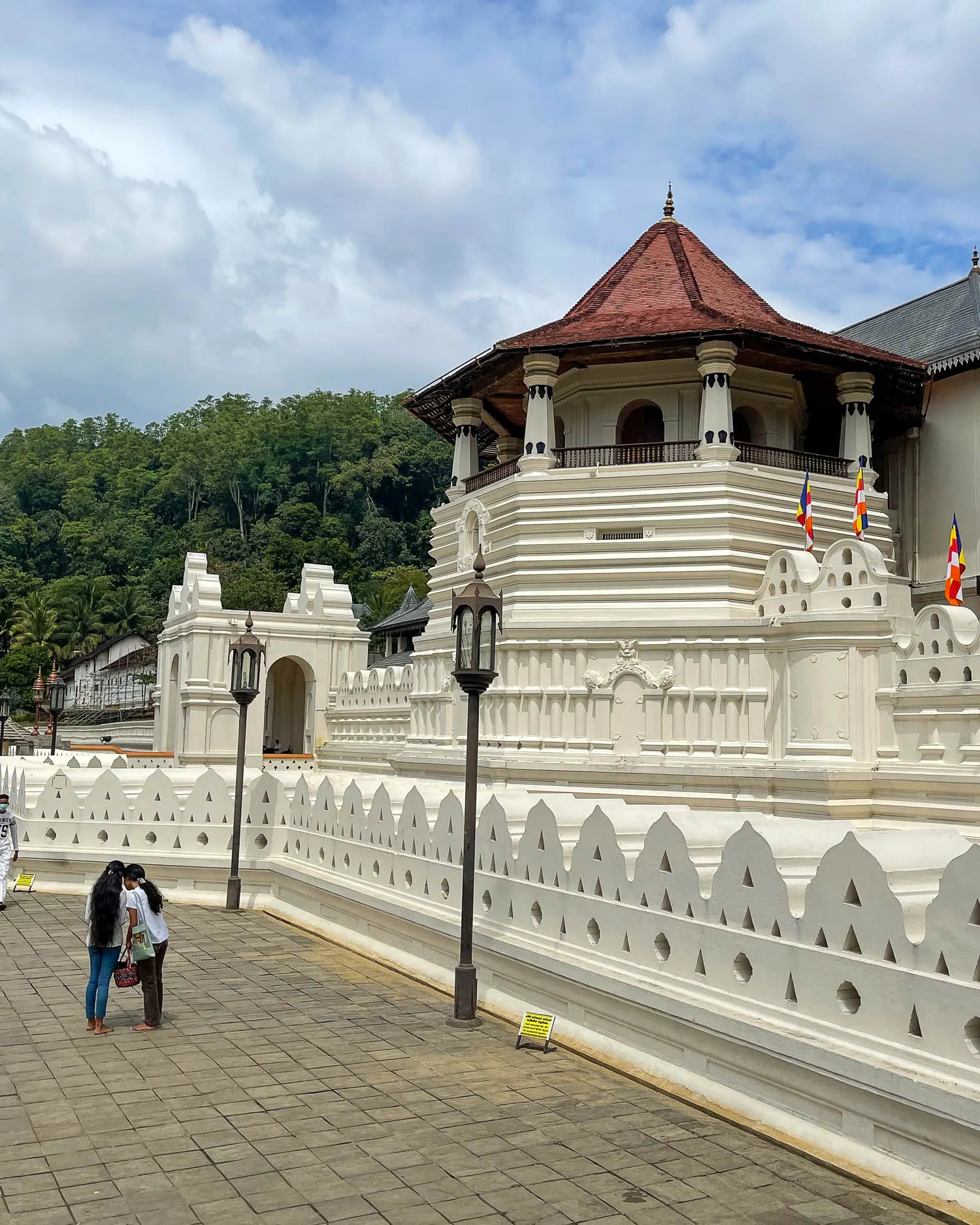
- The Temple of the Tooth is Kandy’s top attraction, so allocate a couple of hours to see it. The temple houses Sri Lanka’s most holy relic, the tooth of Lord Buddha housed in a gold casket within a gold roofed shrine. You may want to time your visit with the morning or evening puja ceremony accompanied by drumming when the shrine is opened for a closer glimpse of the casket holding the tooth.
- A 15 minute tuk tuk ride will take you out of town to the colourful Royal Botanical Gardens at Peradeniya, with orchid house, vivid floral plantings, palm avenues and a suspension bridge over the river.
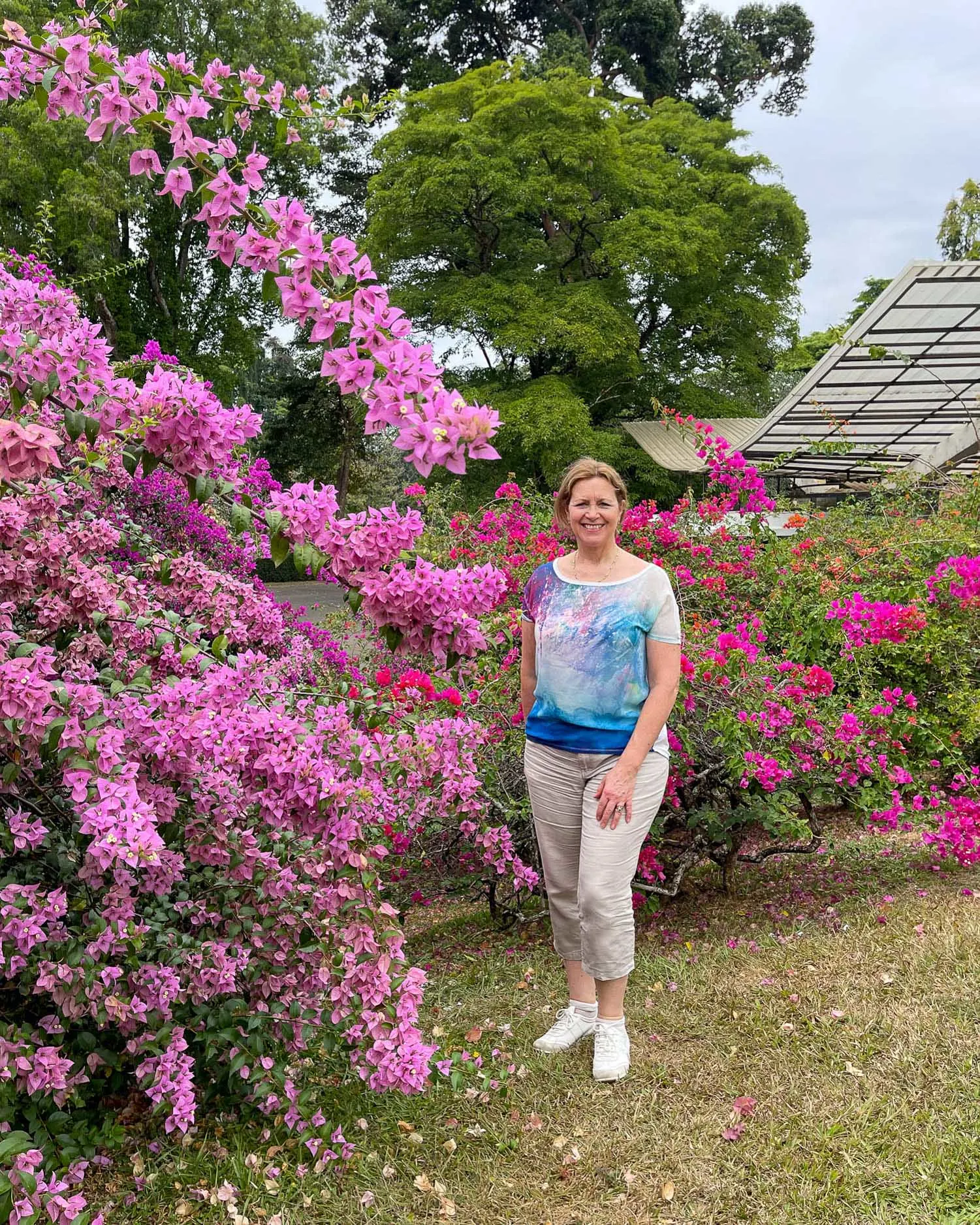
- It’s a pleasant stroll around the Kandy lake, where you can hire a boat, admire the Queen’s Bathing House and take in the lakeside views.
- There’s a busy covered market, with sections selling clothing, fruit and veg, meat and fish, which is good for local colour and buying spices and souvenirs.
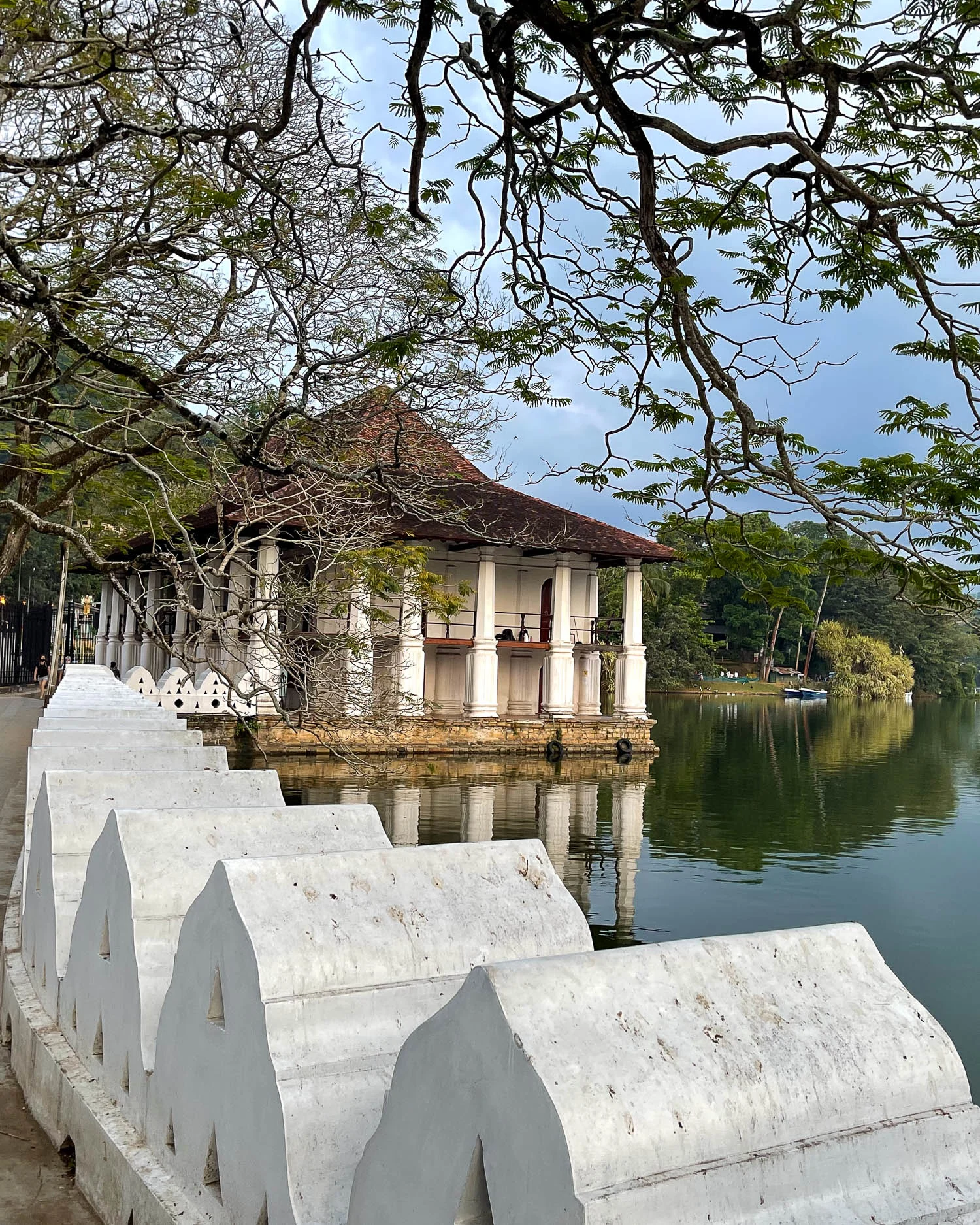
- The energetic evening performance of the music and dance show at the Kandyan Arts and Crafts association is worth attending, a taste of the performances that would normally take place during festivals.
- Walk or drive up to the viewpoint on the south side of Kandy lake, for some great photos.
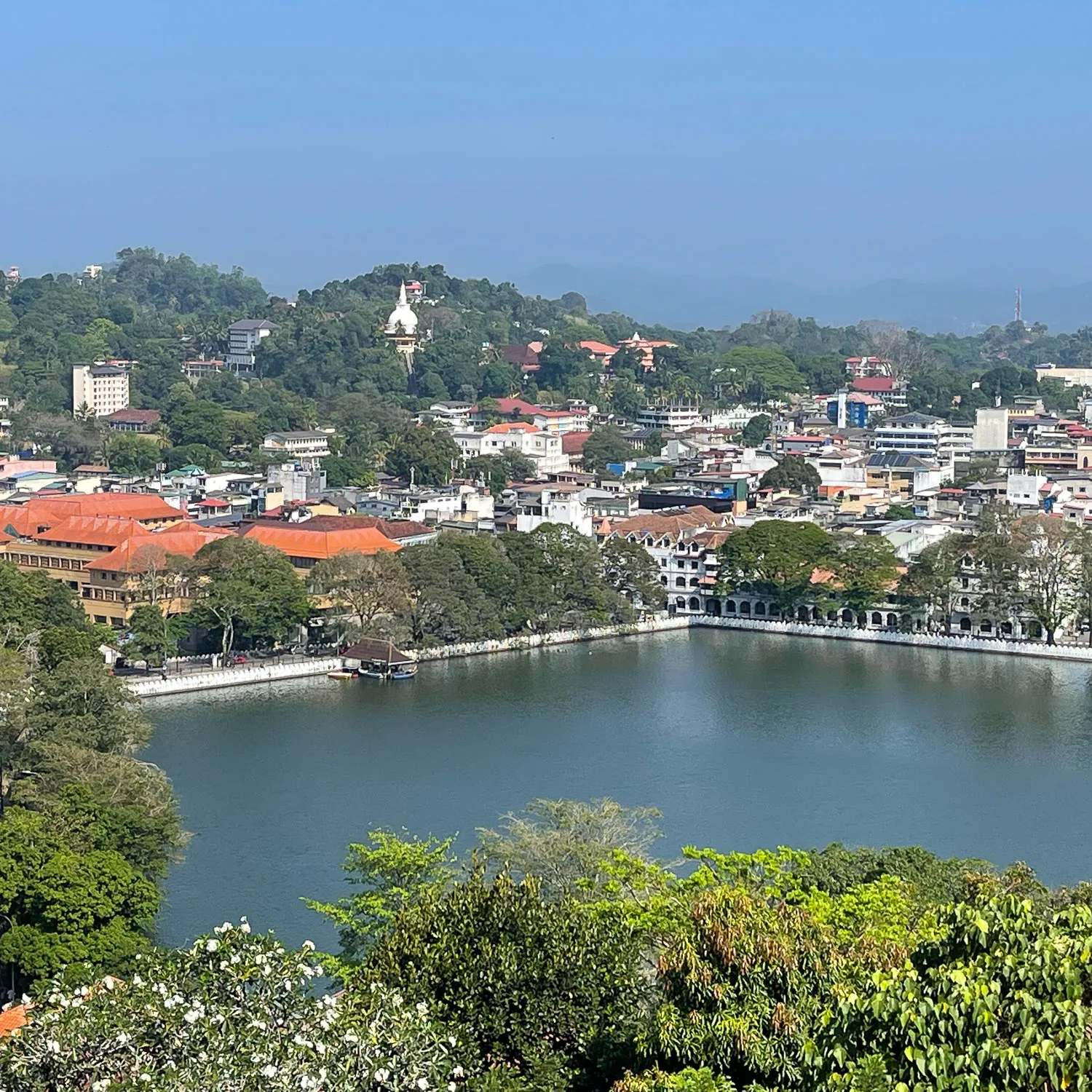
9 Ambulawawe tower – climb it if you dare!
South of Kandy is the Ambulawawe Biodiversity complex, set on a hill above the town of Gampola. It’s 3500 feet above sea level and 1000 feet above the town, so the views just from the hilltop are stunning. Most people are here for the 48 metres high Ambuluwawe tower, and you can climb right to the top, if you dare.
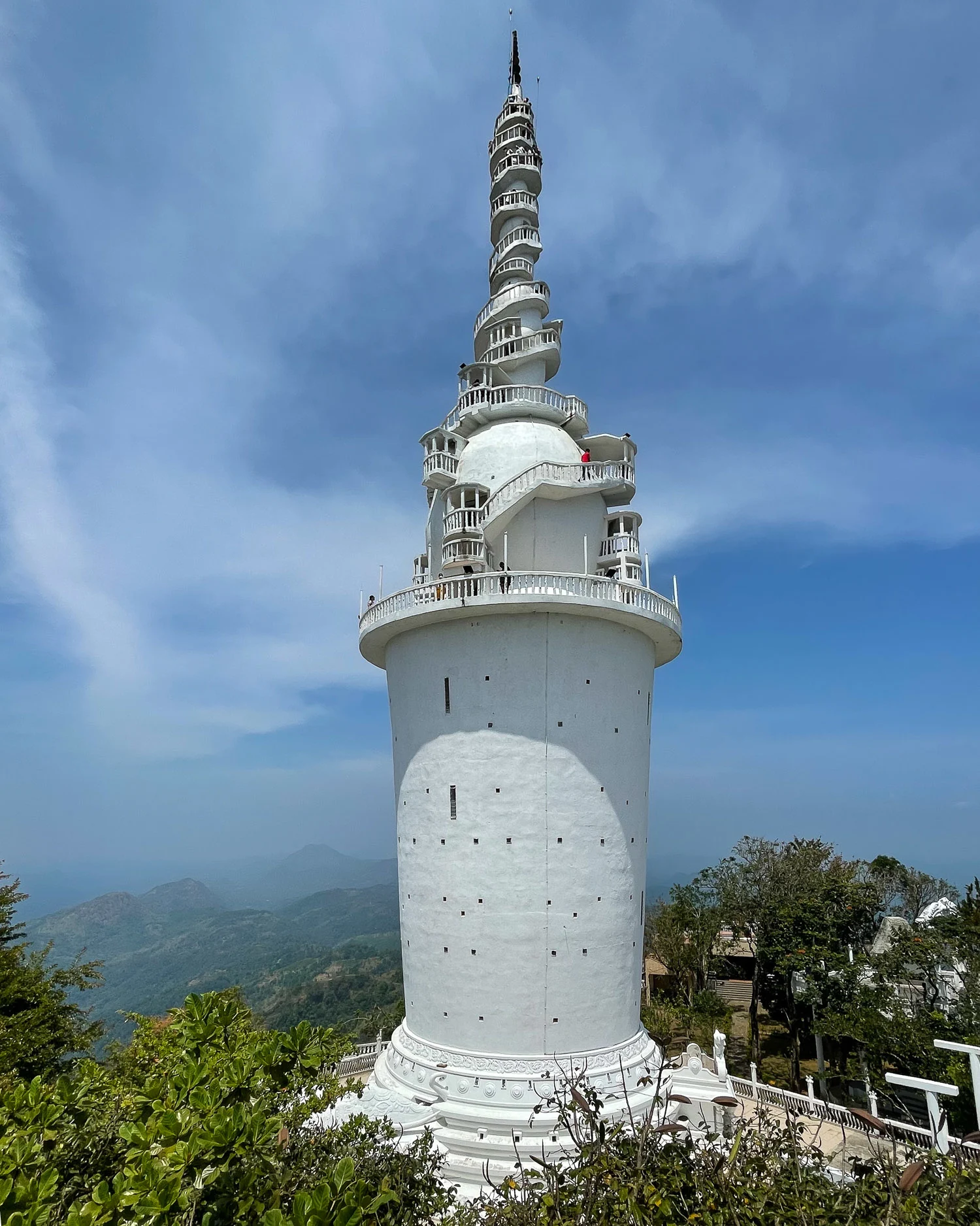
Looking a bit like a fairytale castle, the internal stairways starts easily enough, but as the tower narrows, the stairway moves to the outside giving stunning views over the scenery below. For the final section it becomes narrower still, with barely space for two people to pass and not much between you and the scary drop below.
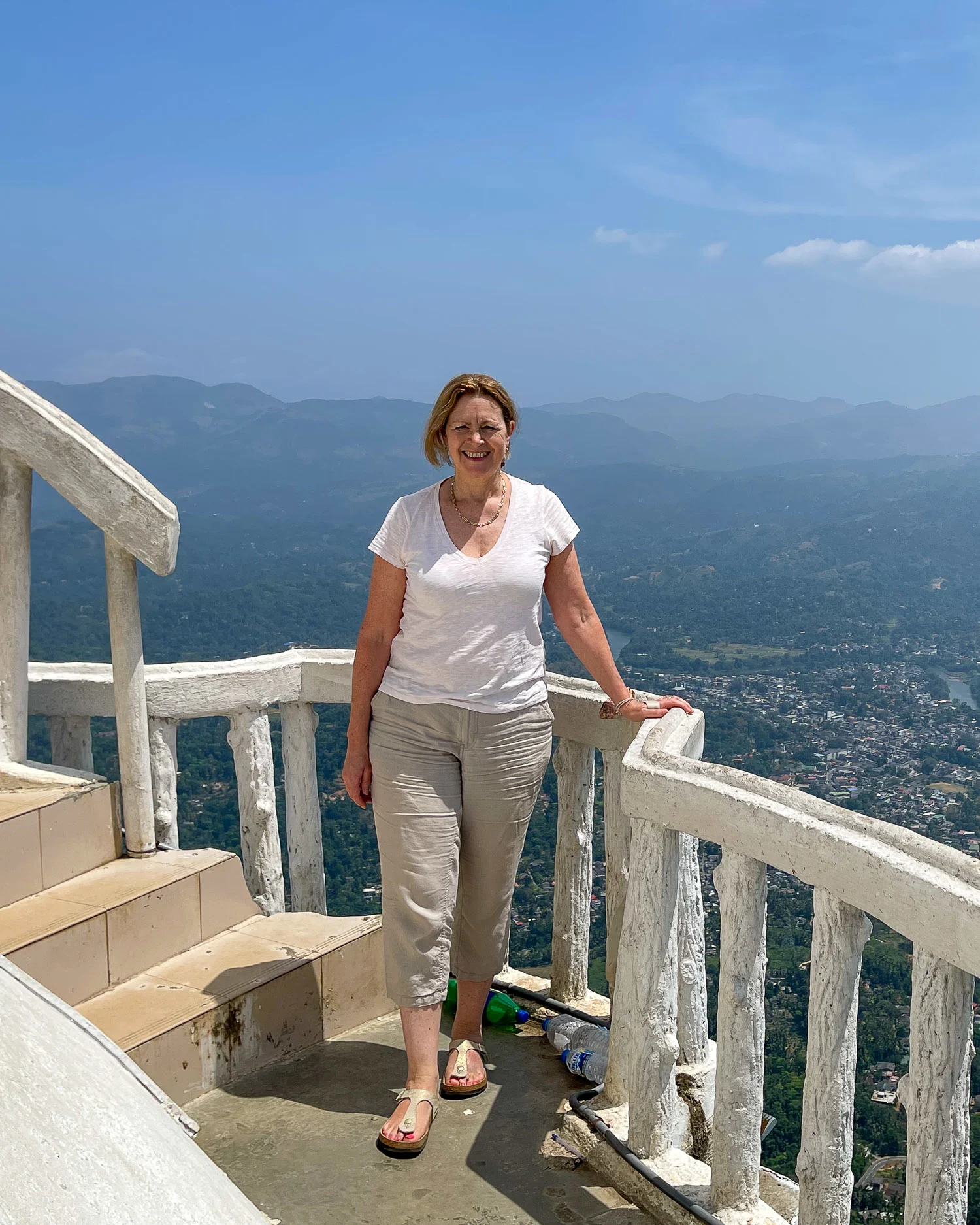
I decided not to climb the final section, but if you are intent on this, you may want to visit first thing in the morning when the tower is less crowded. There are several other viewpoints within the complex, including a smaller tower nearby, which gives a excellent views of the larger pinnacle for photos. We had a driver to take us there, but if not you will need to hire a tuk tuk for the winding trip to the top of the hill.
You may also enjoy Sri Lanka travel tips – information to plan your perfect trip
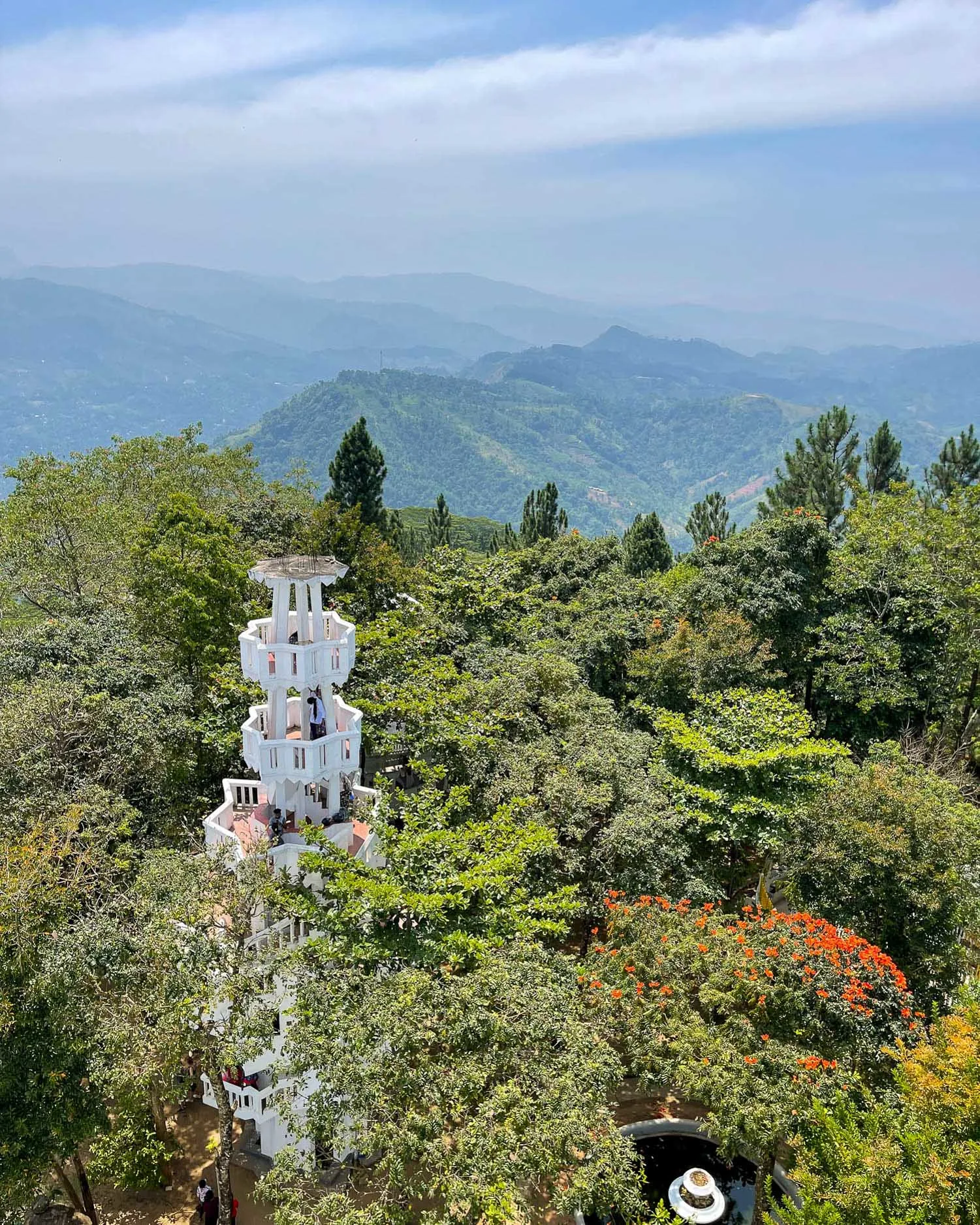
10 Horton Plains Park and Worlds End Viewpoint
Horton Plains was once a favourite hunting ground of the British, with open grassland that’s reminiscent of the Scottish Highlands. The national park is set on a plateau at an elevation of 2000 metres, making the climate here cooler and wetter than the Sri Lankan coastal regions, with dairy farms and strawberry growers nearby.
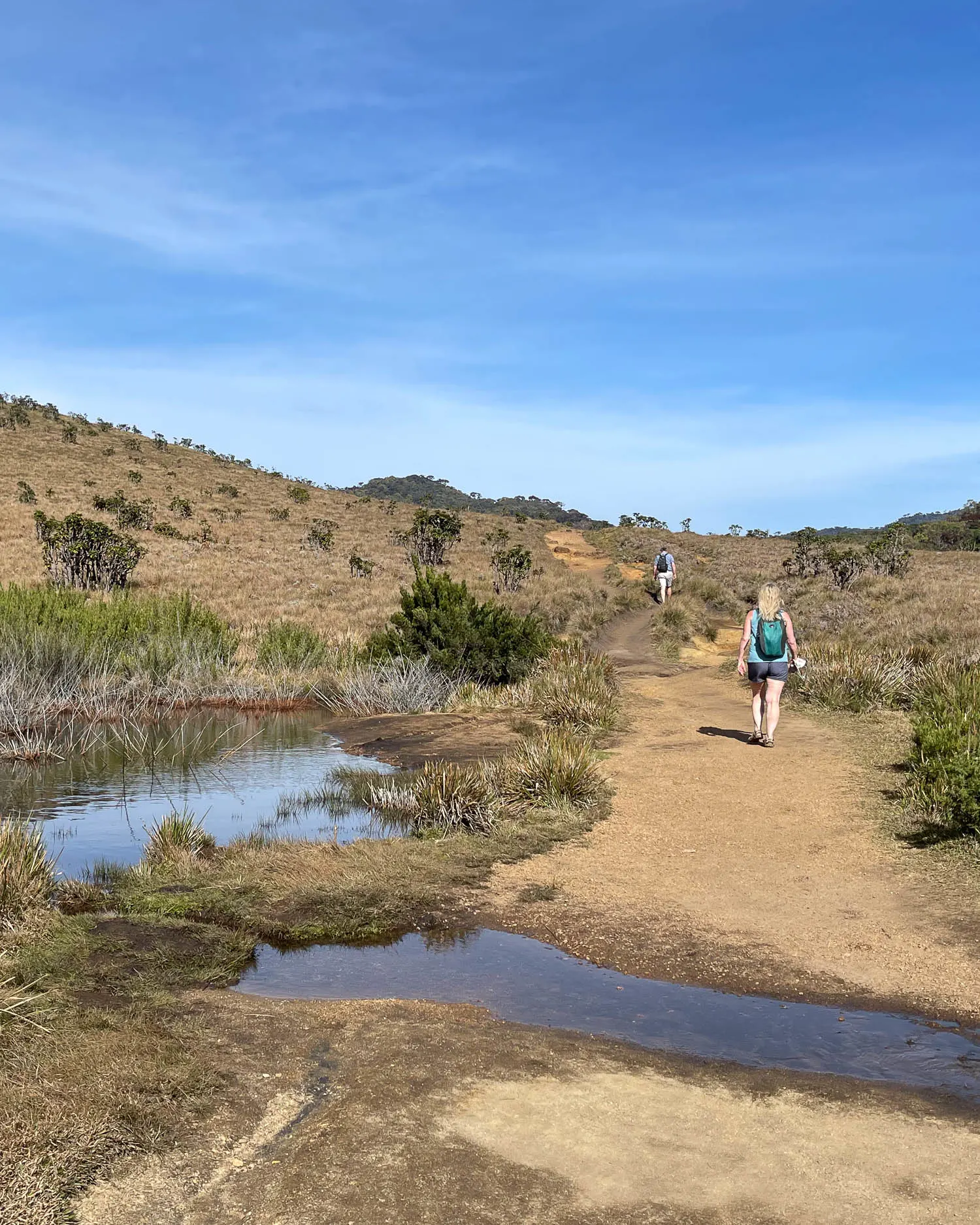
While you can see wildlife such as deer, birds and monkey, you’re unlikely to see anything bigger such as elephants or leopards. Consequently this is a fantastic spot for hiking as it’s one of the few national parks in Sri Lanka where you can walk without a guide or a vehicle. The other big draw is the viewpoint known as World’s End, where the escarpment drops away, revealing views down the valley and beyond to the coast.
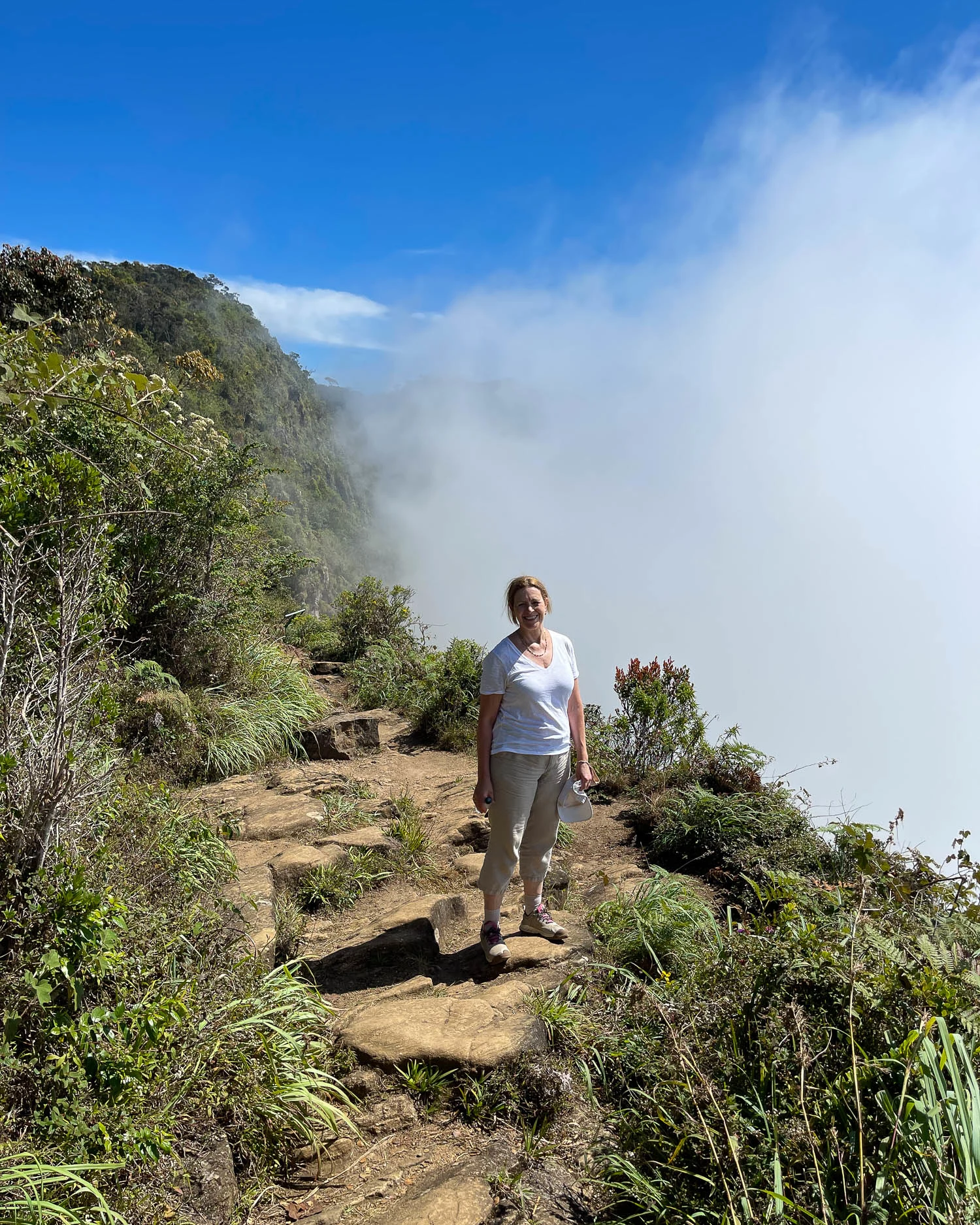
We took the most popular circular walking route, which is well marked and takes in Baker’s Falls as well as the World’s End viewpoint and a second viewpoint at Mini Worlds End. To see the viewpoint at its best, you need to arrive there before 10am when the cloud from the valley starts to rise and obscure the view.
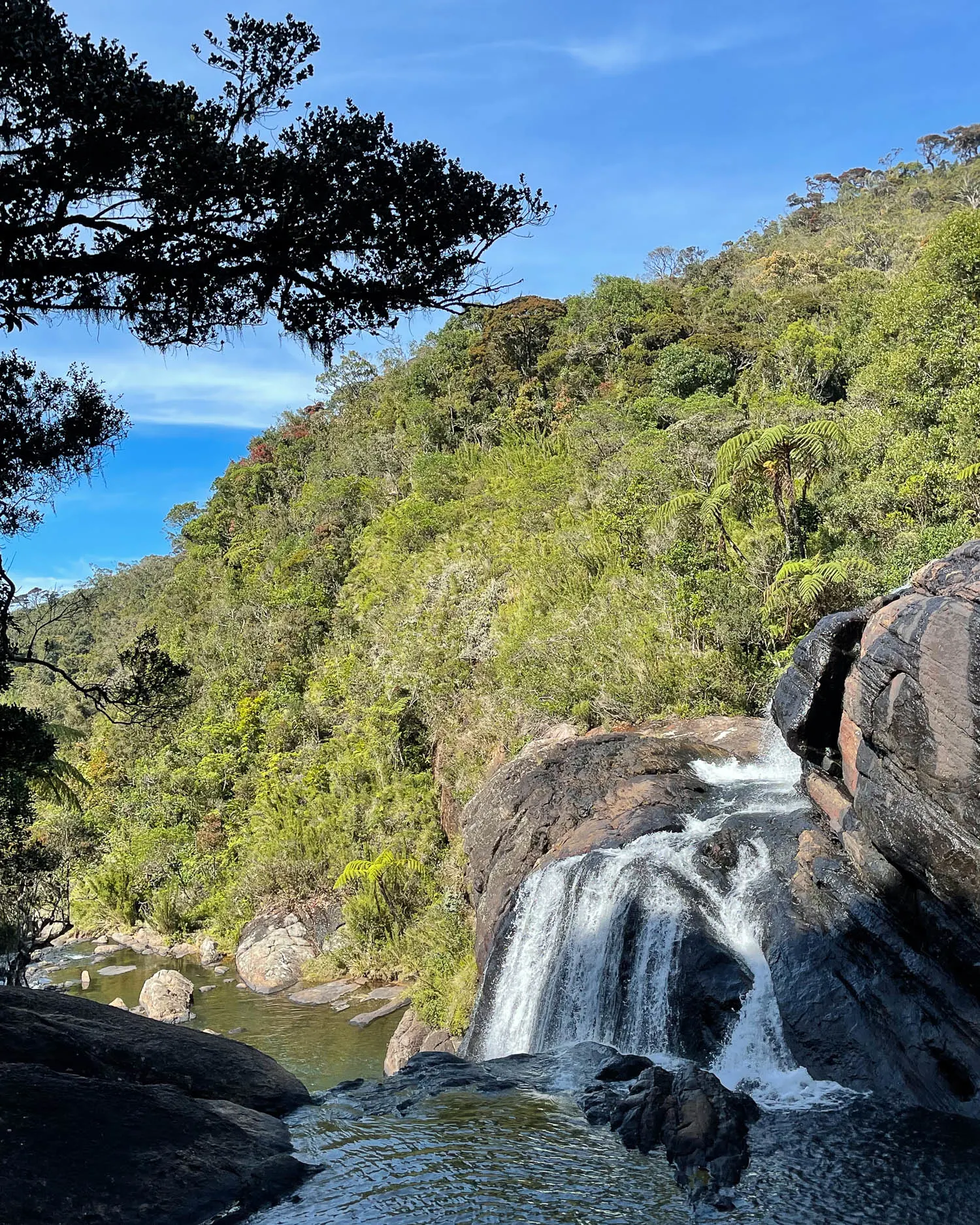
Guess what? We made it by 10.15, just too late as the cloud had already filled the valley, but it was still a great hiking experience. You can hike the loop in either direction and most people take the left hand route to see both the viewpoints before returning via Baker’s Falls. Single use plastic is not allowed in the park and they will search your bag, so be sure to leave all plastic bags and food wrappings at home – although water bottles are allowed.
11 Nuwara Eliya – Hill country and tea plantations
South of Kandy we travelled through the Hill Country, which became important in the 19th century with the arrival of European tea planters. The rolling hills sit at an altitude around 2500m above sea level. The climate here is cooler than the rest of the country, with more likelihood of showers year round. Nuwara Eliya was the centre of the tea industry and is often described as “Little England” because of the cooler climate and English style bungalows. Here’s what we enjoyed around Nuwara Eliya where we spent a couple of days;
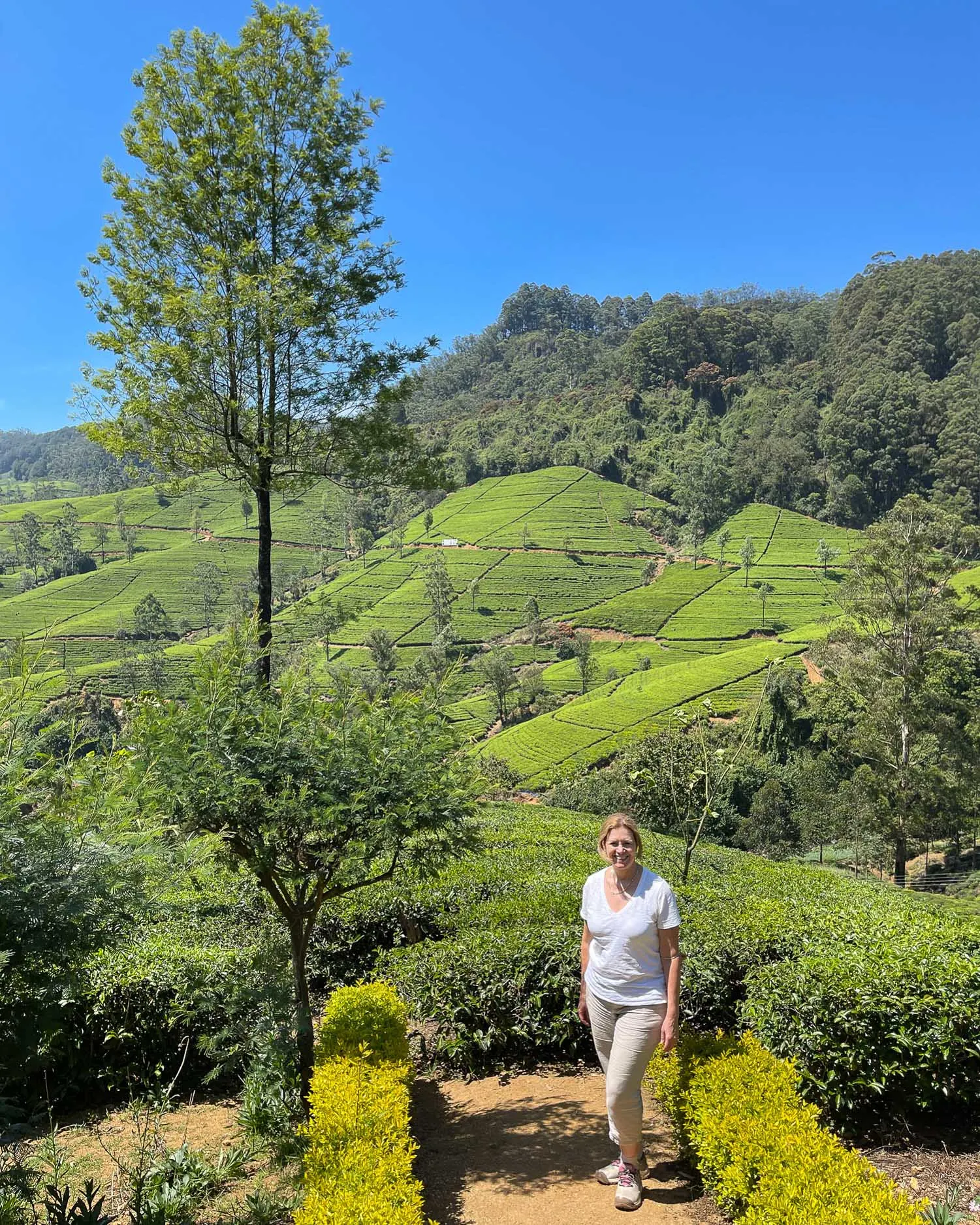
- Visit a tea plantation such as Damro Laboukellie, where they can give you a free short guided tour of the tea factory, followed by a cup of tea and cake in their tea lounge and plenty of opportunity to buy tea in the shop. The location is lovely with views over the tea plantations.
- If you are catching the train from the Nanuoya just outside Nuwara Eliya, stop for refreshments at the small Edinburgh Tea Station cafe with beautiful views over the tea plantations.
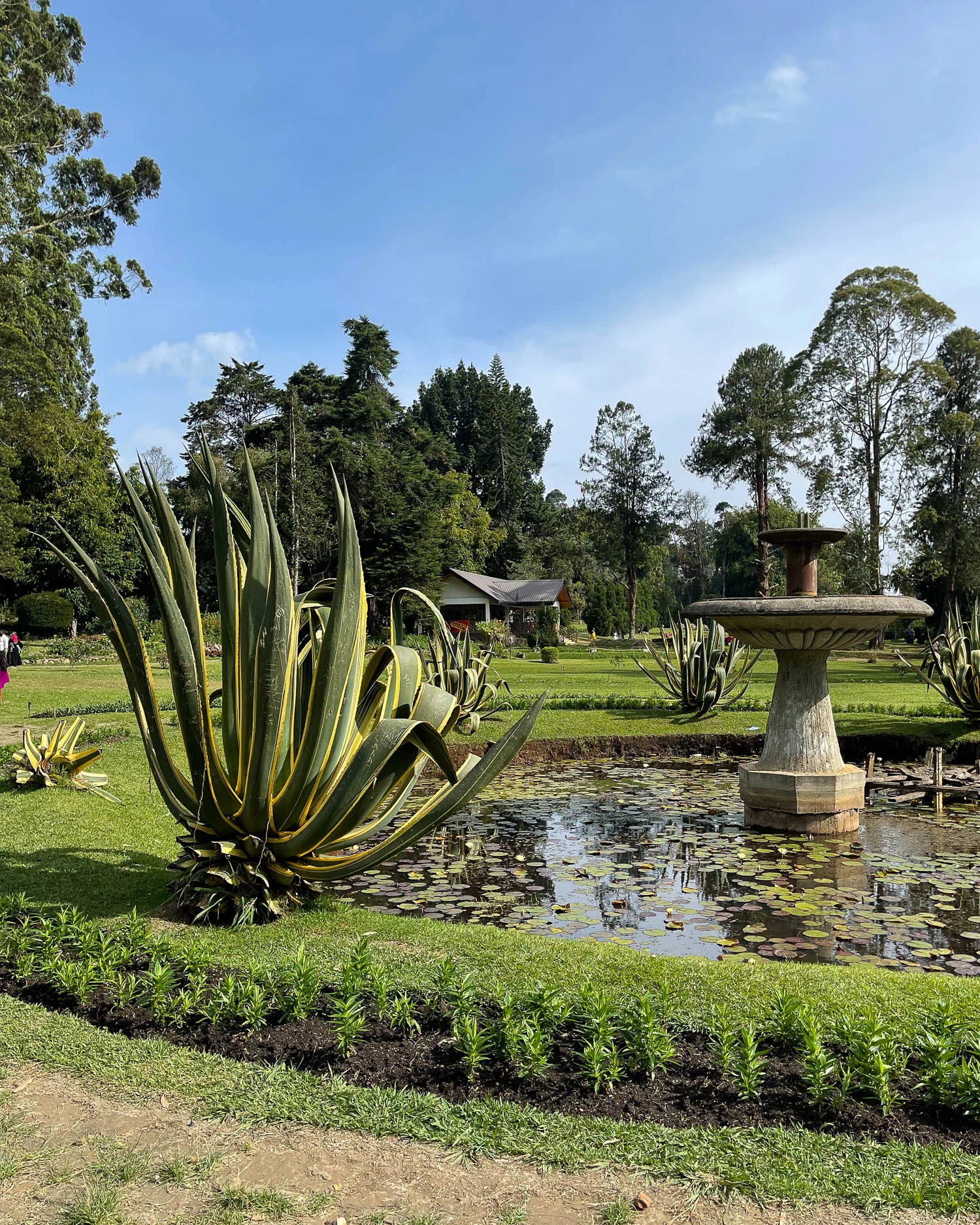
- Victoria Park in the centre of Nuwara Eliya is an English style public park, with fountains, pools and colourful floral displays.
- Enjoy the green space of Nuwara Eliya Race course, where you can have a pony ride alongside the race track, or continue your walk as far as Gregory Lake.
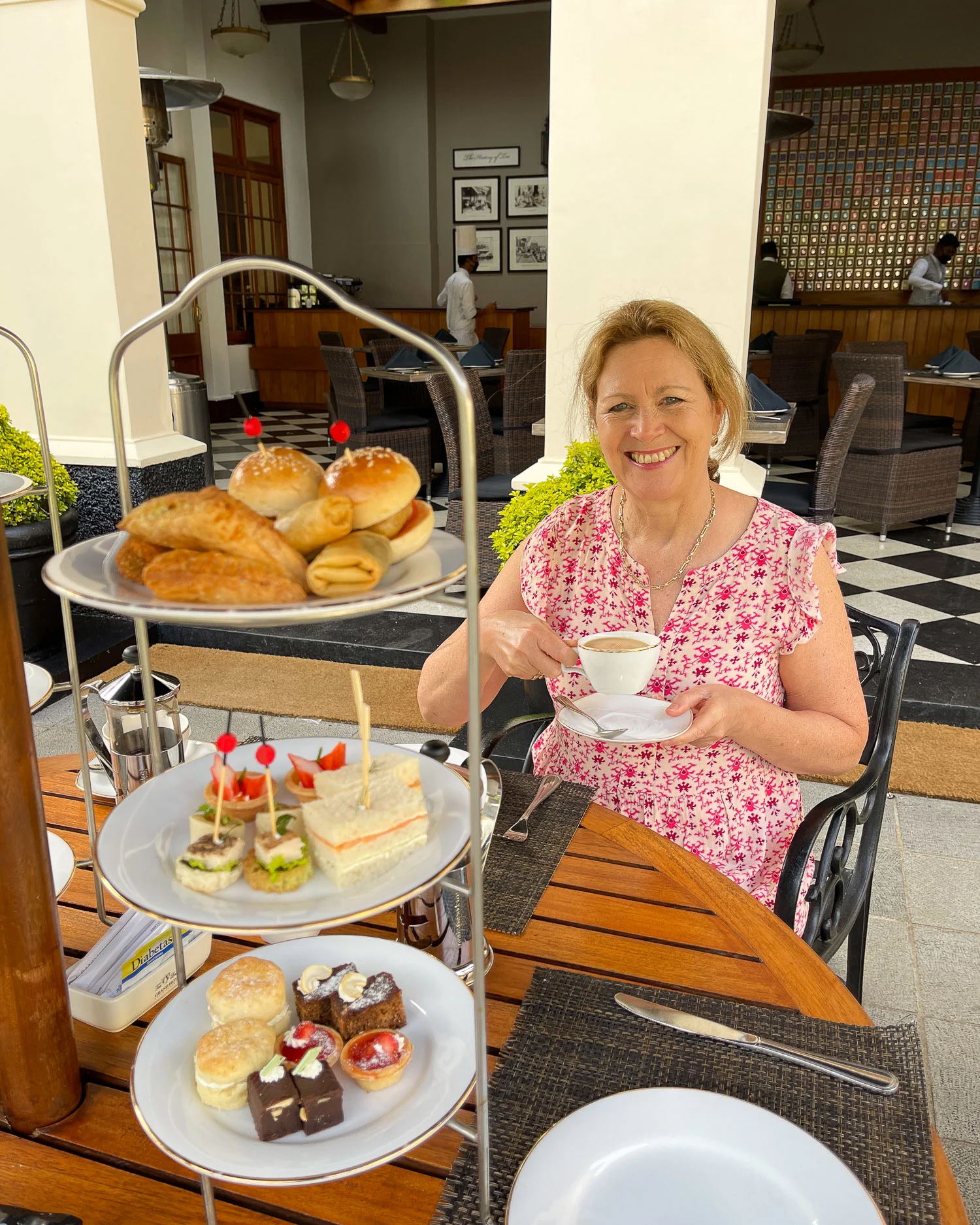
- Take “High Tea” at The Grand Hotel, a beautiful colonial style hotel with lovely gardens – we could easily have been in the Cotswolds!
- Take a photo of the oh so English, red brick post office with its clock tower.
- Just outside town are the Ramboda Falls, where you can climb up the path to the head of the falls, with a shallow pool and cascade of water to stand under.
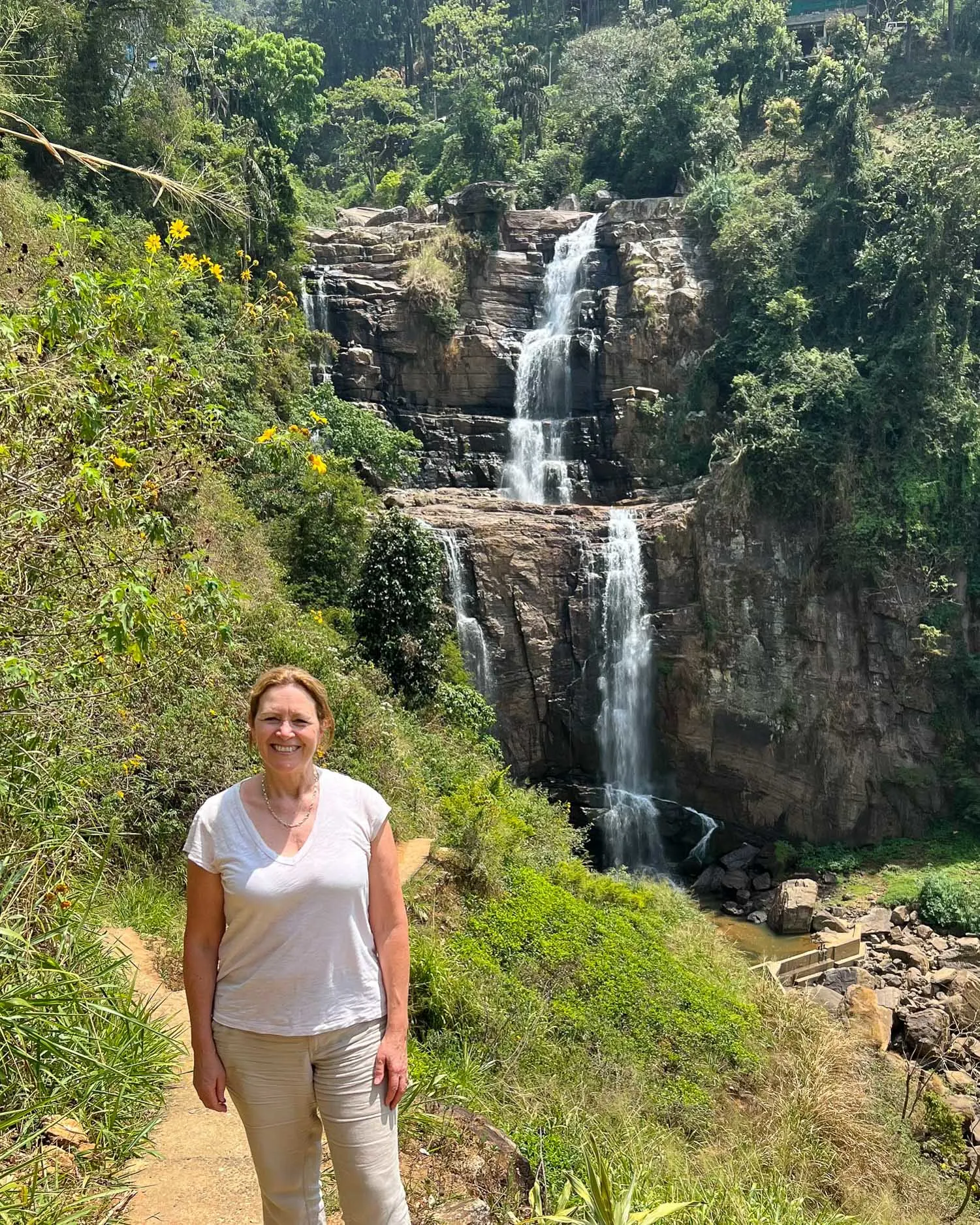

Need help to design your dream holiday? We’ve partnered with UK travel advisor Luxeco Holidays to create your personalised itinerary
12 Take the Blue Train to Ella
The train journey from Kandy to Ella and on to Badulla is considered one of the most scenic in the world, as it curves around the hillside with views of the tea plantations. The stretch from Kandy to Ella takes around 8 hours and although this trip is incredibly popular, we decided to take the shorter section from Nanuoya station to Ella.
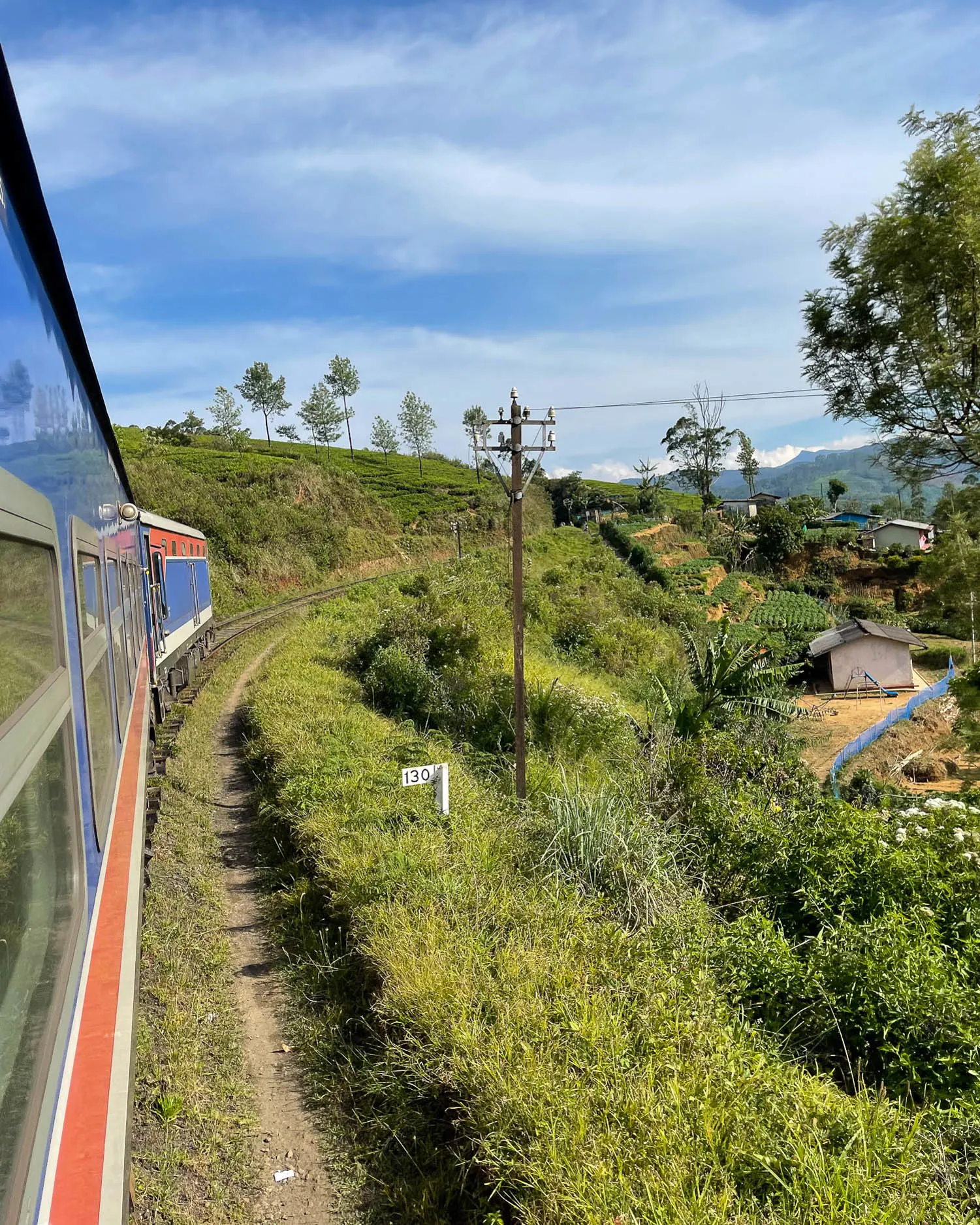
This shorter trip takes only 2 hours and you still get beautiful views of the tea plantations as you leave Nanuoya. This option also allowed us to also spend some time in Nuwara Eliya. Because tickets for “The Blue Train” are so popular, you need to go in person to any station to buy them a few days or even weeks ahead, or if using a travel agent ask them to book ahead for you.
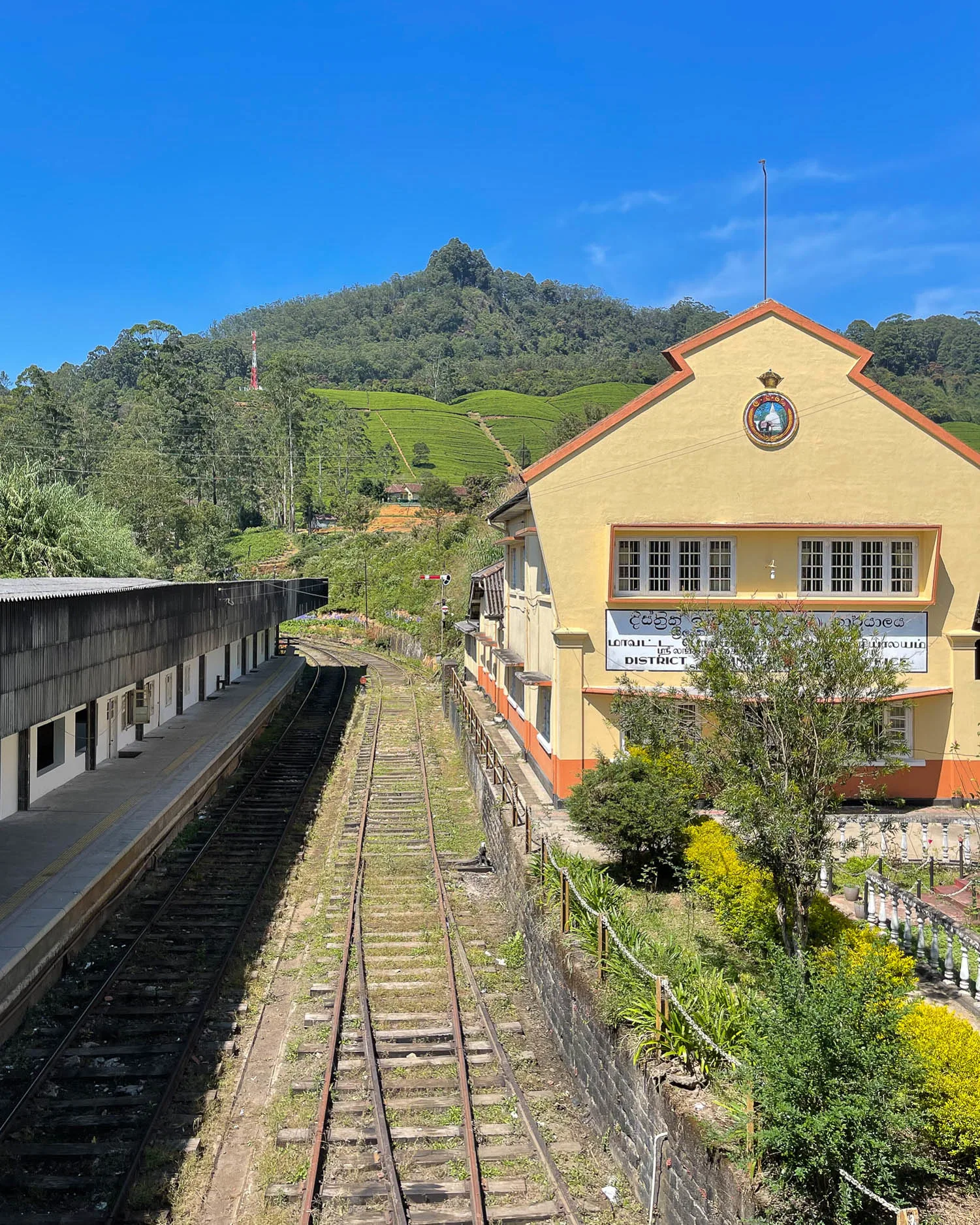
It’s best to travel in 2nd class, which offers comfortable seats and windows that open, allowing for the best photos as the train curves around a bend through the tea plantations. 3rd class offers the same views but harder seats. 1st class offers air conditioned compartments but the windows don’t open, making it more difficult to take photos.
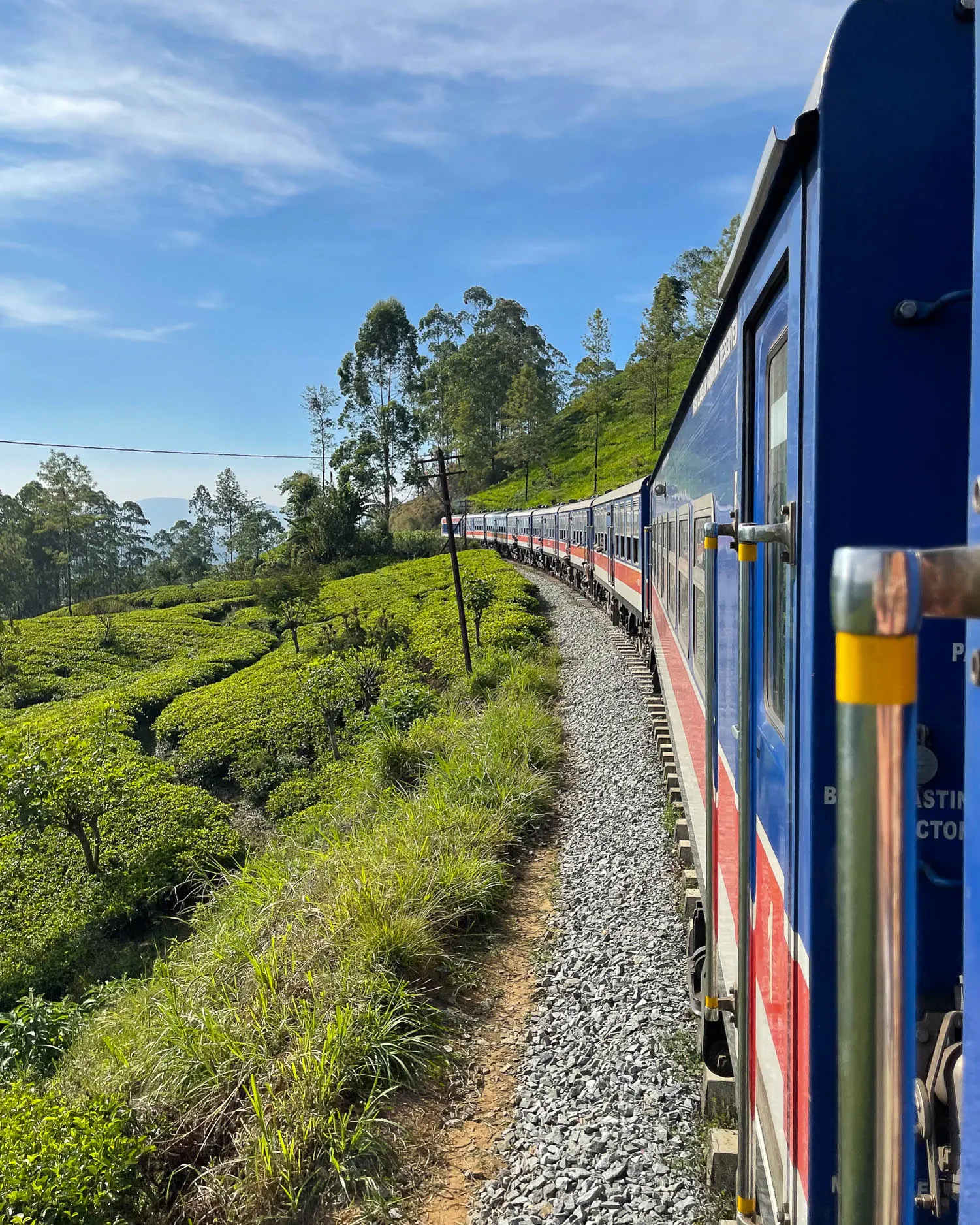
Depending on when you book, you may need to take whatever tickets are available, and we ended up in 1st class because that’s all that was left. You’ll see many photos on instagram of people hanging out of the doors and windows, but if you are going for this kind of shot, do take care as we heard tales of people falling out of the train, or getting injured, even though the train doesn’t travel that fast.
13 Ella – Little Adams Peak, Demodara bridge, Rawana Falls
Ella is a big backpacker destination and was one of the busiest places we visited in Sri Lanka’s hill country, full of 20 somethings looking for the perfect instagram photo of Little Adam’s Peak and Demodara bridge. Many land here at the end of a train journey on the picturesque “Blue Train” from Kandy. But when you get away from the busy strip of bars and restaurants aimed at the tourists, the surrounding area is undeniably pretty, taking in tea estates, waterfalls and jungle covered peaks. Here are a few of the things we enjoyed;
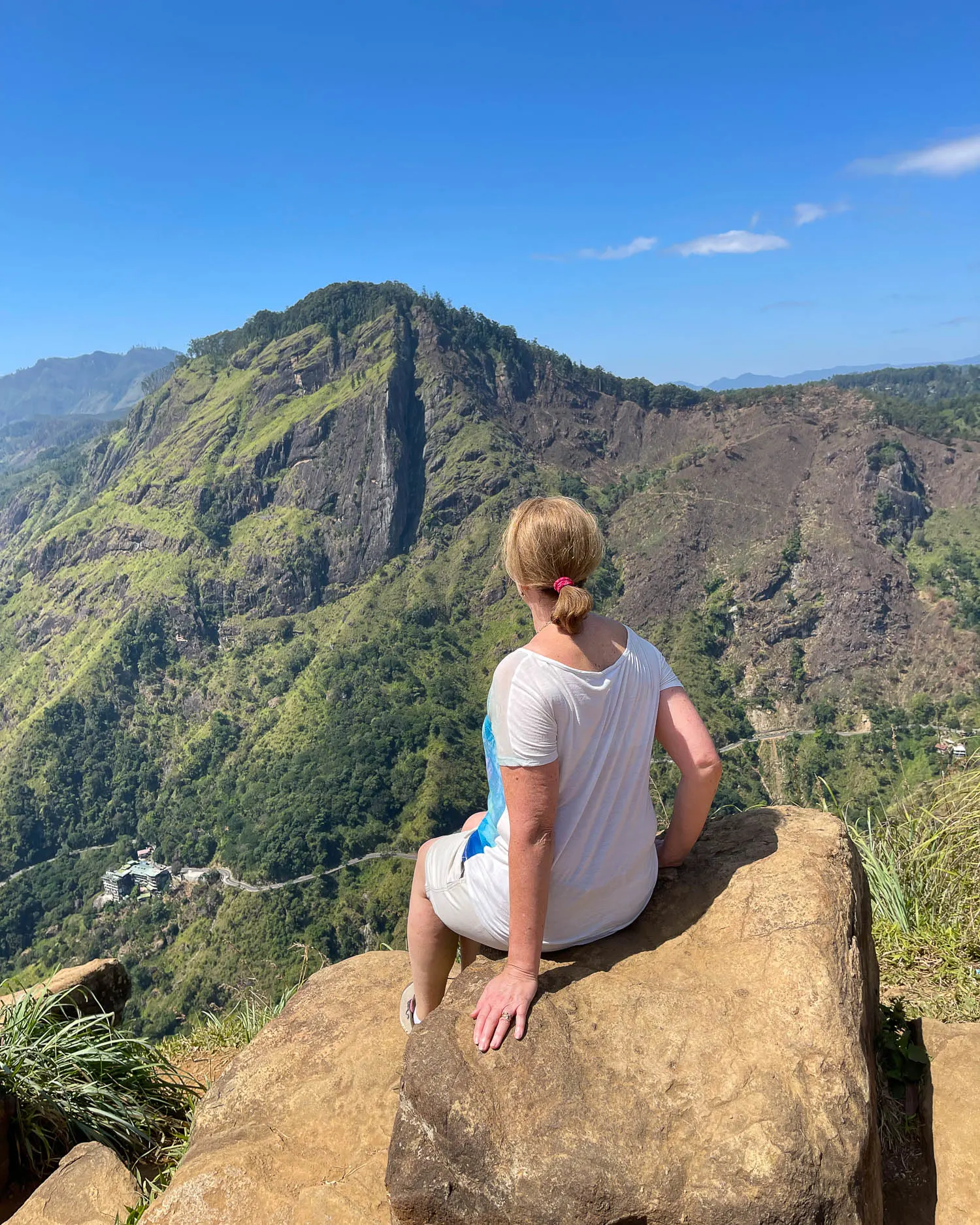
- First stop for most visitors is the easy climb up Little Adam’s Peak. Half an hour of mostly gentle walking will earn you a stunning view and plenty of photo opportunities to perch on cliff edge gazing into the distance. If you’re an avid hiker and have more time, you may want to tackle the more challenging Ella Rock, which you can see from Little Adam’s Peak.
- Thrill seekers will want to do the Flying Ravena zipline, which is just under Little Adam’s Peak, but if it’s not for you, buy an ice cream and watch them come down from the viewing platform.
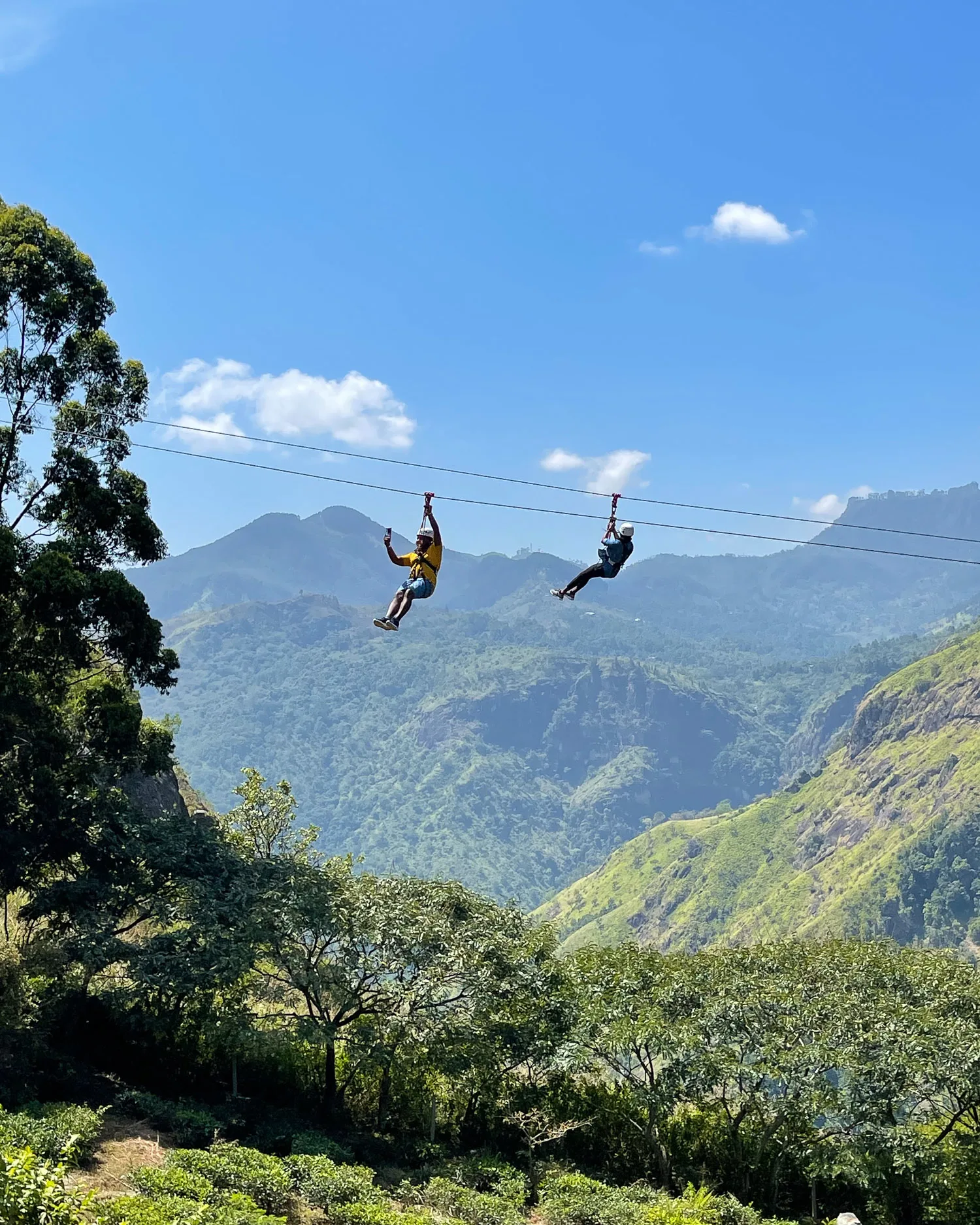
- At the foot of Little Adam’s Peak we enjoyed a scenic lunch and juice in the quirky Ella Flower Garden restaurant living up to its name with displays succulents and English style flower borders.
- After Little Adam’s Peak its not too far to walk along the shady path to Demodara Bridge, also known as 9 arches bridge. There are lots of photos to be taken from all angles of the bridge and if you’re clever or lucky you’ll be there when a train crosses the bridge for an extra special photo.
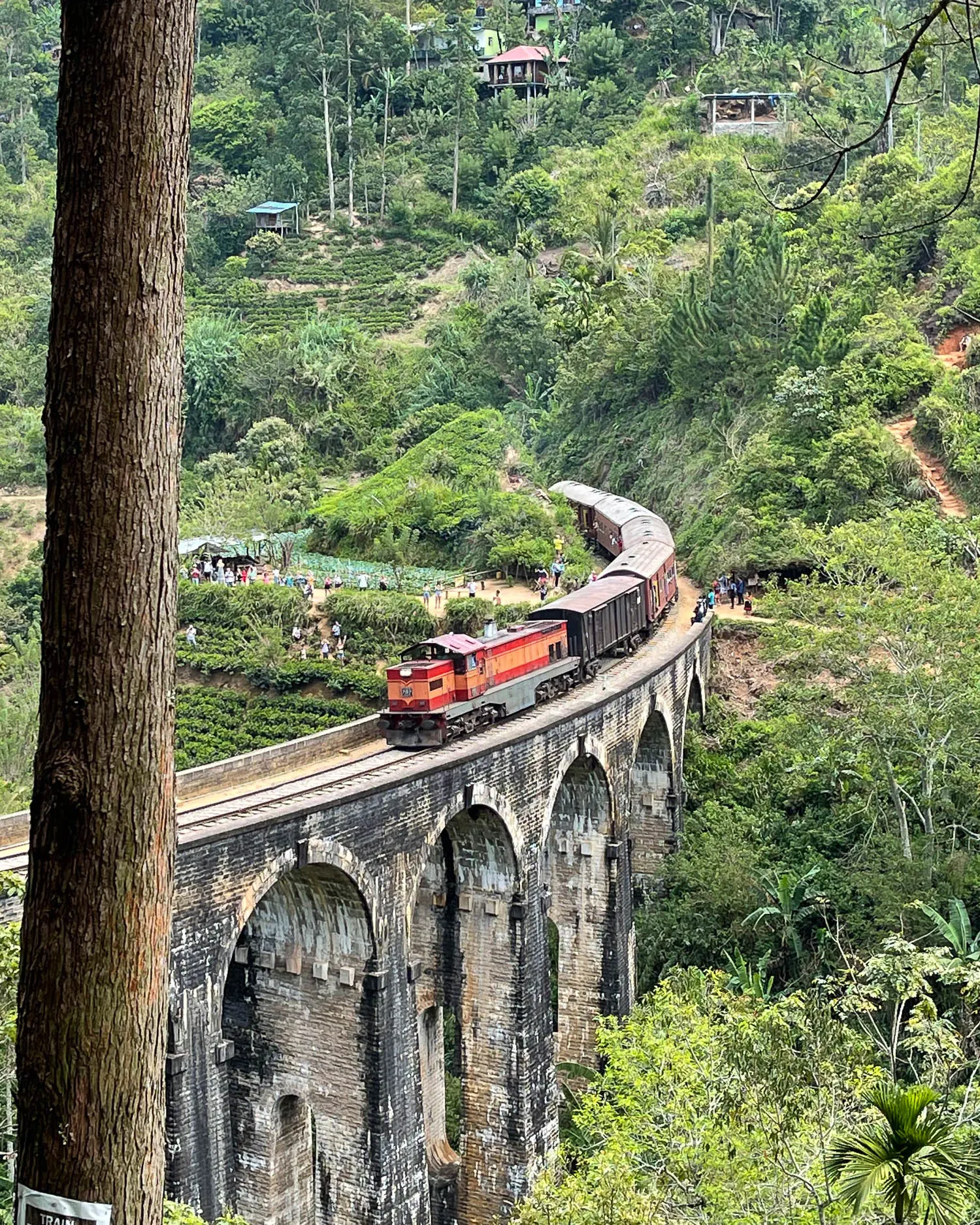
- A short ride by tuk tuk from town is the Ravana Falls which are conveniently located right by the road for a photo stop.
- There are a couple of tea estates close by; the Newburgh tea factory which is a little further along the road from Demodara Bridge and the Uva Halpewatte tea factory, a little way out of town.
- If you want a change from Rice and Curry, have dinner at the busy hipster hangout Chill Cafe, ideally reserving a first floor balcony table so you can watch the action along the main road.
14 Elephants at Udawalawe
There are a number of national parks where you can see elephants and other wildlife in Sri Lanka. The best known are Minneriya, Udawalawe and Yala national parks. We took a safari in Undawalawe and were very happy with our experience. No private cars are allowed in the park, so you’ll need to hire a jeep with driver and / or guide to take you round the park.
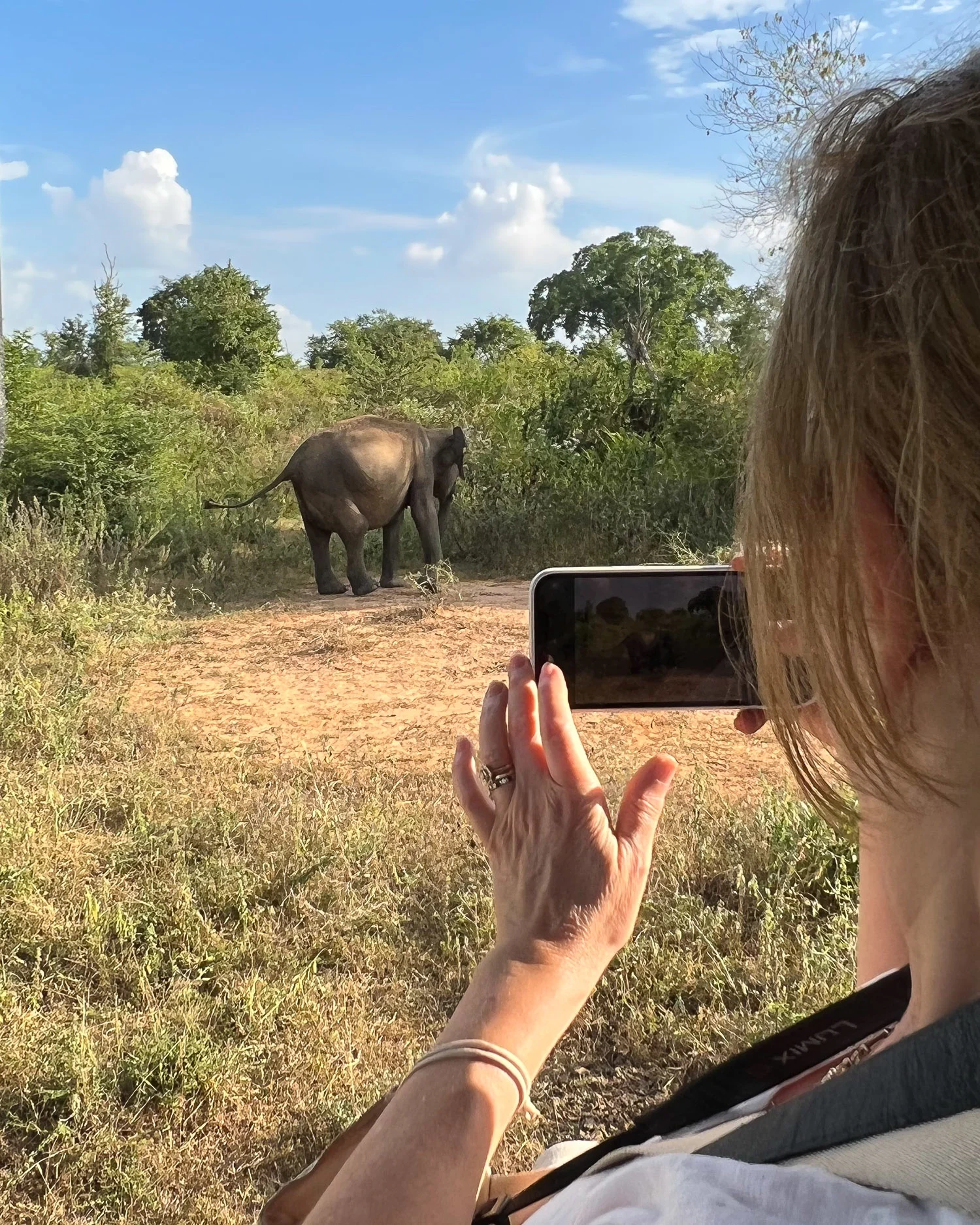
You can just turn up at the park ticket office and hire a jeep there, or for the best experience arrange a jeep tour with your accommodation or another reputable provider in advance. Wildlife tours of the park are normally taken early in the morning or the afternoon around 3.30pm when the temperatures are cooler and the animals are most active. We went in the afternoon and spent several hours until the park closed at 6pm, you can also do a full day safari but for me that would be a bit too long.
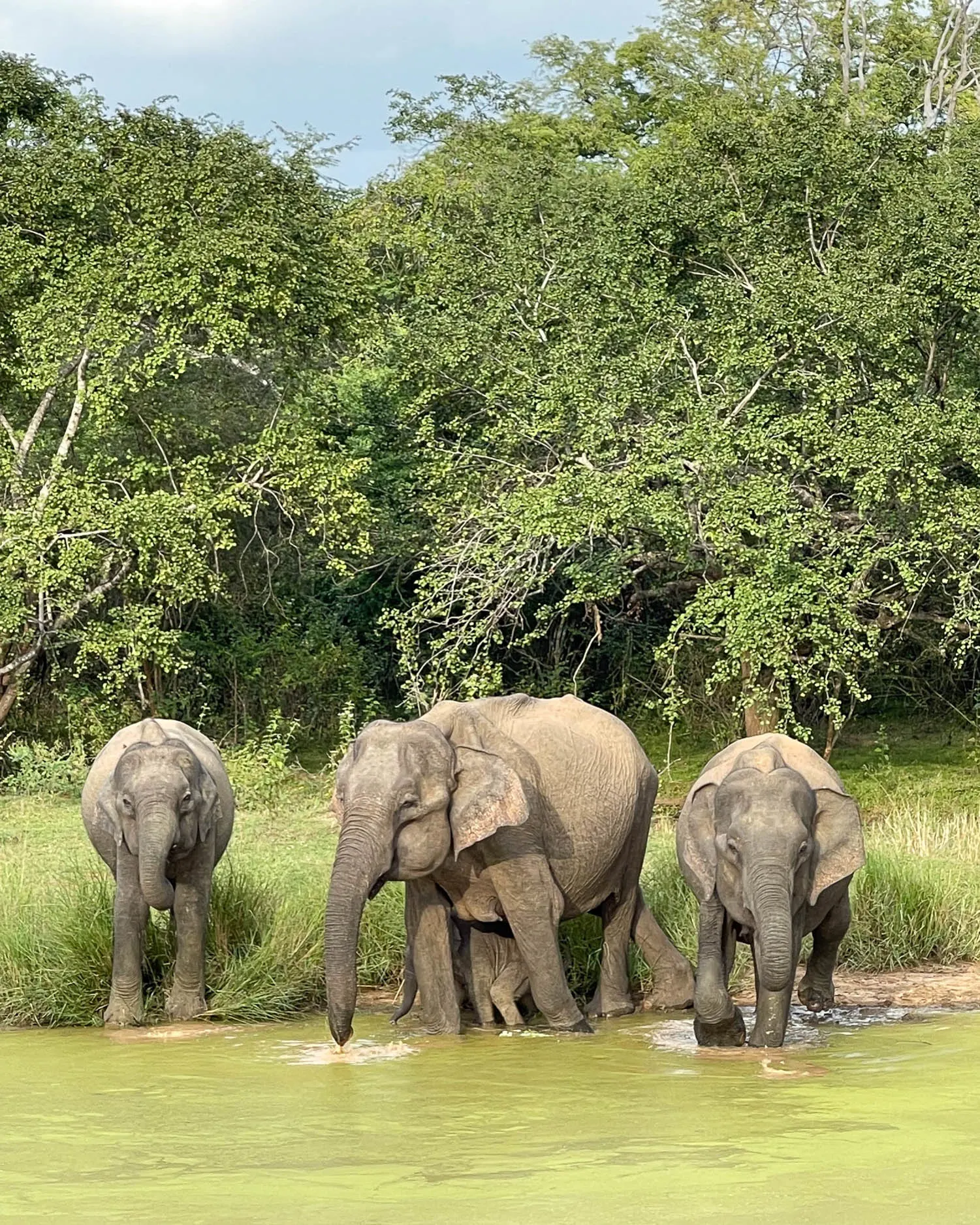
We were thrilled to see so many elephants, some quite close up as they munched through the vegetation, scratched against a tree trunk, bathed in the lake or showered themselves with earth to protect from the sun. It was an especially magical experience to see a group of 3 females with a baby only a few months old, coming to bathe in a pool then heading out into the bush.
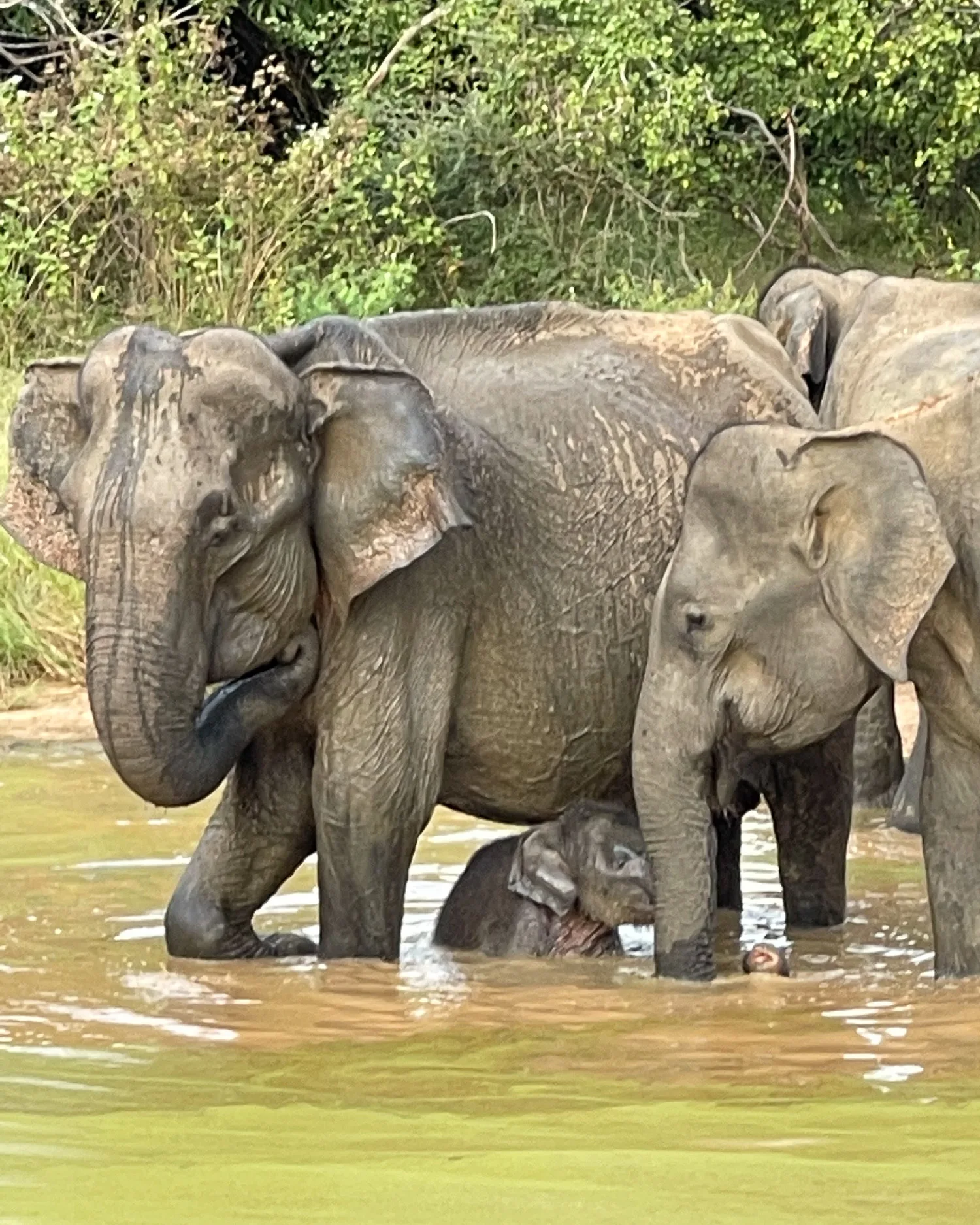
If you use a reputable local company for your tour, the driver will be knowledgeable to tell you about the animals and experienced in finding the spots where you are most likely to see them. We also saw lots of birds, iguana, crocodiles, water buffalo, monkeys and peacocks. Leopards are known to be in the park but are rarely spotted.
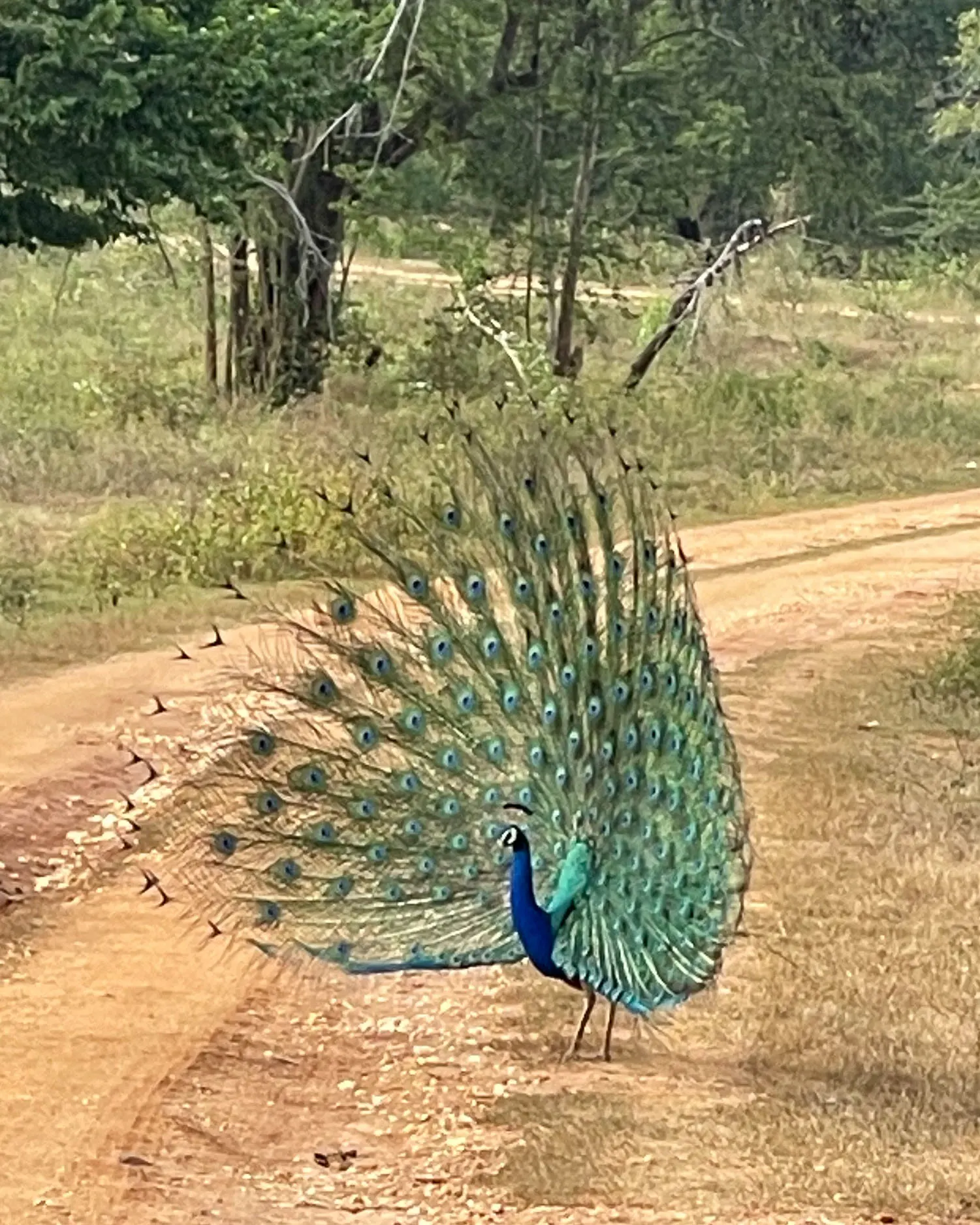
15 Mirissa – chill on the beach, whale watching and turtles
From Udawalawe we drove to Sri Lanka’s south coast for some relaxation time at Mirissa. There are plenty of gorgeous beaches and places to stay in the stretch of coastline between Yala and Galle. With more time we’d have loved to some other places along the coast such as Hirikatiya, Midigama and Unawatuna.
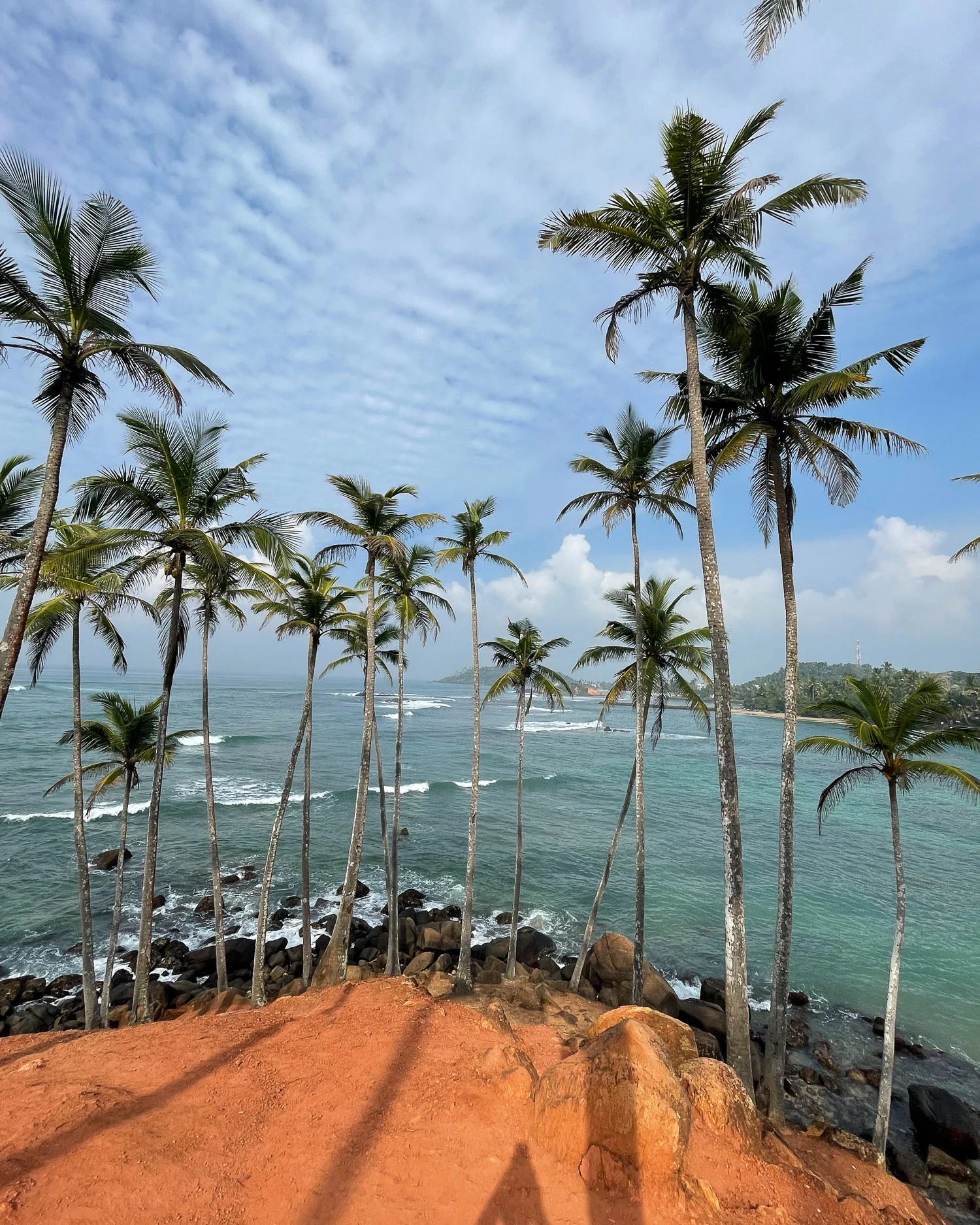
We were happy with our choice of Mirissa as a place to base ourselves for a couple of days, as there’s plenty of accommodation that’s right by the sea, with a series of pretty, palm fringed beaches to choose from. Mirissa is known as the place to go whale and dolphin spotting, and although we didn’t have time for this, we did some snorkelling and saw turtles close to the beach.
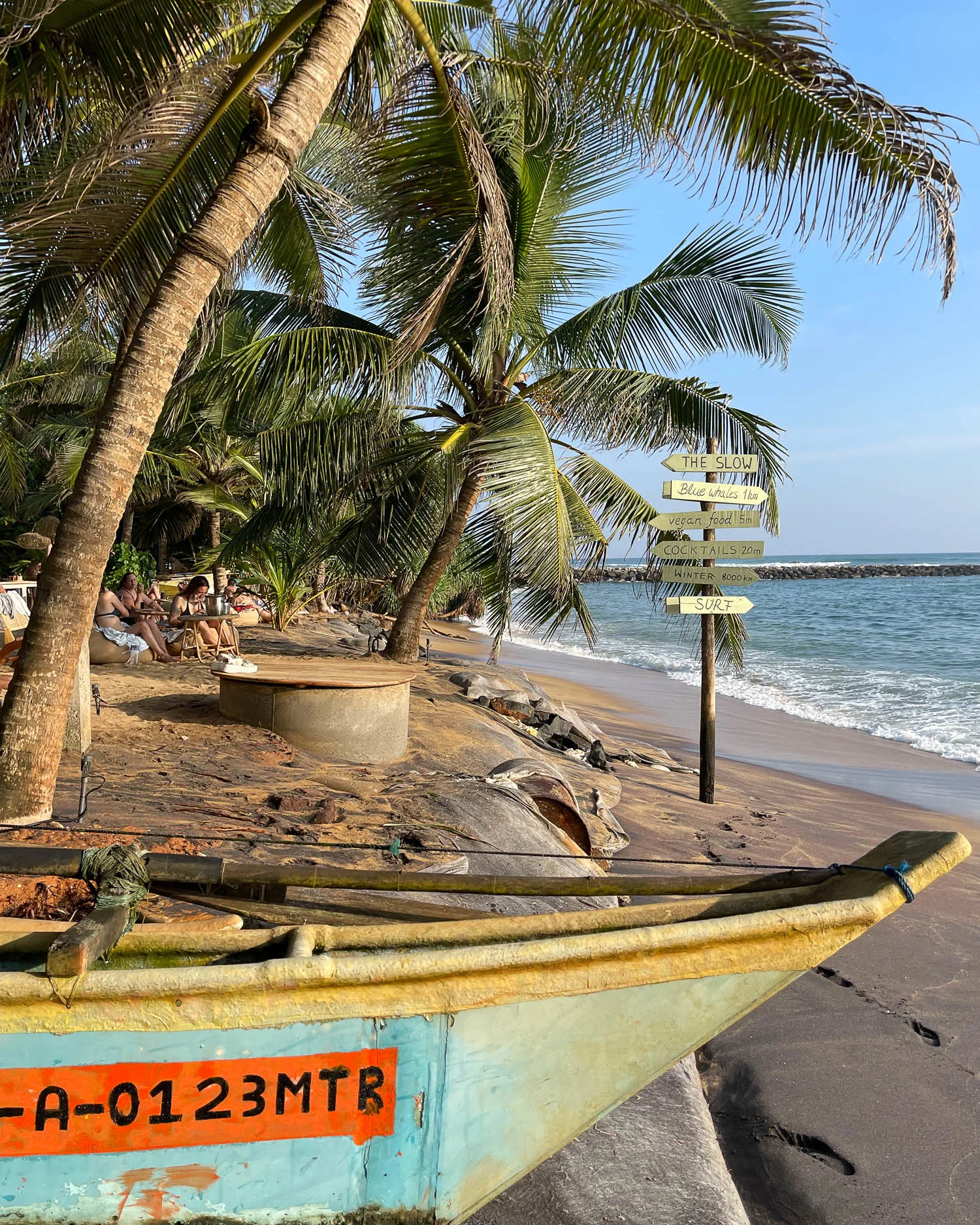
Our hotel The Slow was a seductive and chilled out base to enjoy the waves, watch the surfers in the morning and take some time to unwind at the end of our road trip.
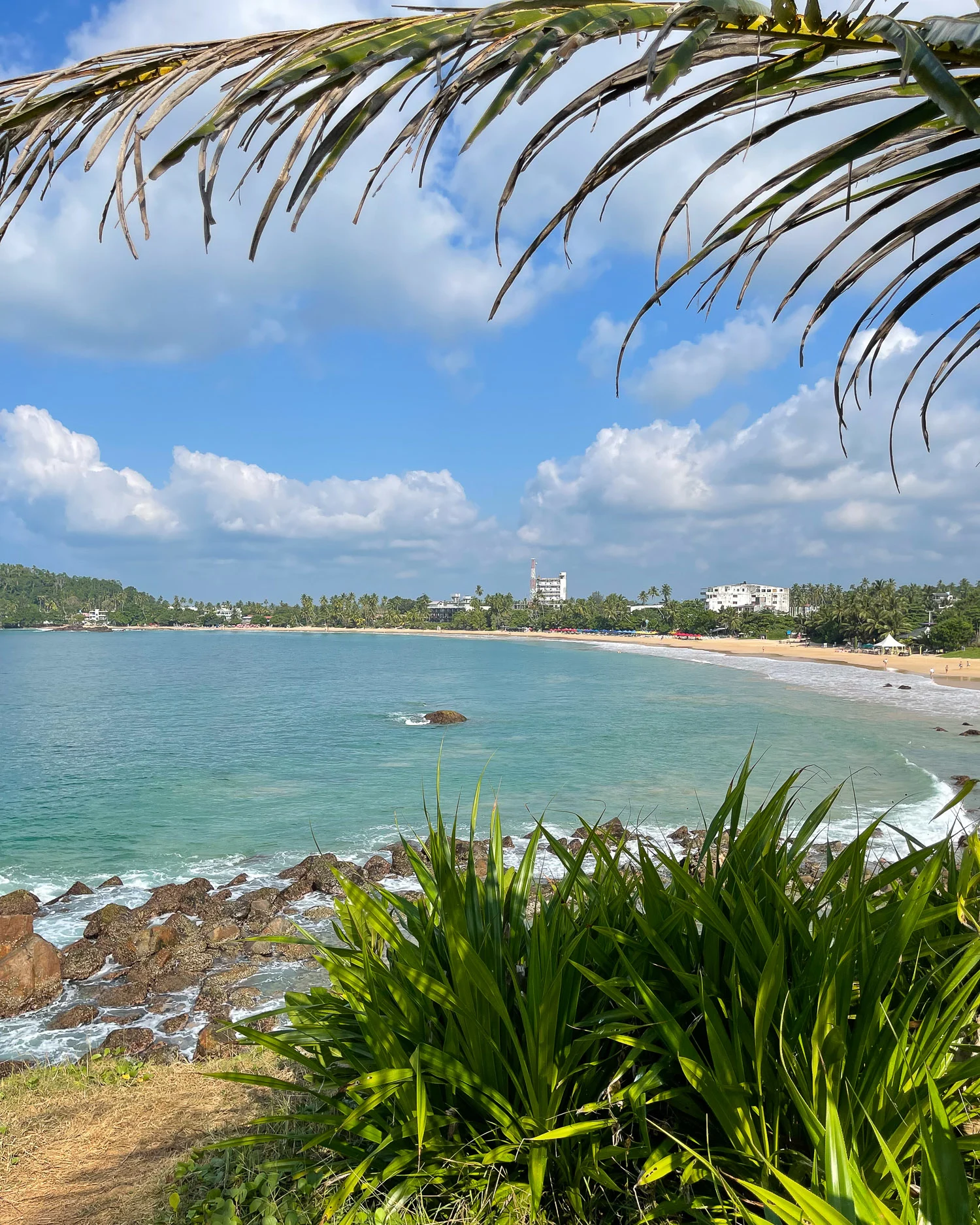
16 Weligama – surfing and seafood
Just around the bay from Mirissa and just a 10 minute tuk tuk ride away is Weligama, with a long, sandy beach that’s popular with surfers. The beach is broad and especially popular in the evening, when the locals come out to swim, play a game of beach cricket and enjoy the sunset.
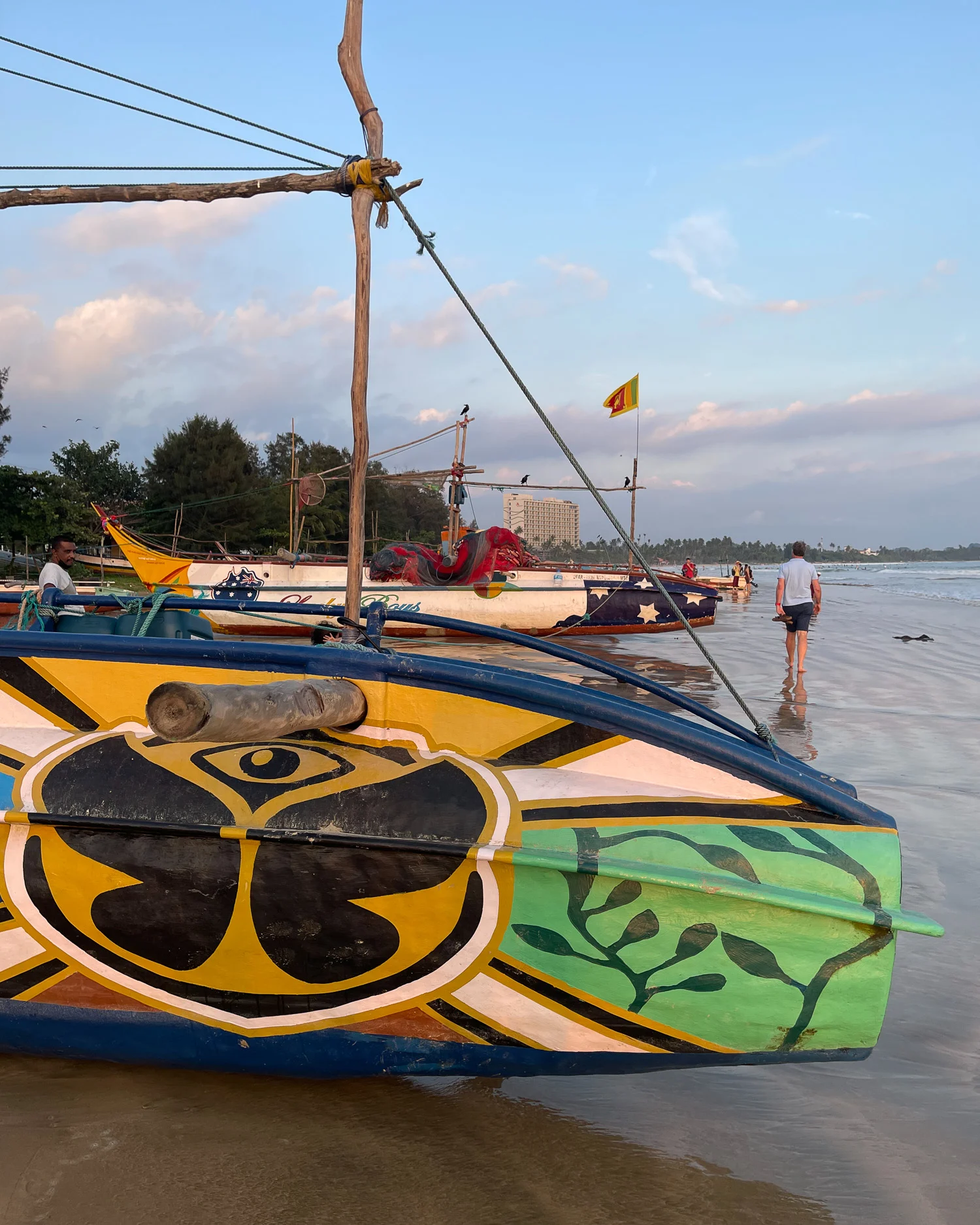
The road runs right behind the beach, so there is little beachfront accommodation as it’s all tucked away in lanes on the other side of the road. Weligama is a thriving fishing area and you can see the colourful traditional catamarans pulled up on the beach at the end of the day. In the evenings, fish stalls set up along the beach, each with tables to dine on the beach.
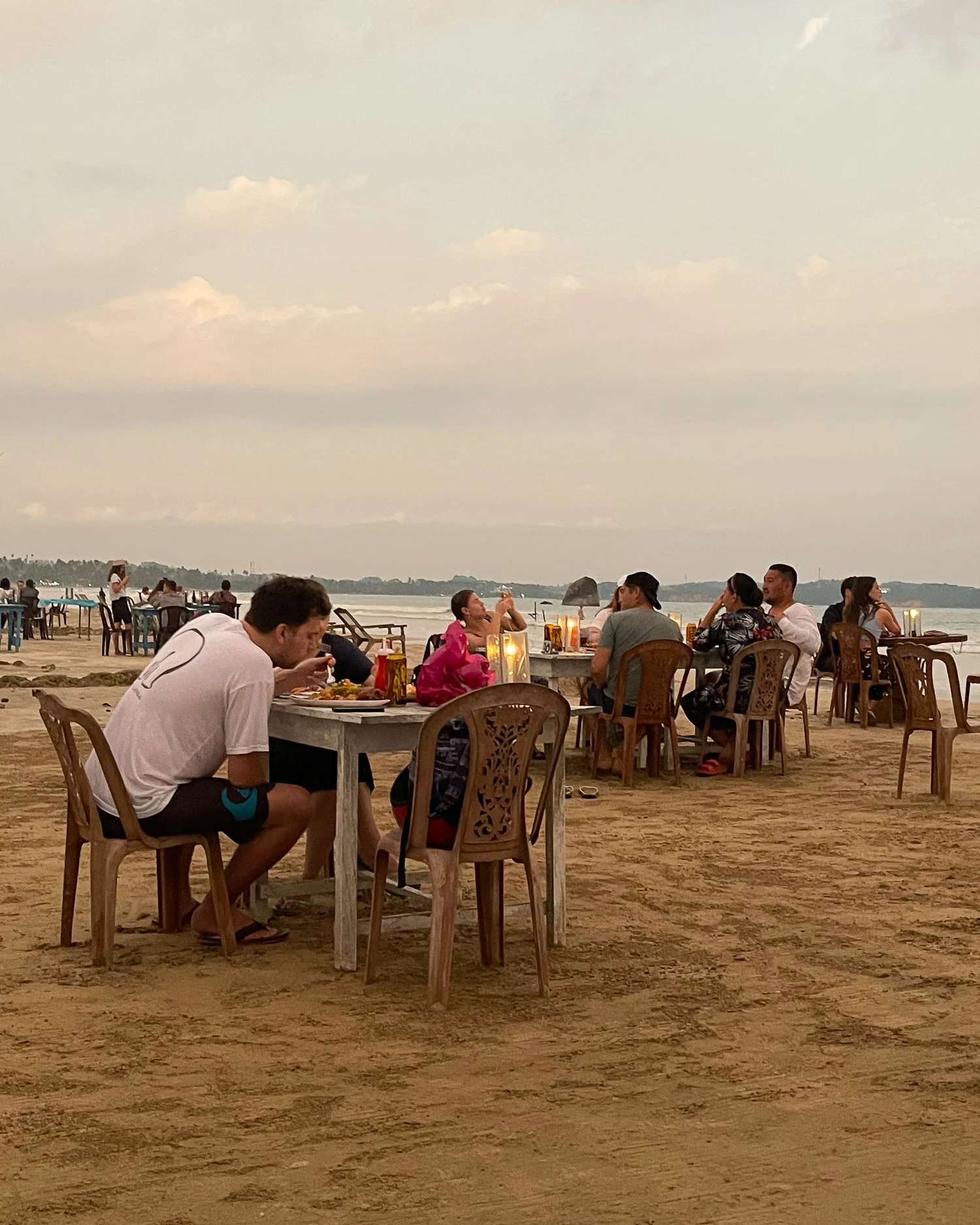
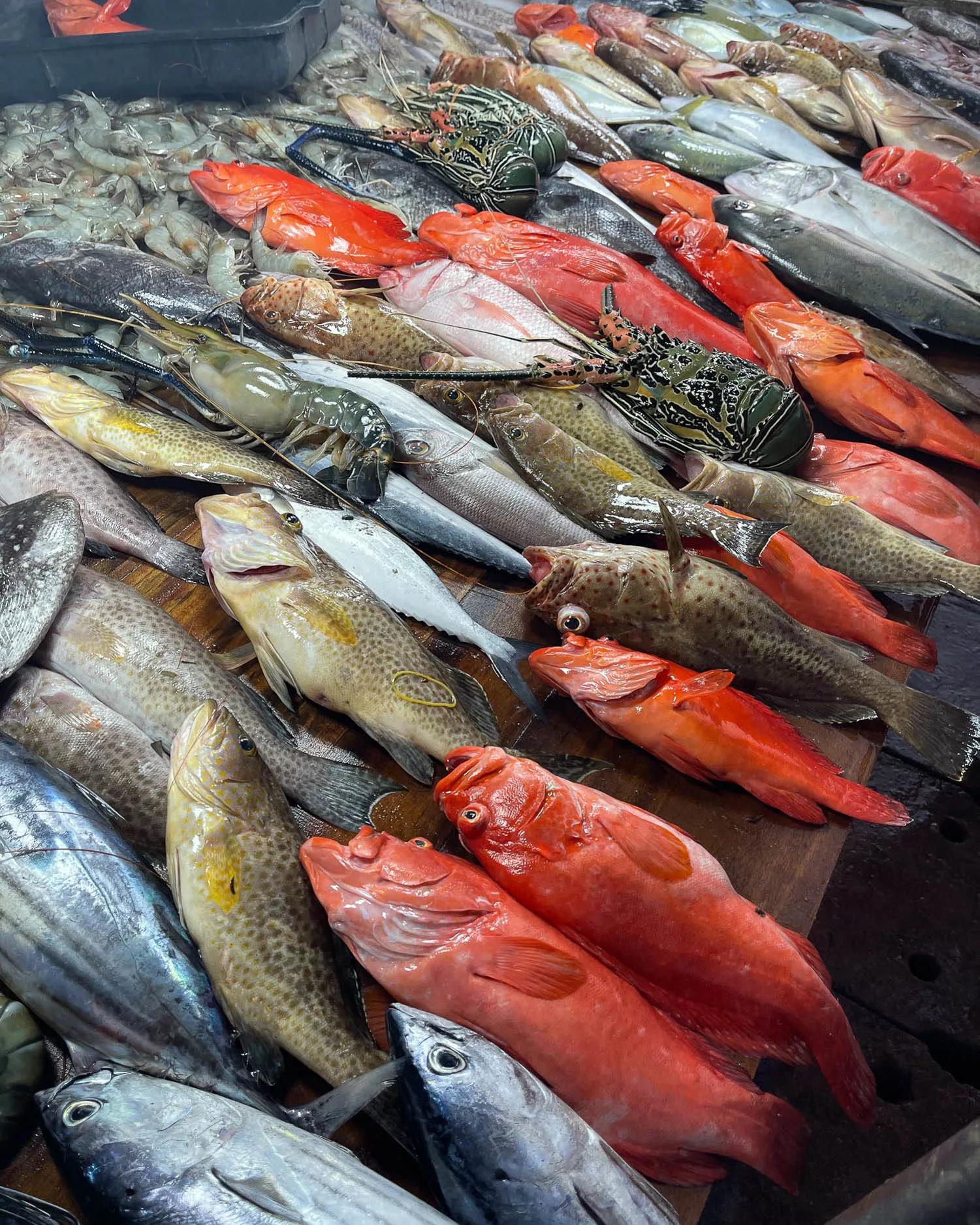
The system is that you choose the fresh fish, prawns, octopus, or lobster from the stall which is sold by weight, and then it’s cooked and brought to you in a meal with rice, fries and salad. It was magical sitting on the beach, watching the waves and the sunset, then feasting on fresh fish at the end of the day.
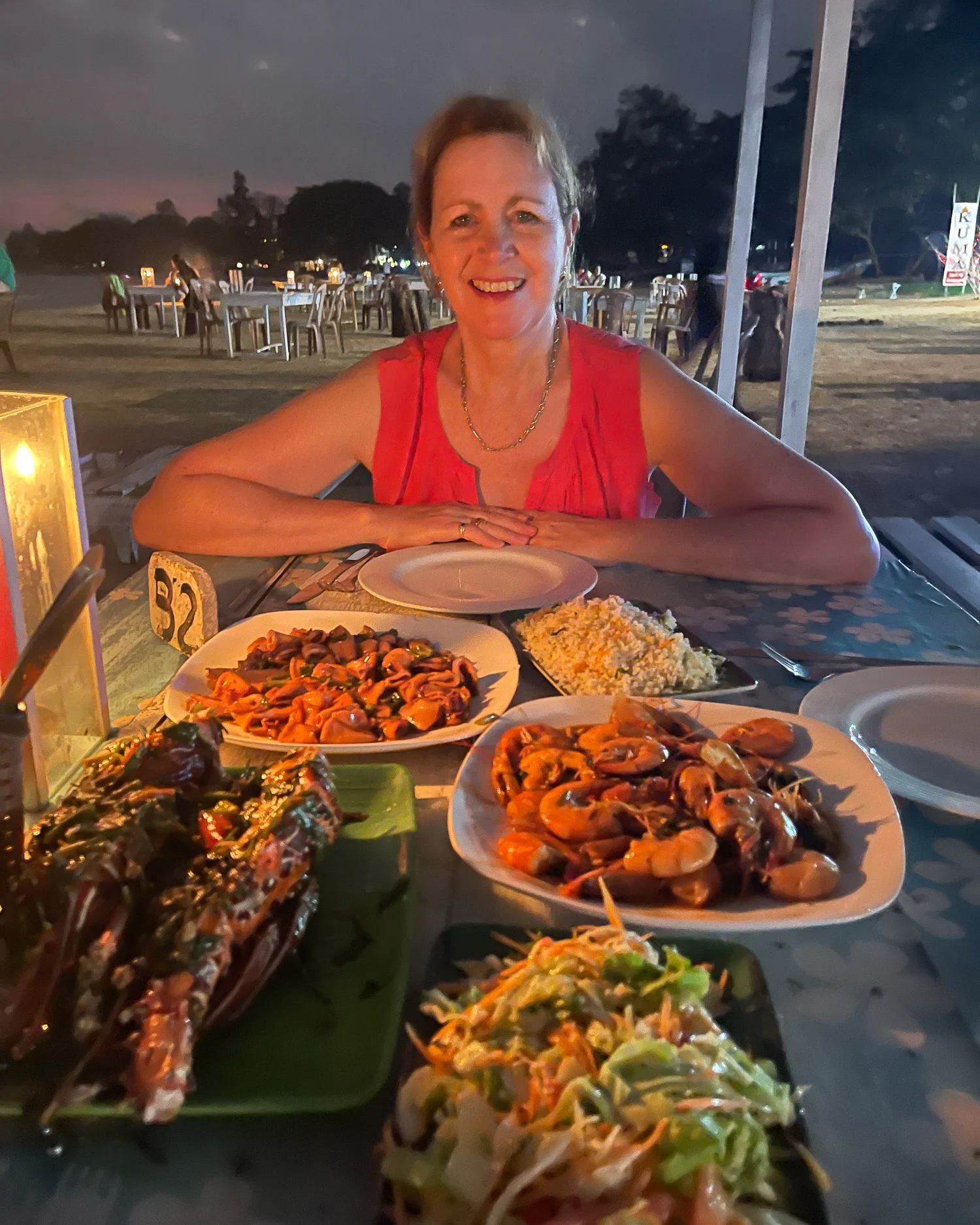
17 Galle – colonial history in the old fort and ramparts
Galle was one of our favourite stops as we made our way along the south coast of Sri Lanka at the end of our trip. The main attraction of this old colonial town is the fort area, enclosed within the ramparts. Like most visitors we spent all our time there, other than the tuk tuk from the station and a wave at the famous cricket ground!
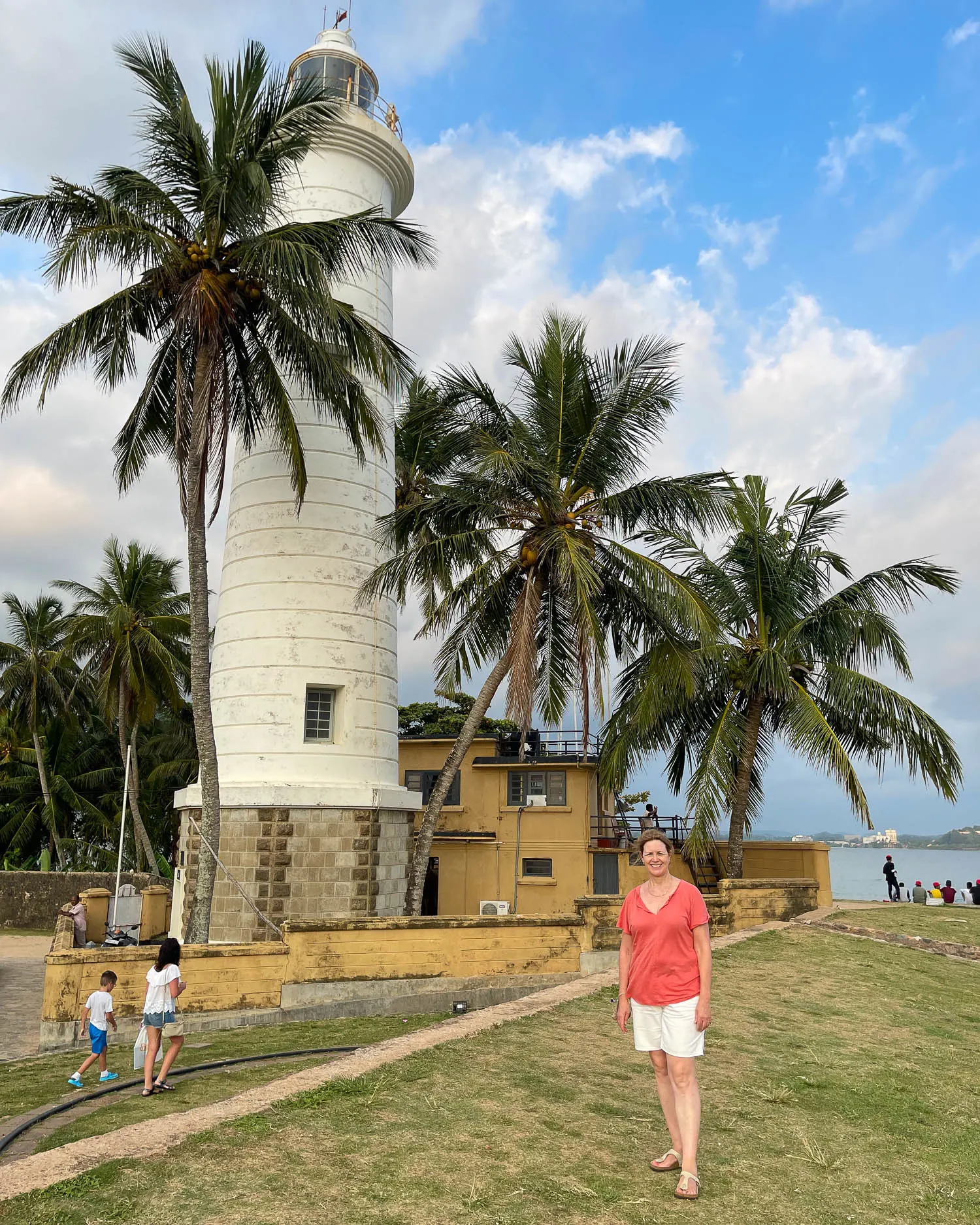
The port had its heyday in the 16th and 17th century when the Portuguese and then the Dutch were in charge leaving churches and old buildings from that era. Many of the houses in the narrow streets have been made into guest houses, hotels, restaurants and shops and the fort area is just as popular with local visitors walking the ramparts or swimming on the beach, as it is with overseas visitors. Here’s what we enjoyed;
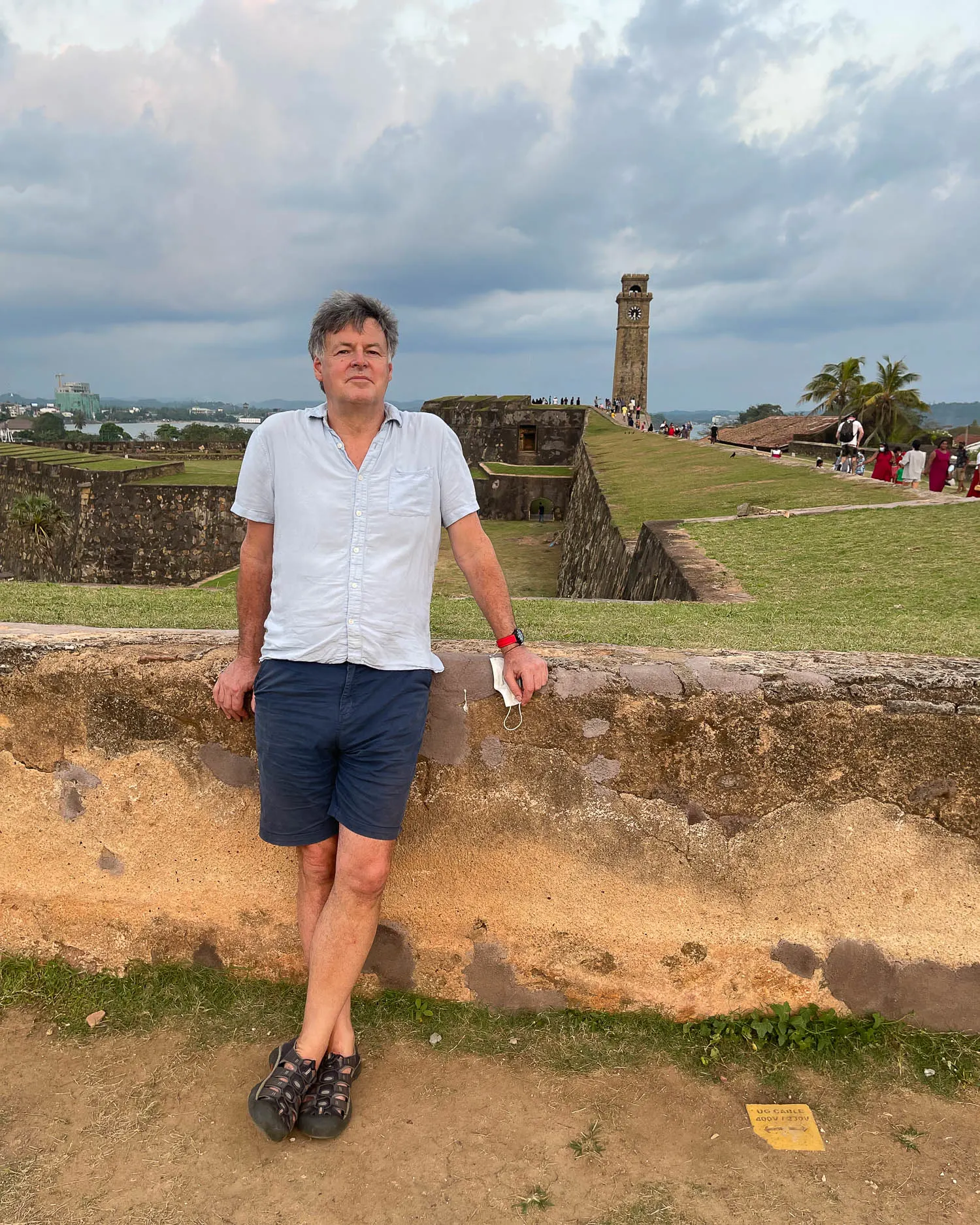
- Walk the fort ramparts at sunset to see everyone out enjoying the evening air, playing cricket, having wedding and engagement photos taken or swimming from the beach.
- Have your photo taken at the famous lighthouse, the photographic symbol of Galle although it was only built in 1938.
- Shop for upscale souvenirs and jewellery around Pedlar Street – this is a great place to have jewellery made to your own design, using the Sri Lankan sapphires, rubies and moonstones.
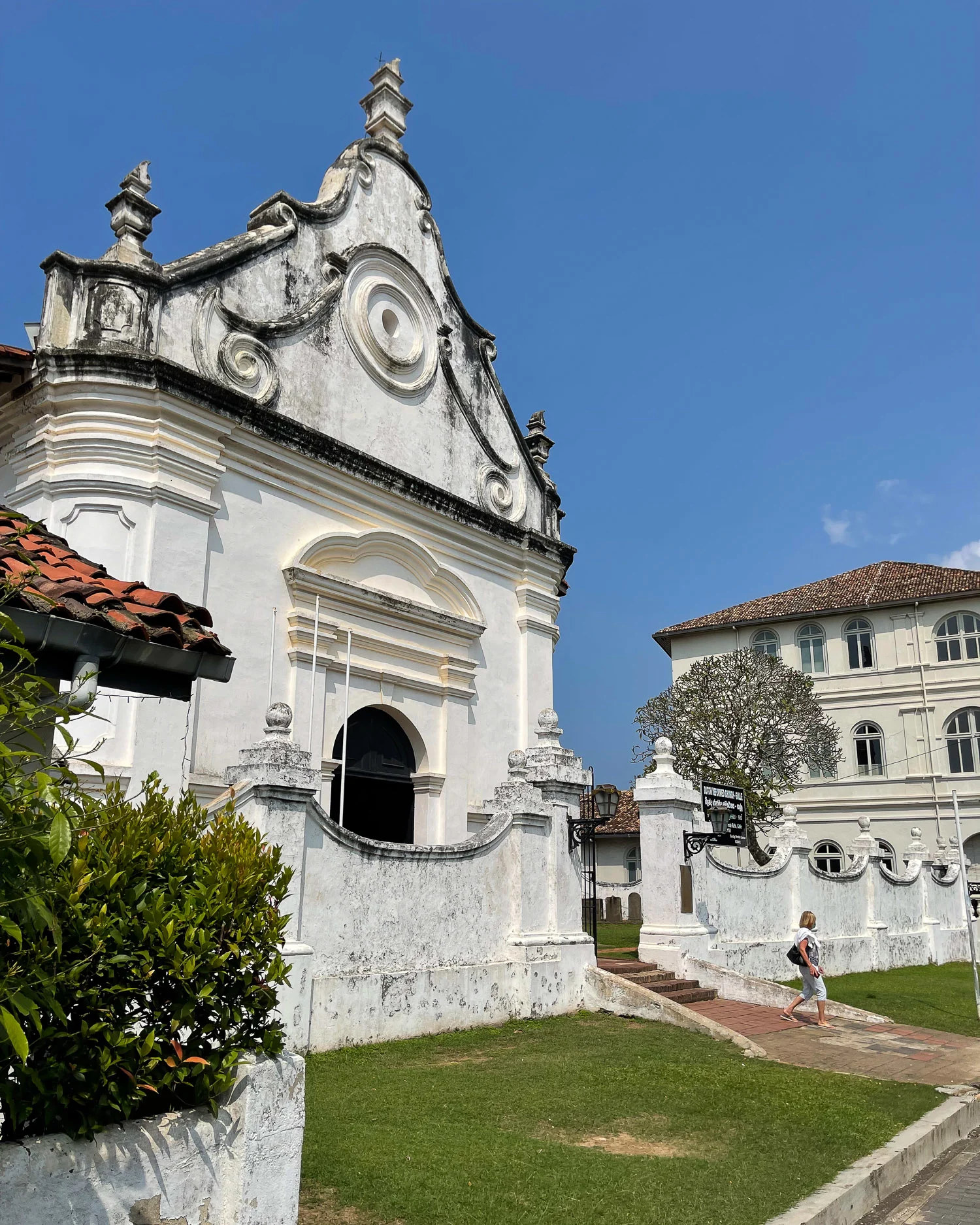
- Visit the atmospheric Dutch Reformed Church with gravestones dating back to the 18th century.
- Soak up some history and enjoy the older buildings at the various museums, such as the Galle National Museum, the Museum of Maritime archaeology and the Historical Mansion Museum.
- Sip a cocktail at the elegant Amangalla Hotel, formerly the Dutch Governor’s residence built in 1684.
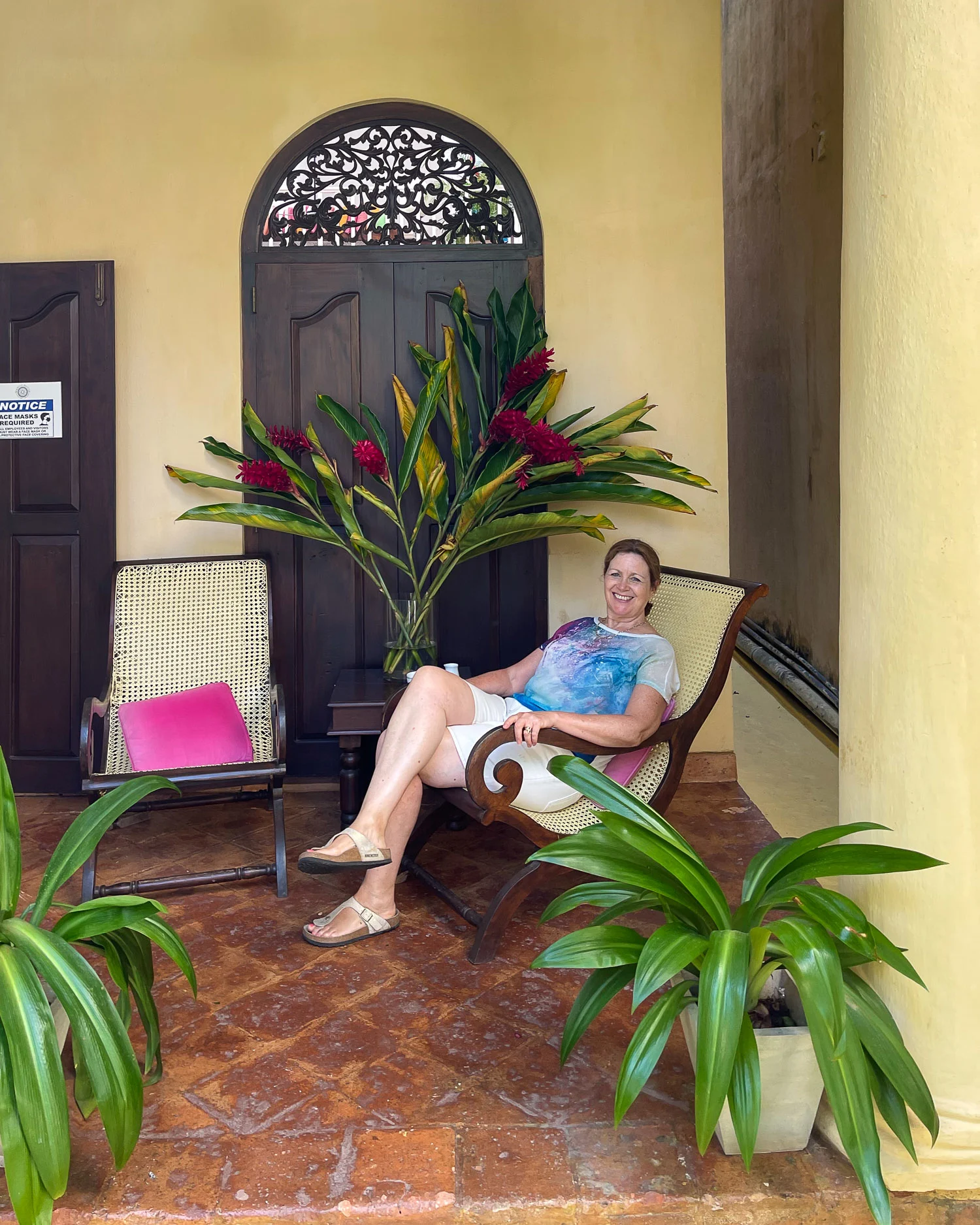
18 Bentota – watersports, river trips and Geoffrey Bawa
Just south of Colombo on Sri Lanka’s west coast, is Bentota, our final stop on the trip before we returned to Colombo and our flight home. There’s a fantastic beach here, with a wide range of accommodation from classy hotels to boutique villas, residences and guest houses.
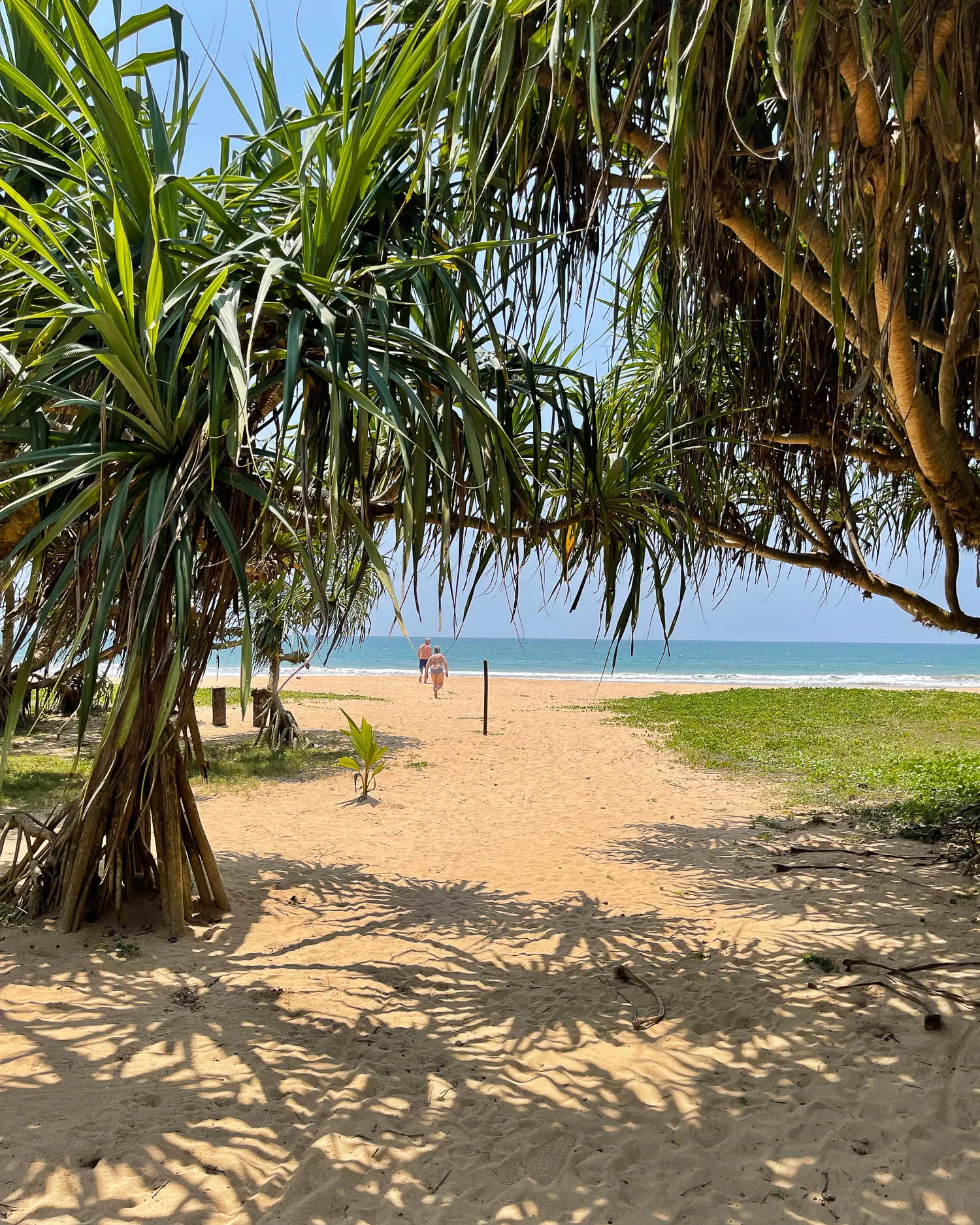
The beautiful, broad beach is accessible from many of the hotels such as the elegant Club Villa where we stayed. Bentota also offers a saltwater lagoon which is popular for boat trips to spot birds and wildlife. The sheltered lagoon is used for all kinds of water sports, from windsurfing to jet ski, although we didn’t indulge in any of these adrenaline filled activities.
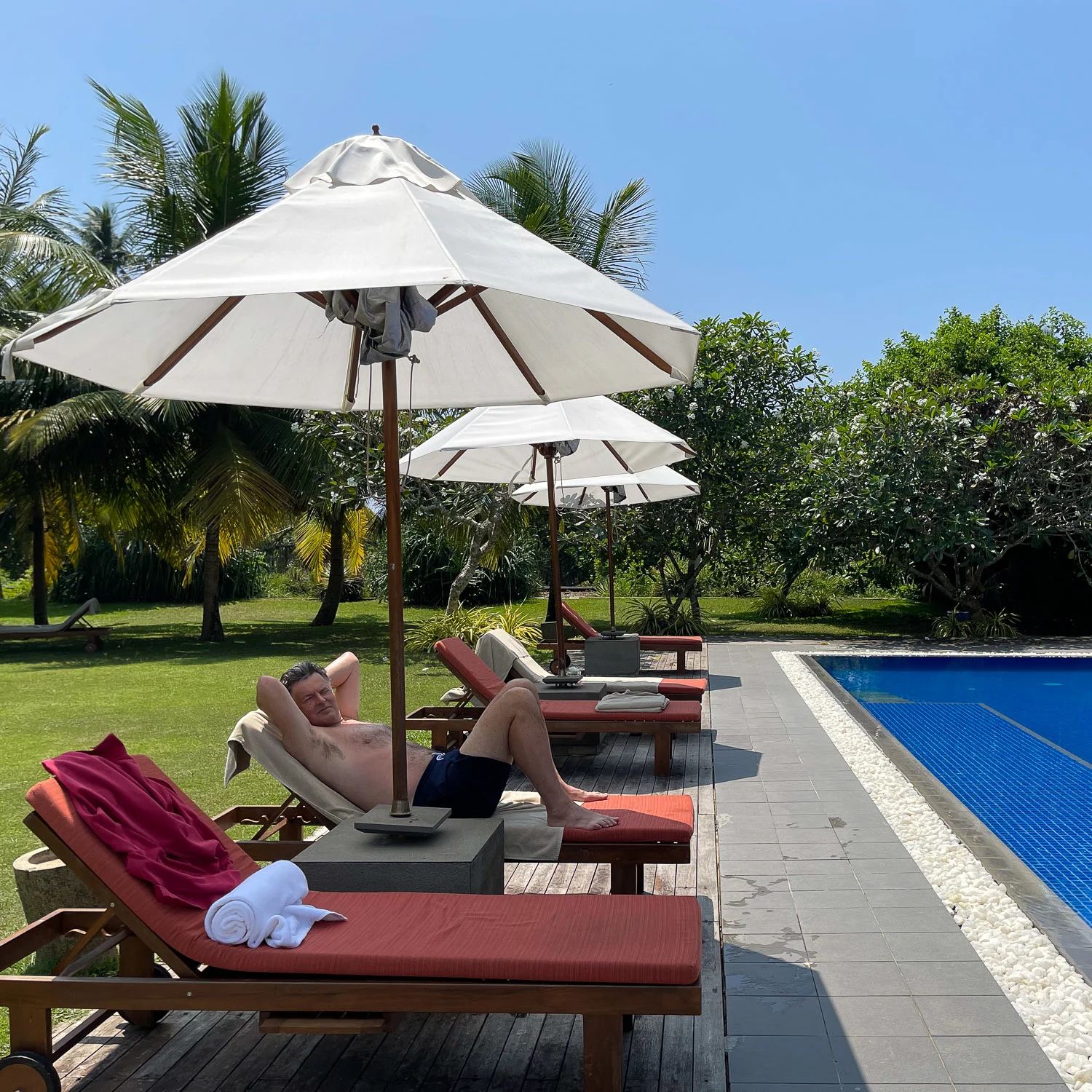
Instead we opted for a trip to visit the Geoffrey Bawa country estate of Lunuganga, with a beautiful garden that the Sri Lankan architect created over his lifetime. You can just catch a glimpse of his house, which is now run as a luxury hotel. Just across the road from our hotel, we also discovered another luxury residence Boutique 87, also with gorgeous gardens created by Geoffrey Bawa, although it’s not well known that you can visit it.
For us Bentota was about relaxation and Geoffrey Bawa, but there’s plenty more to do besides!
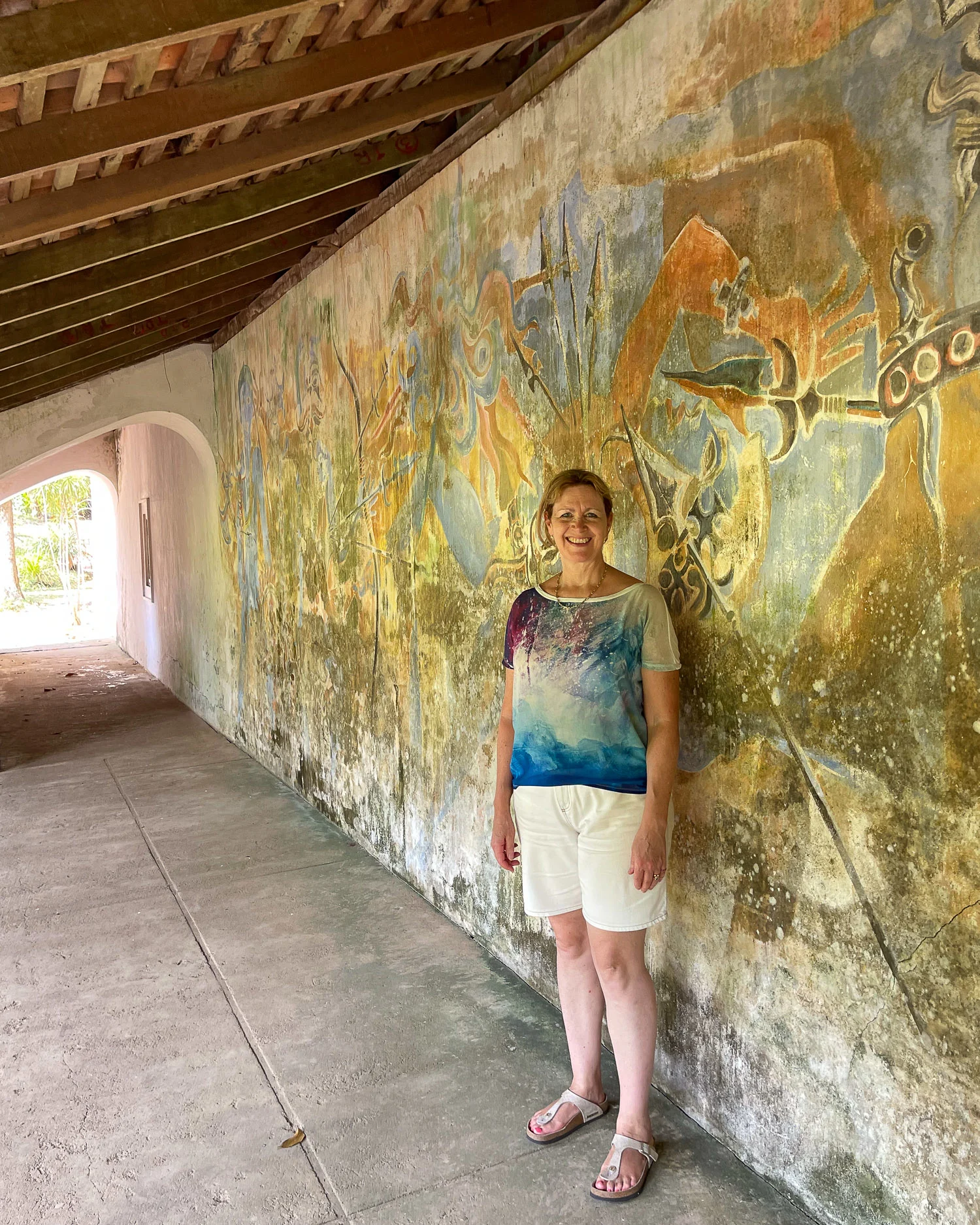
19 Eat rice and curry – everywhere!
One of the inexpensive treats of Sri Lankan food is the Rice and Curry that you find everywhere, from roadside cafes to upscale restaurants. Rice and Curry is not one type of curry but generally refers to a buffet or selection of different curries that are served with rice or rotti.
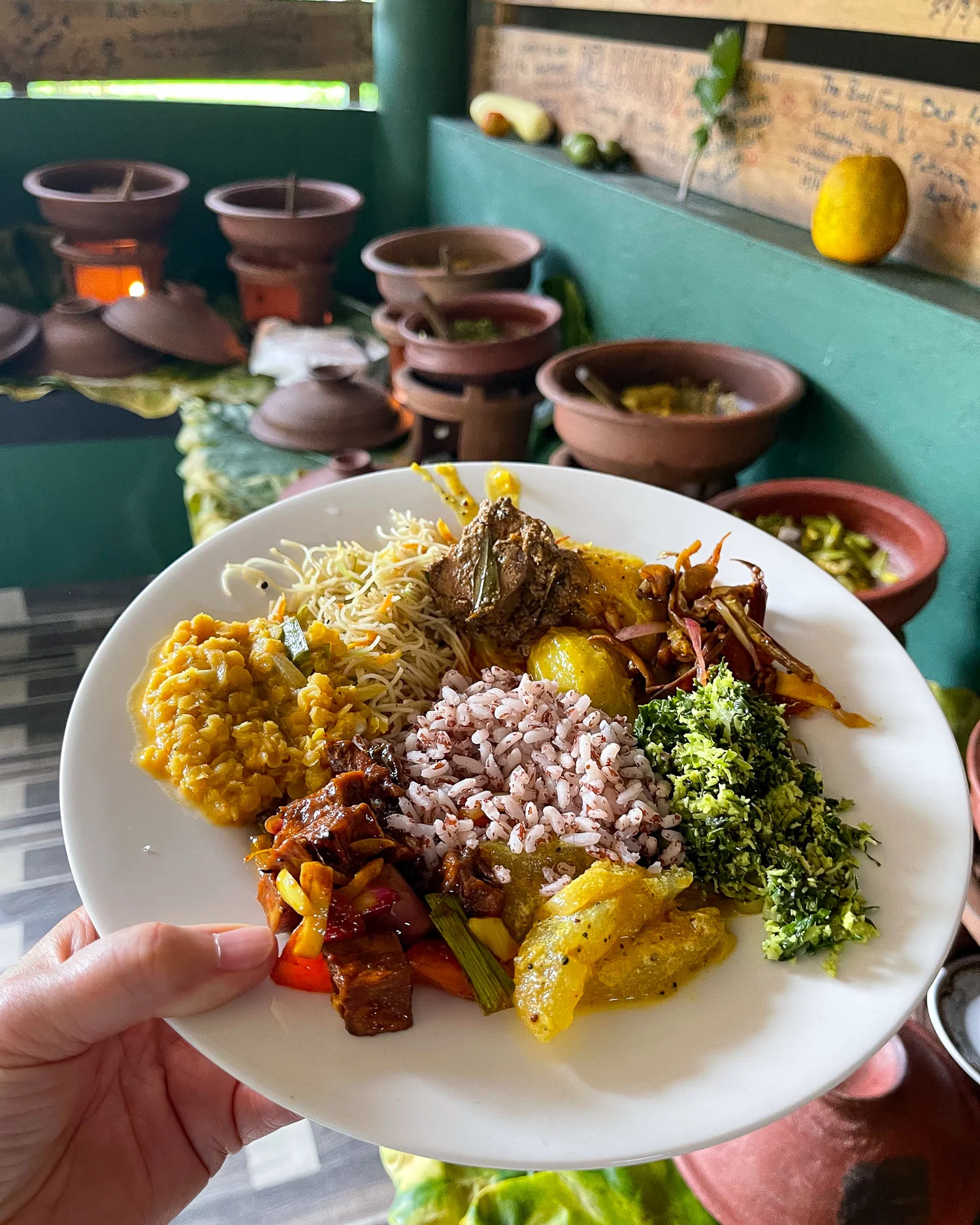
This is typically served at lunchtime and there are many places that cater for locals, with a well priced deal and selection of curries, that are mainly vegetarian with perhaps one or two chicken or fish dishes. In local cafes, you’ll see the different dishes in clay pots keeping warm over burners, and it’s generally a serve yourself, all you can eat system.
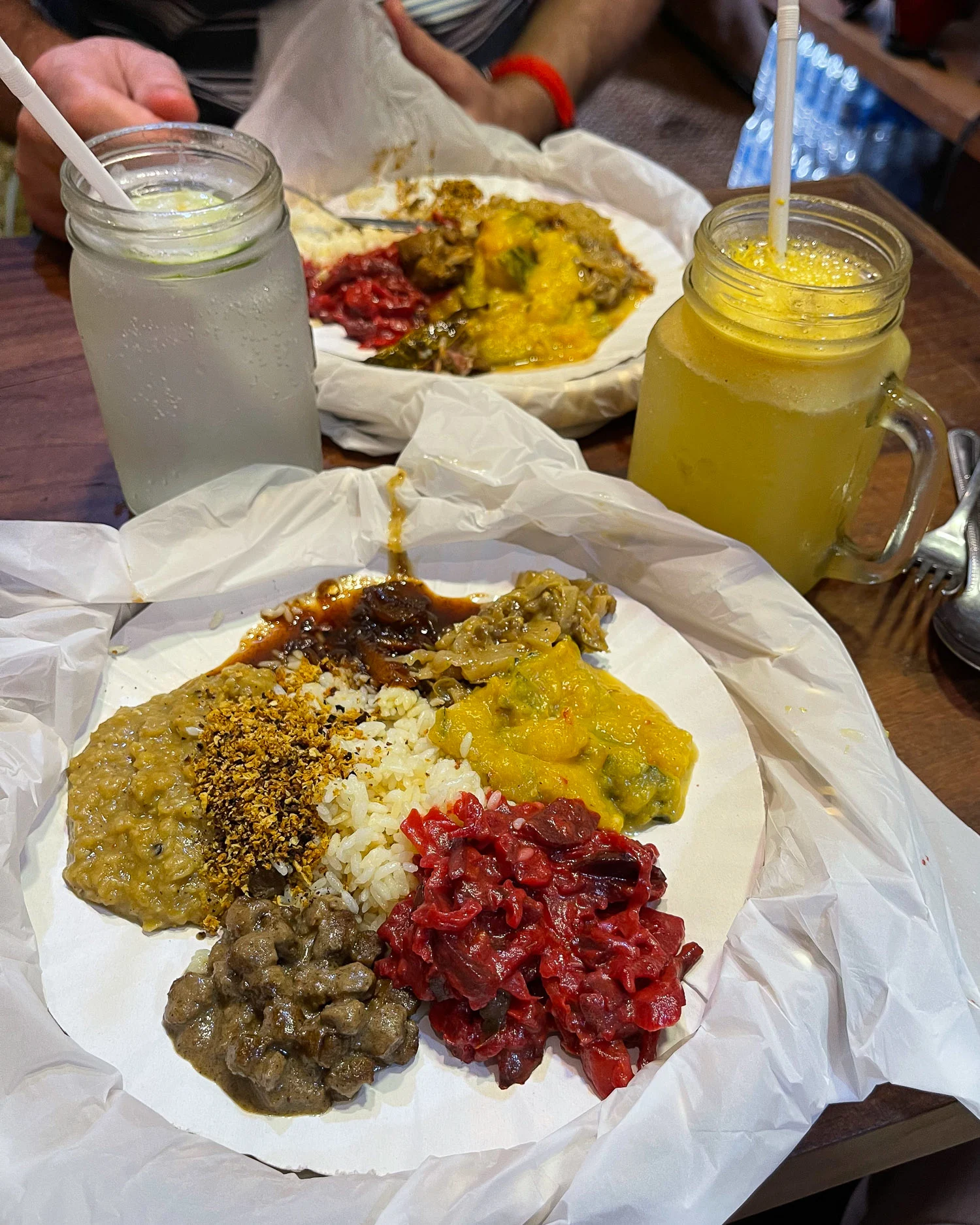
In cheaper places the curry may be served on a sheet of plastic on top of the plate, making for easy disposal of any leftovers. As Sri Lankans like to eat curry with their hands, there will be a sink in every restaurant where you can wash your hands before and after your meal. A variation is the lamprais dish, where rice and a selection of curries is packaged up in a banana leaf, like a packed lunch that can be taken away and heated up later.
20 Discover Geoffrey Bawa – Sri Lanka’s leading architect
I’ve mentioned the places we visited through our trip connected to Geoffrey Bawa, Sri Lanka’s leading architect and father of “Tropical Modernism”. We first learned about this fascinating man who completed numerous projects over his 40 year career and died in 2003, when we visited his house in Colombo at No 11, 33rd Lane.
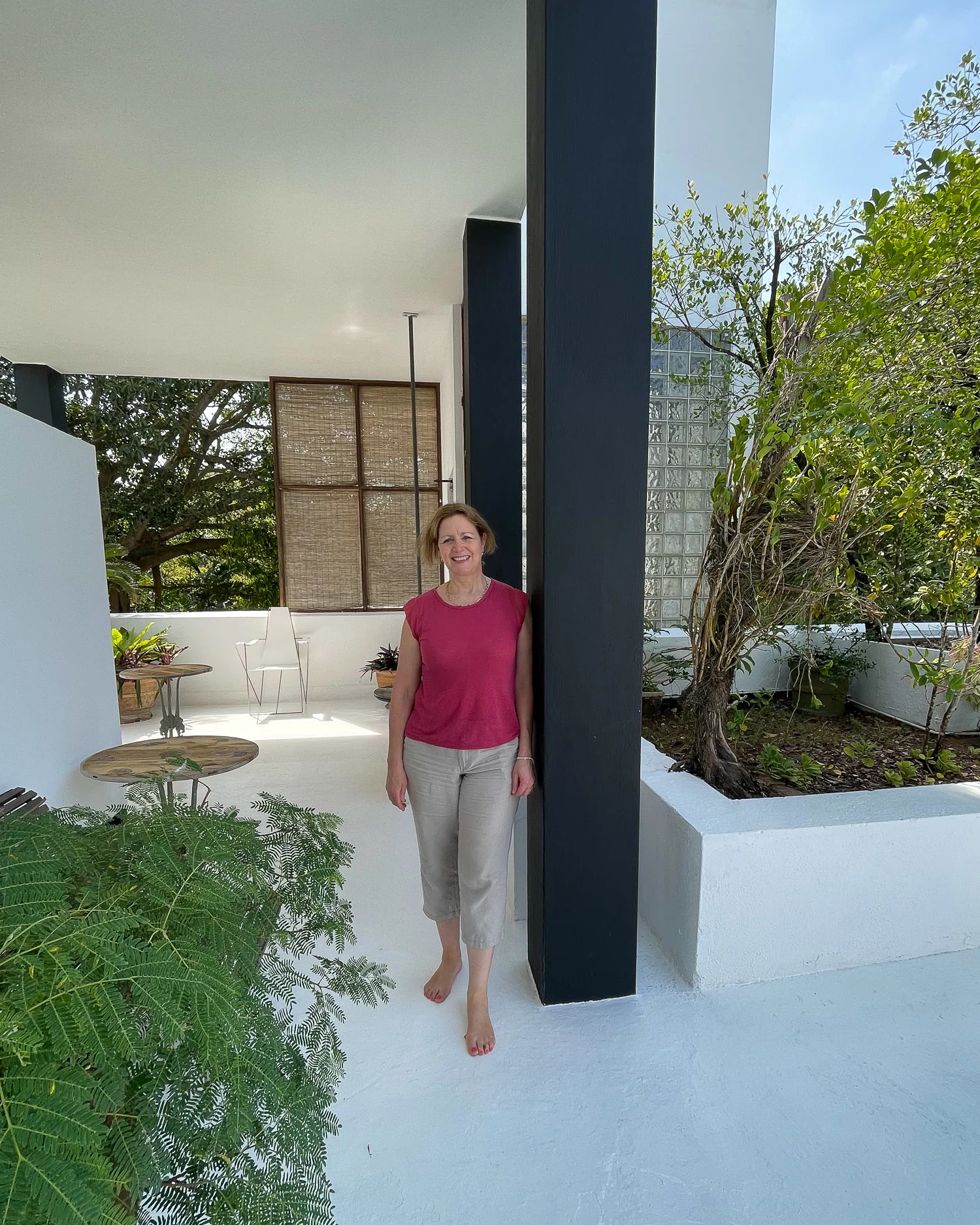
We were smitten with his elegant style that combined traditional Sri Lankan materials with modernist and minimalist influences. Our eyes became attuned to his characteristic black and white interiors softened with natural materials and colours, the use of light wells and interior water gardens and his collaborations with other leading Sri Lankan artists.
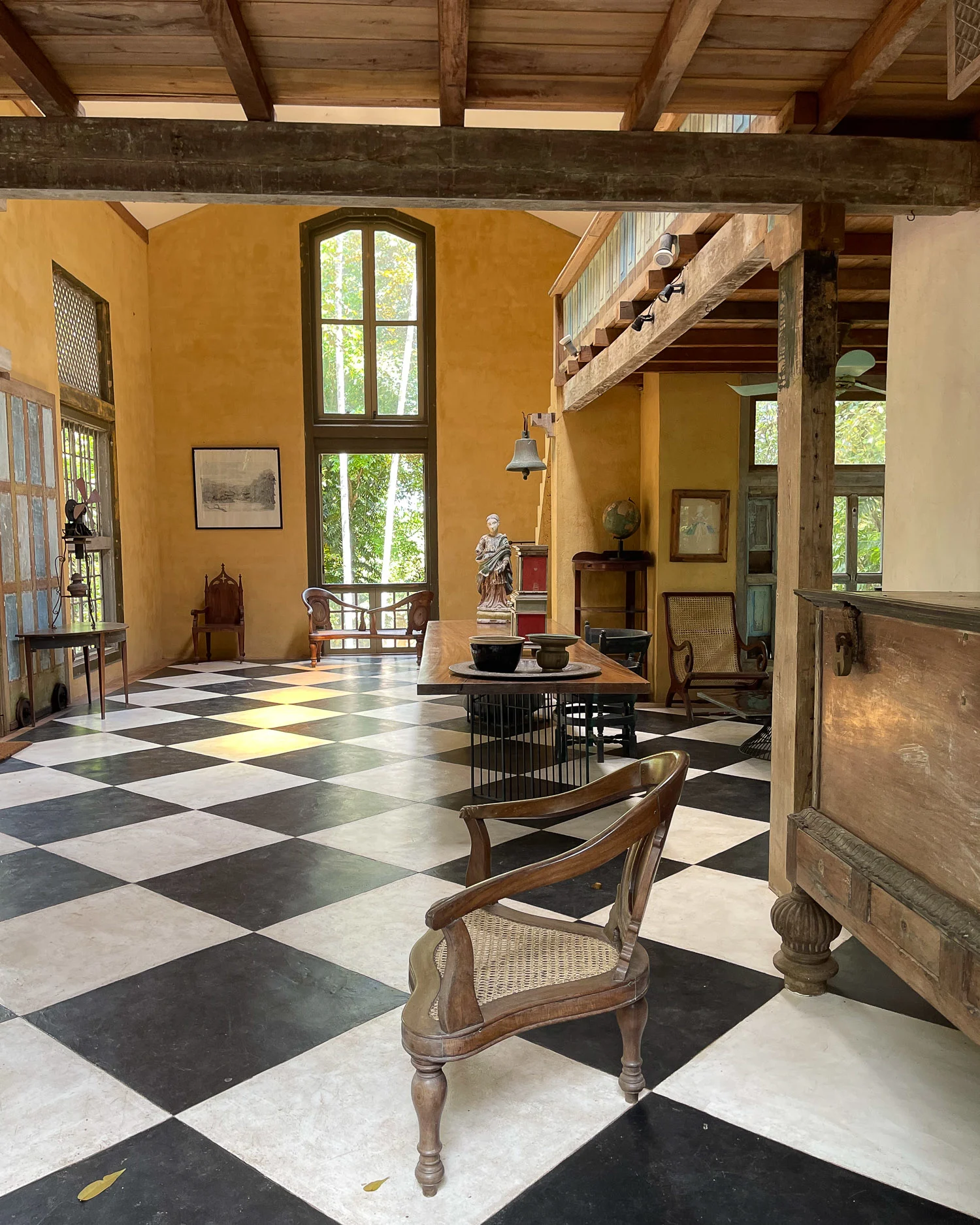
It’s easy to follow a Geoffrey Bawa trail around Sri Lanka, visiting his houses in Colombo and Lunuganga and staying in the hotels he designed such as Heritance Kandala, Club Villa Bentota or Jetwing Lighthouse in Galle. Geoffrey Bawa also designed the New Sri Lankan Parliament and Seema Malaka temple on Beira Lake in Colombo and his style influenced a generation of creatives, such as the founders of Barefoot and Paradise Road. If you love art and design, you’ll enjoy dipping into the world of Geoffrey Bawa as we did.
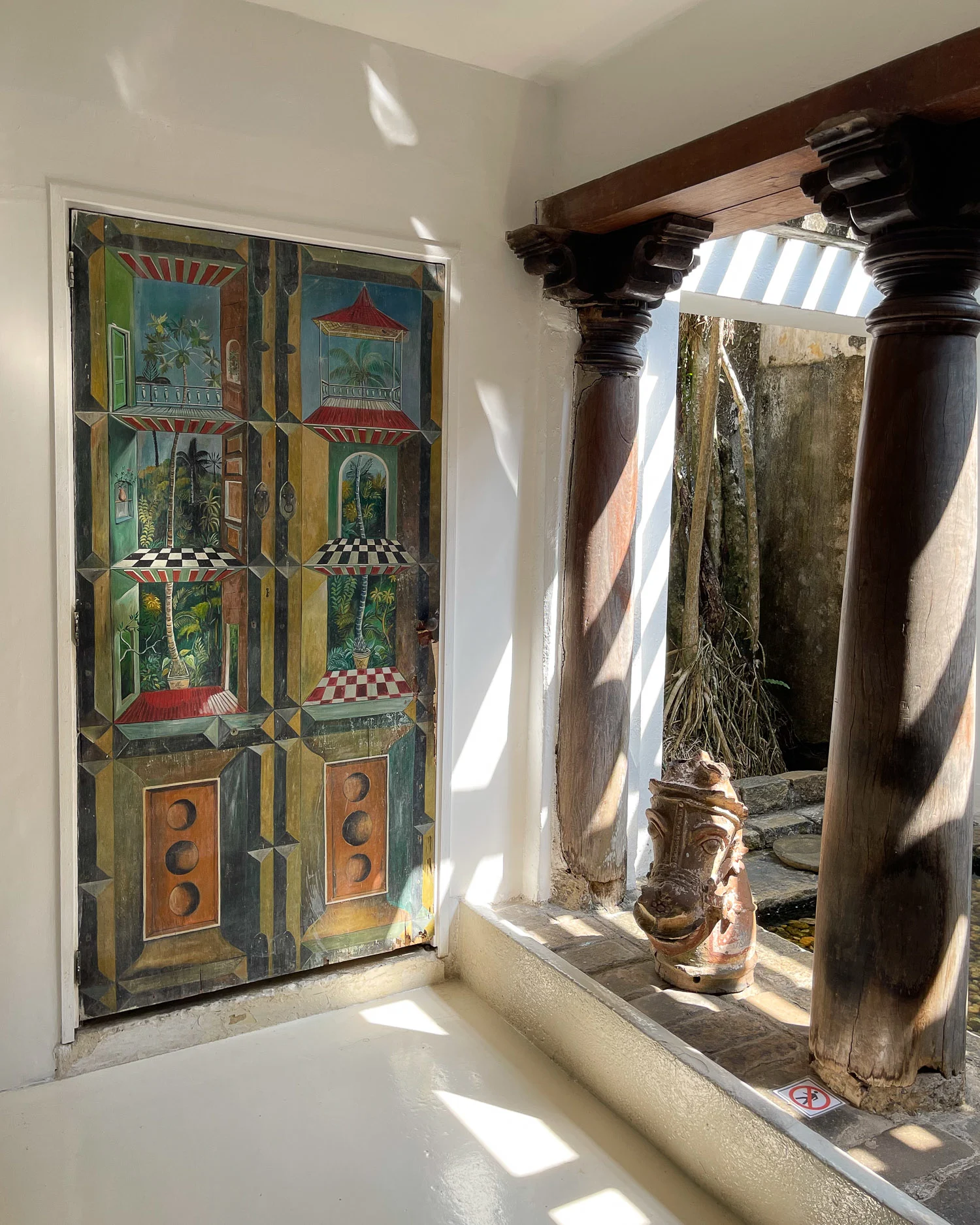

Need help to design your dream holiday? We’ve partnered with UK travel advisor Luxeco Holidays to create your personalised itinerary
Where else?
You may notice that the highlights I’ve mentioned are mostly in the central, west and southern regions of Sri Lanka. These are the places that most visitors to Sri Lanka cover on a 2-3 week trip, making a loop of the Cultural Triangle, Hill Country, southern beaches and west coast.
The east coast is also beautiful with Trinkomalee port and a string of beaches that are less developed than the south coast. However the best season to visit is May to October, when the monsoon rains are hitting the west and south coasts, and we didn’t have time on this trip.
The north of Sri Lanka around Jaffna is another area we didn’t visit, and this part of the country is less developed for tourism, having been affected by the civil war that ended in 2009. It’s now open and welcoming visitors, and we’d love to visit on a future trip.
Read Next
Read my article for Sri Lanka travel tips – information to plan your perfect trip
The perfect Sri Lanka 2 week itinerary
Our Kerala itinerary – amazing 10 day trip in southern India
Sri Lanka travel tips – information to plan your perfect trip
15 fun things to do in Kochi (2024)- Kerala India
Pin it
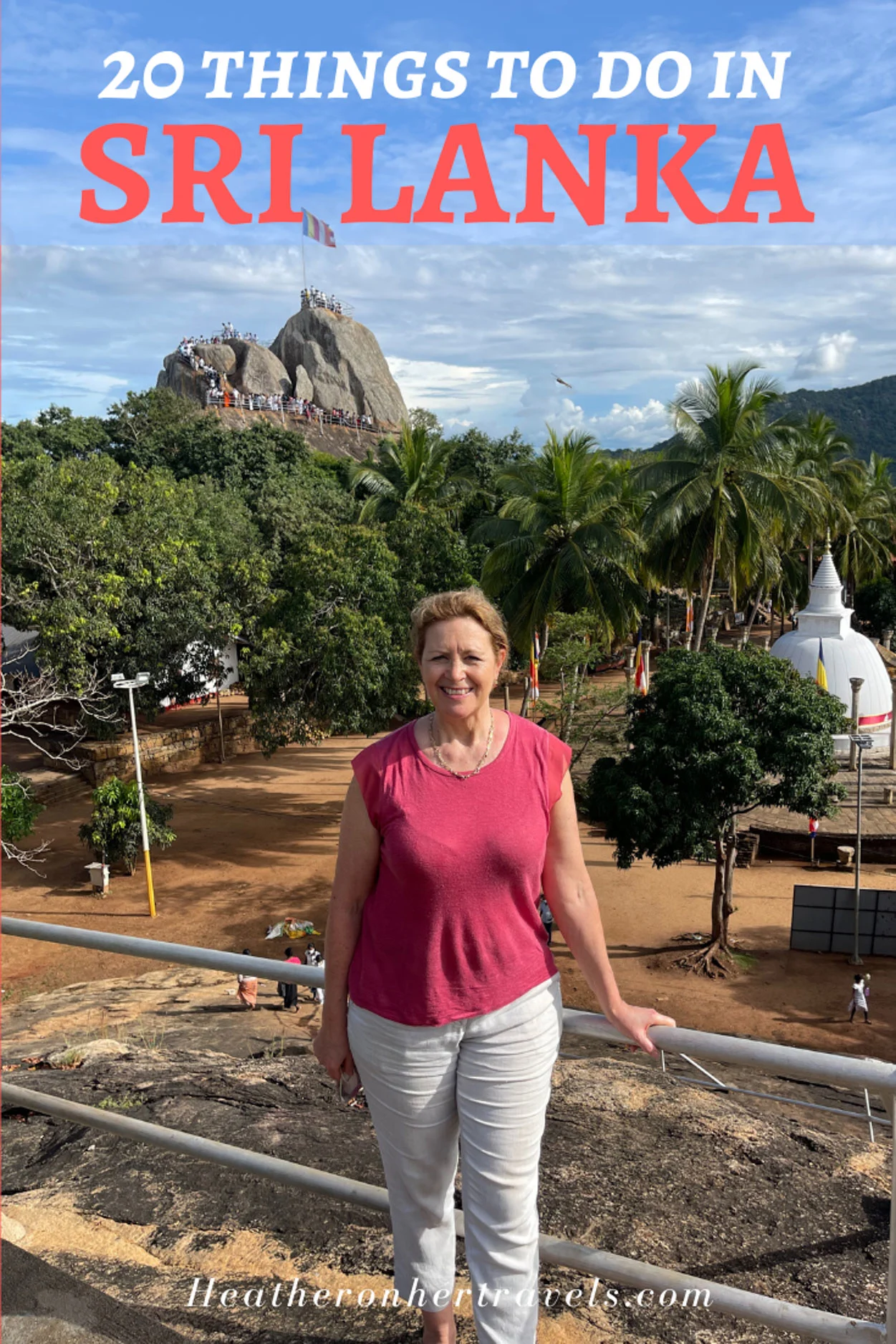
This article is originally published at Heatheronhertravels.com

